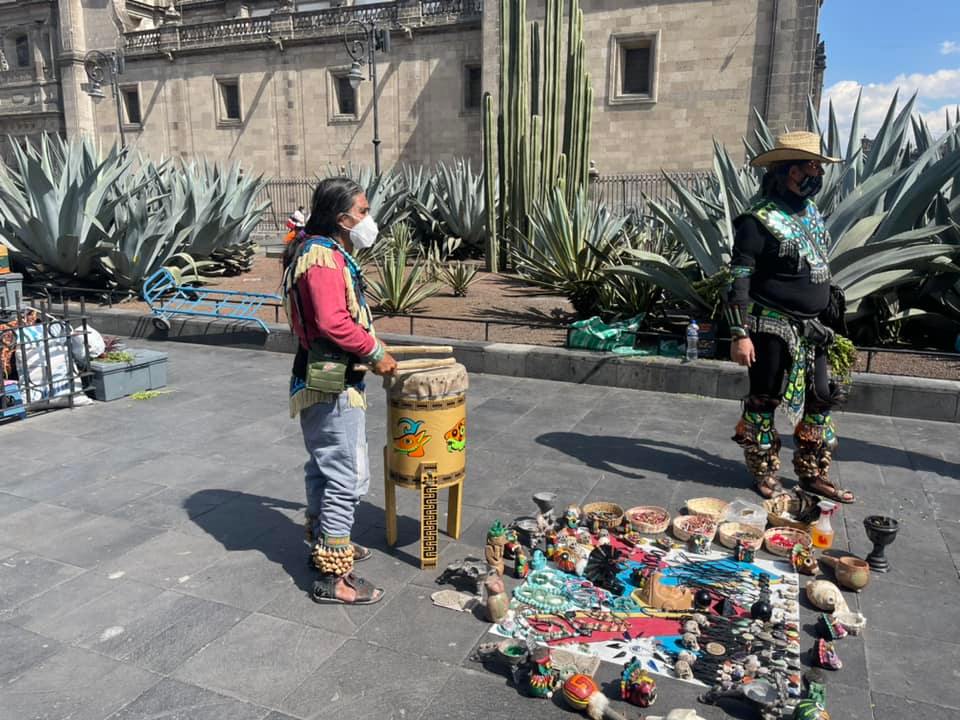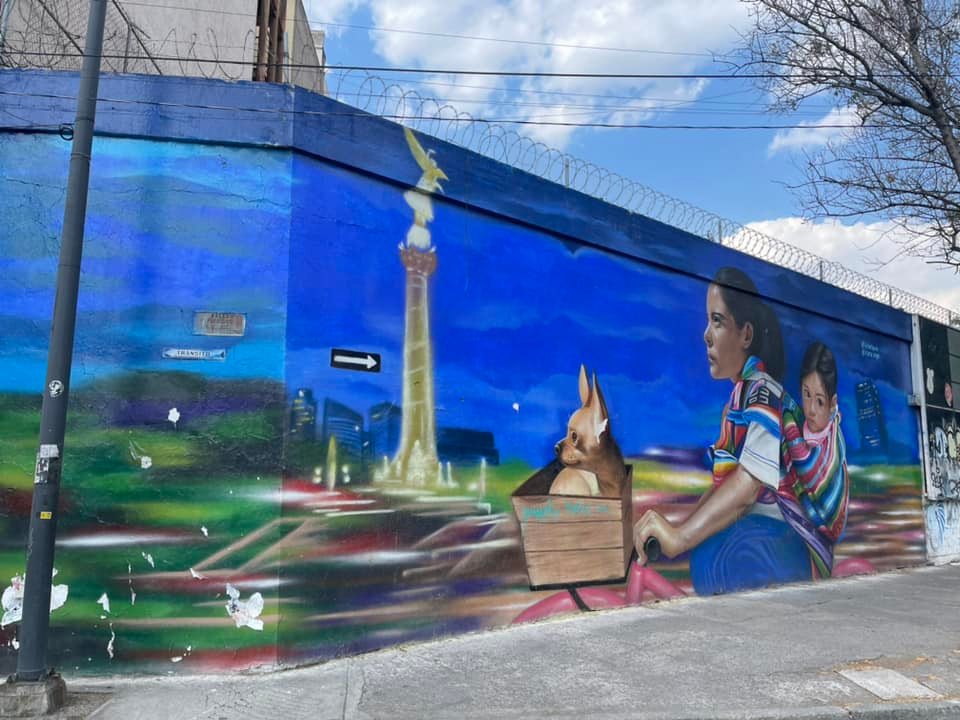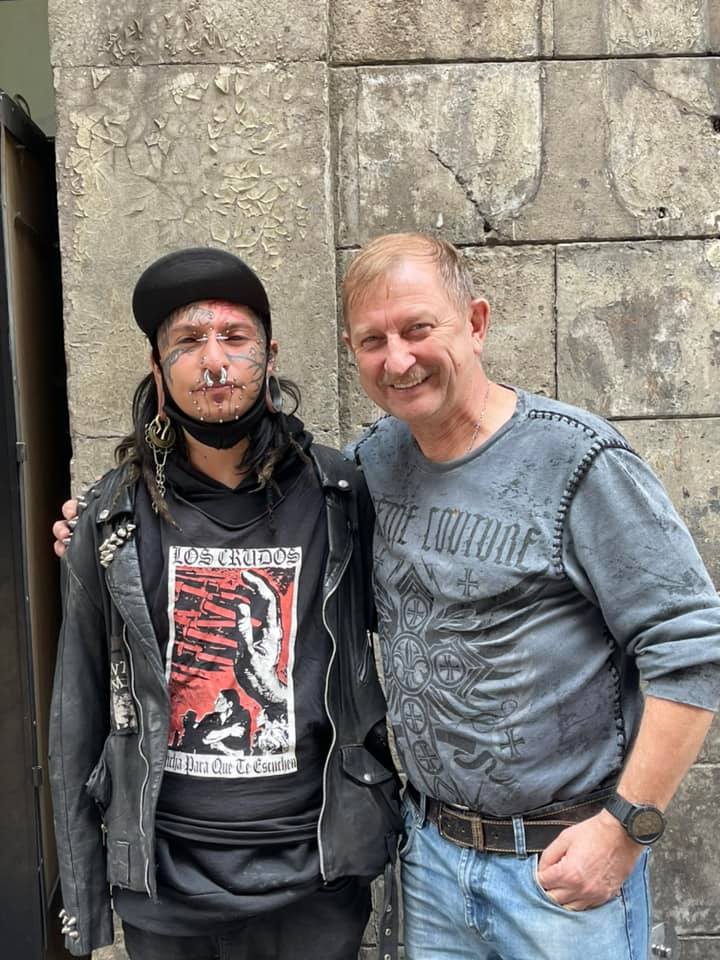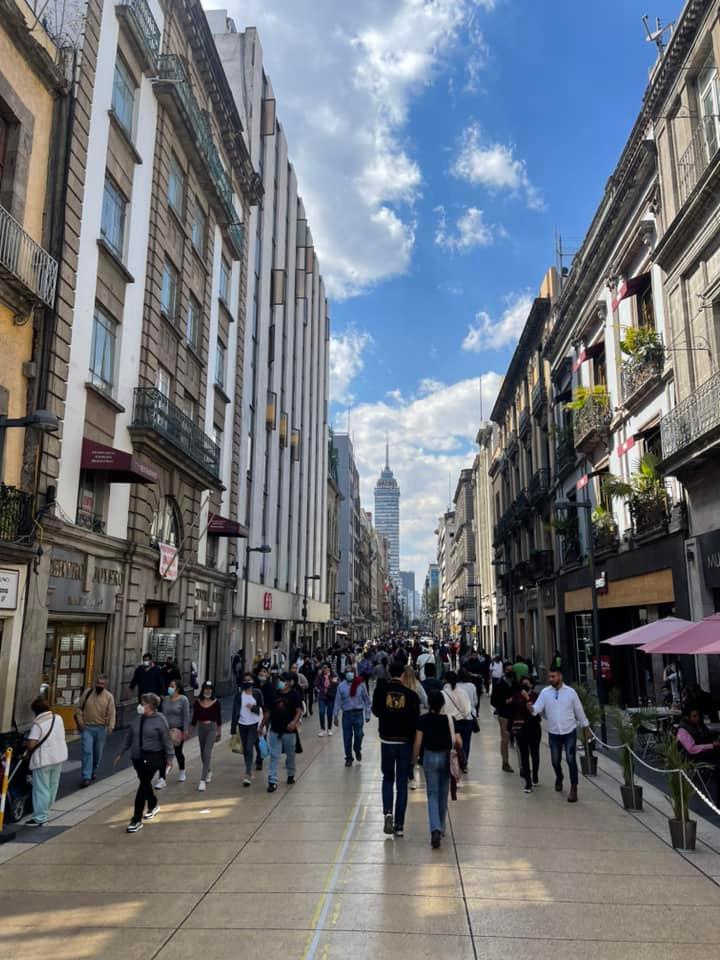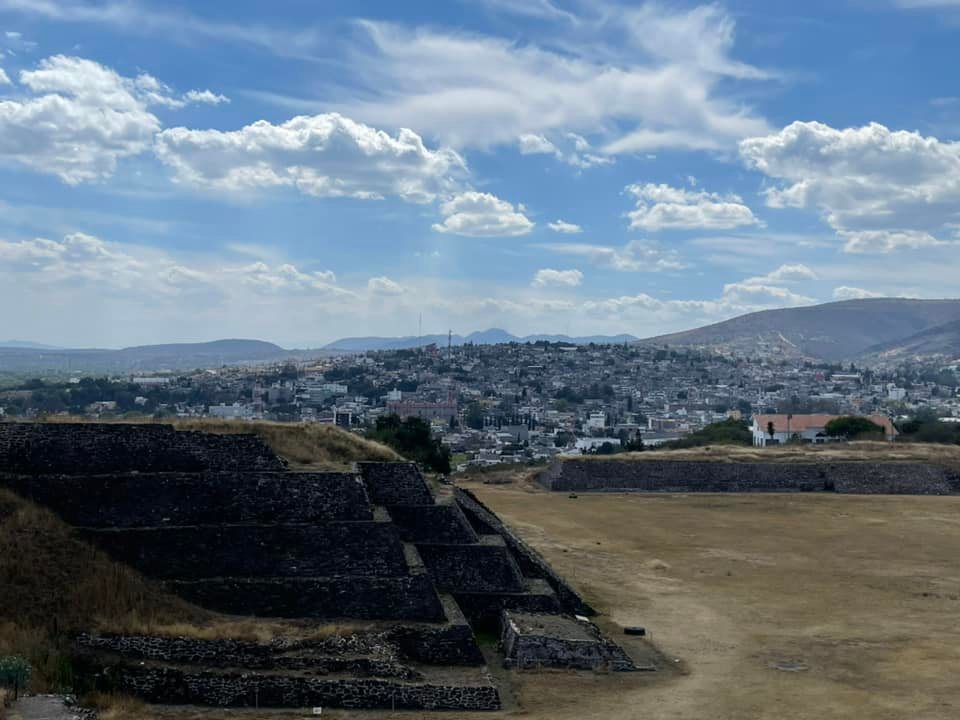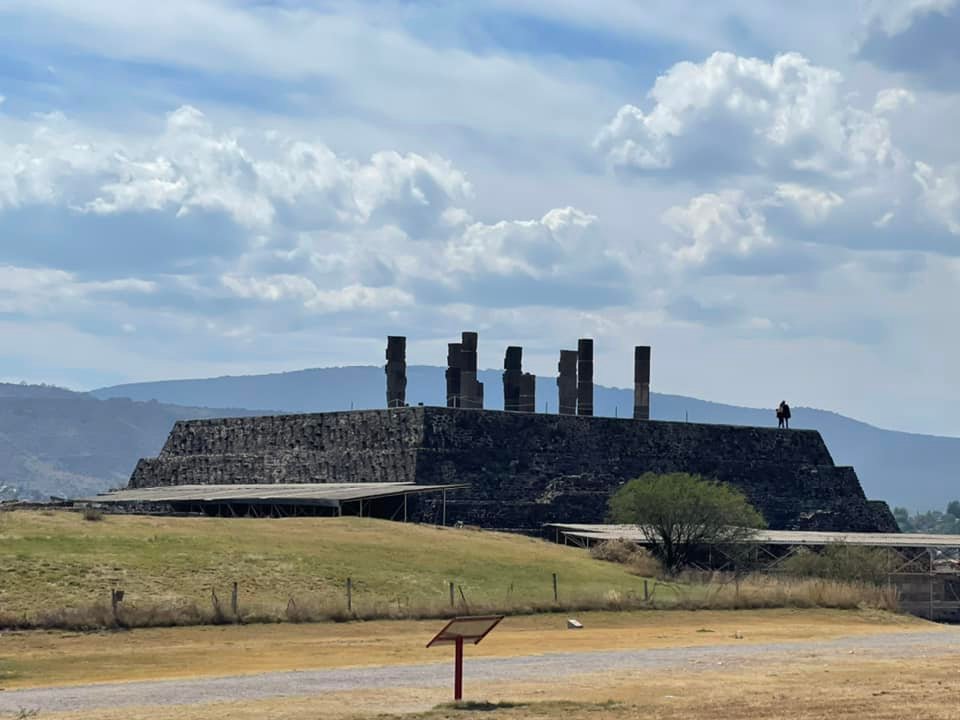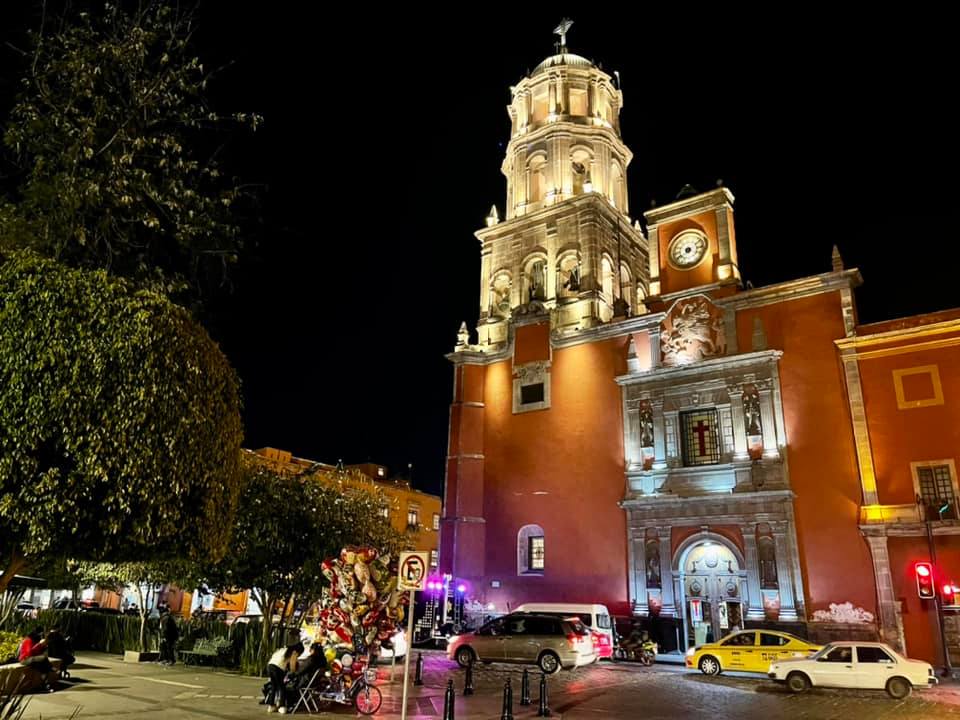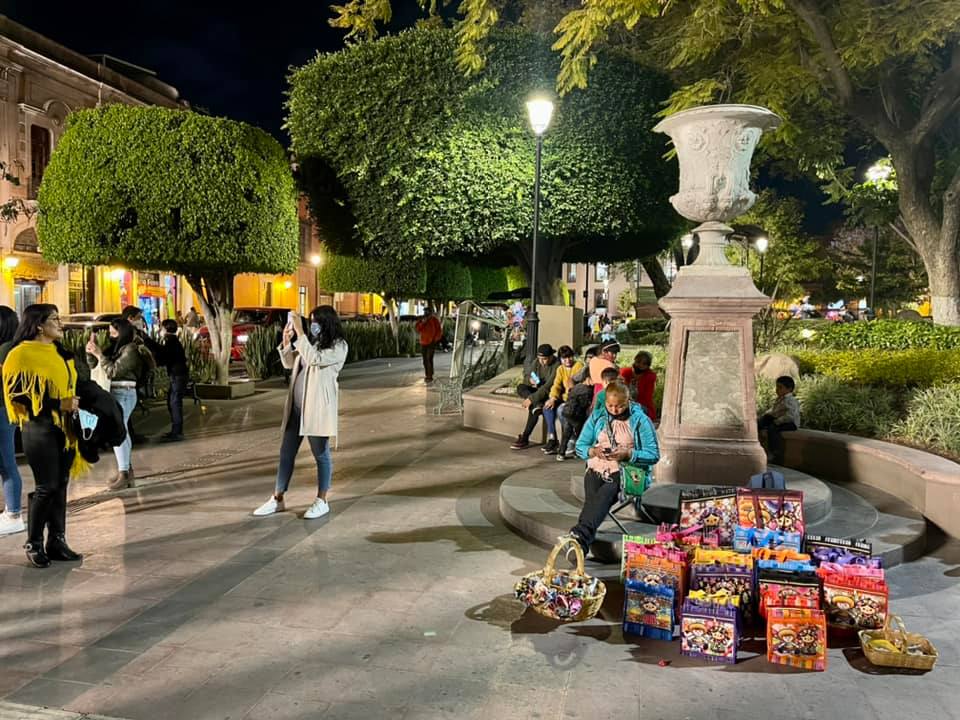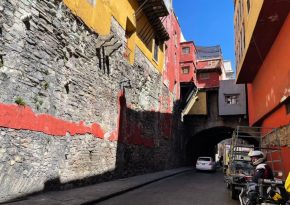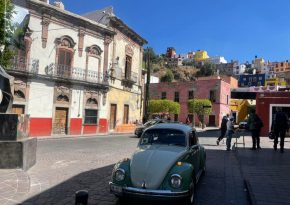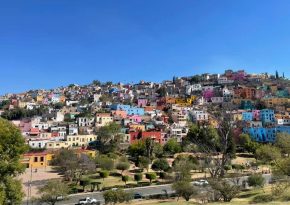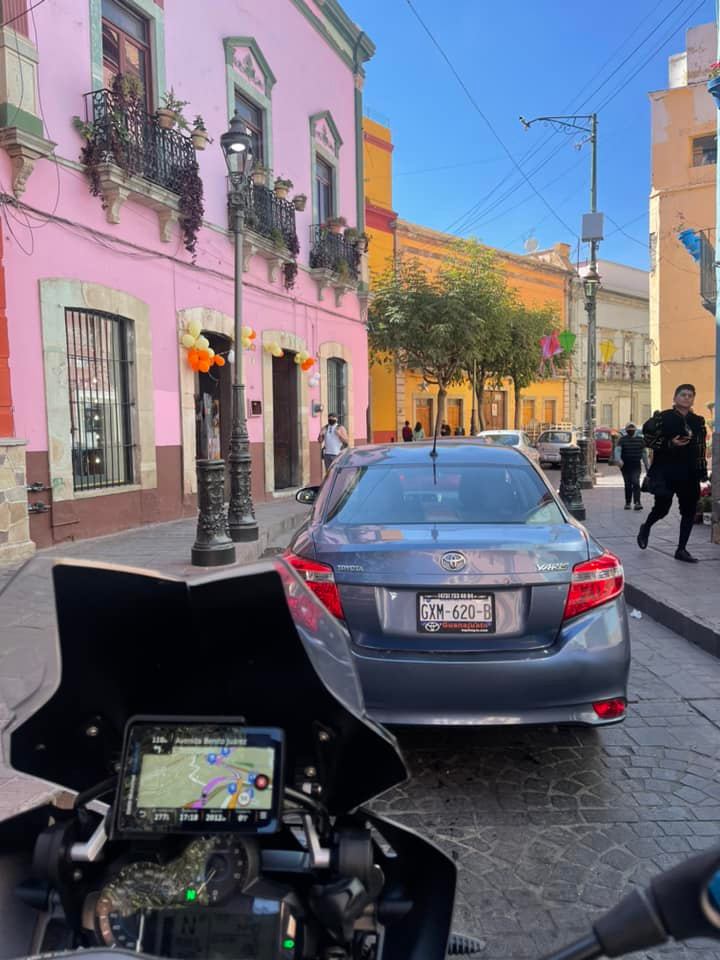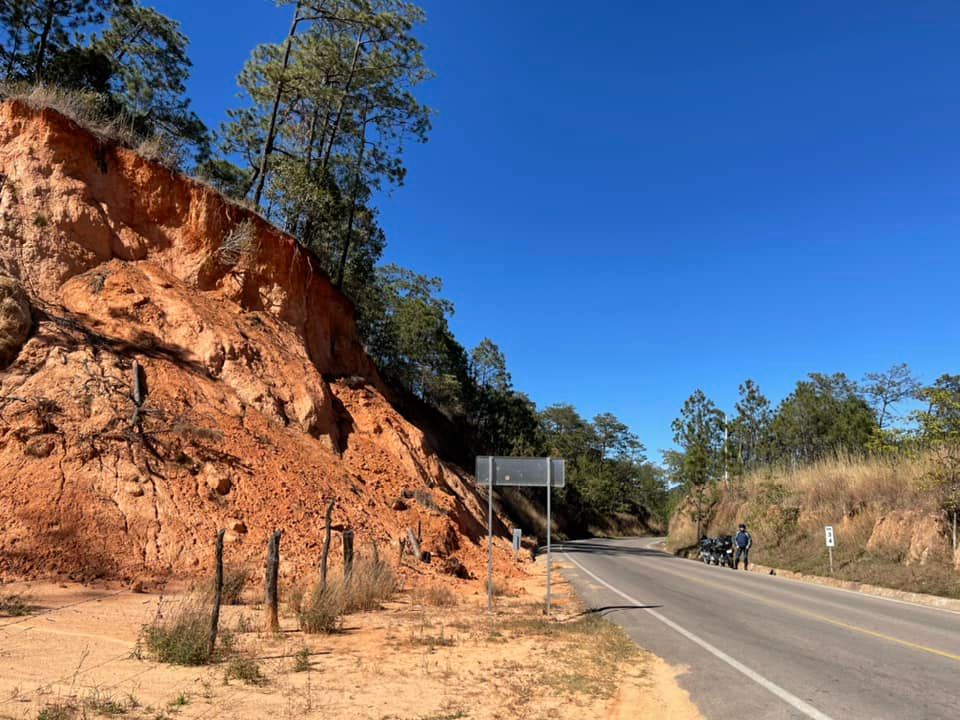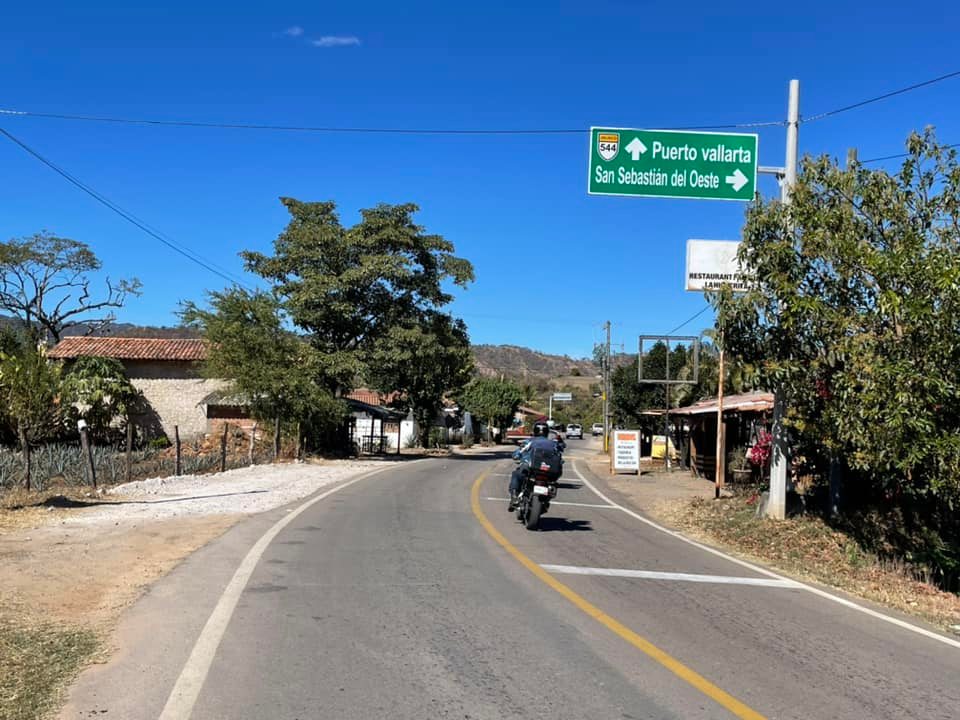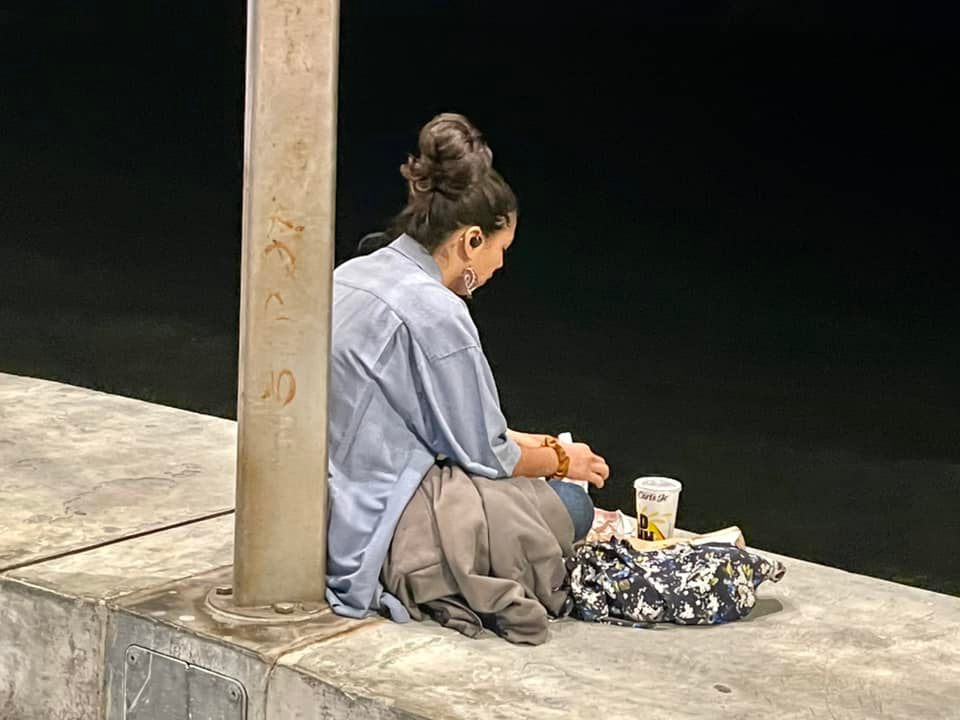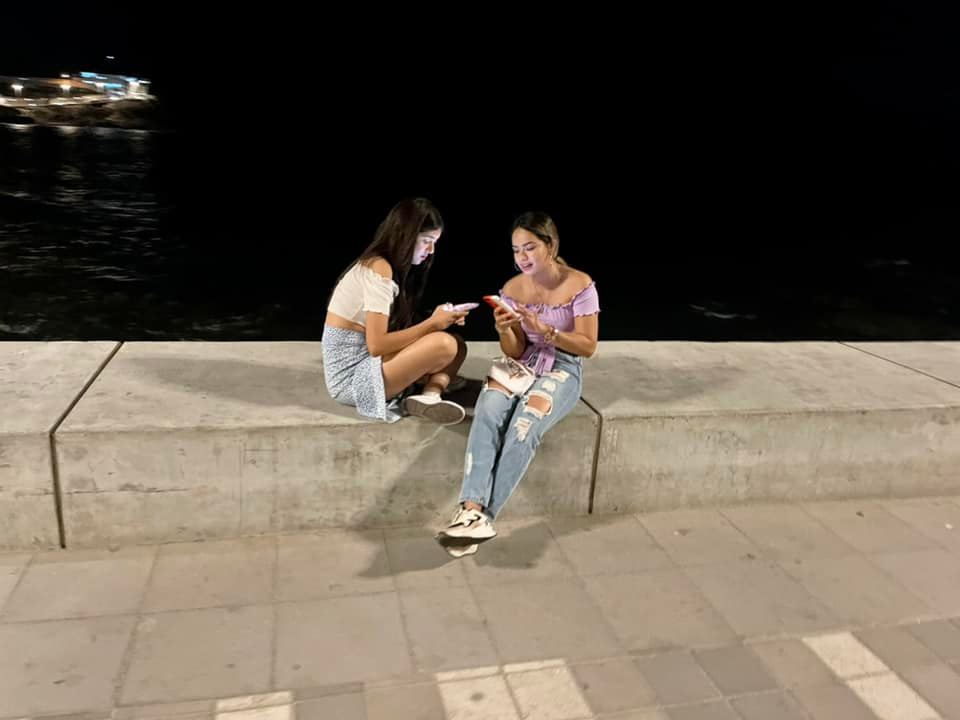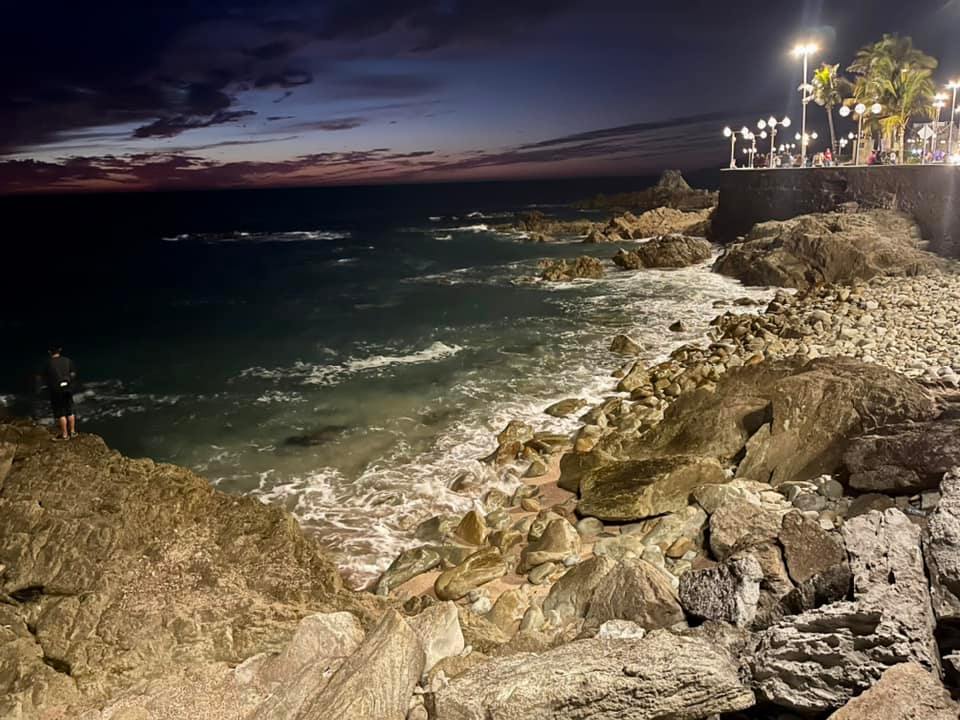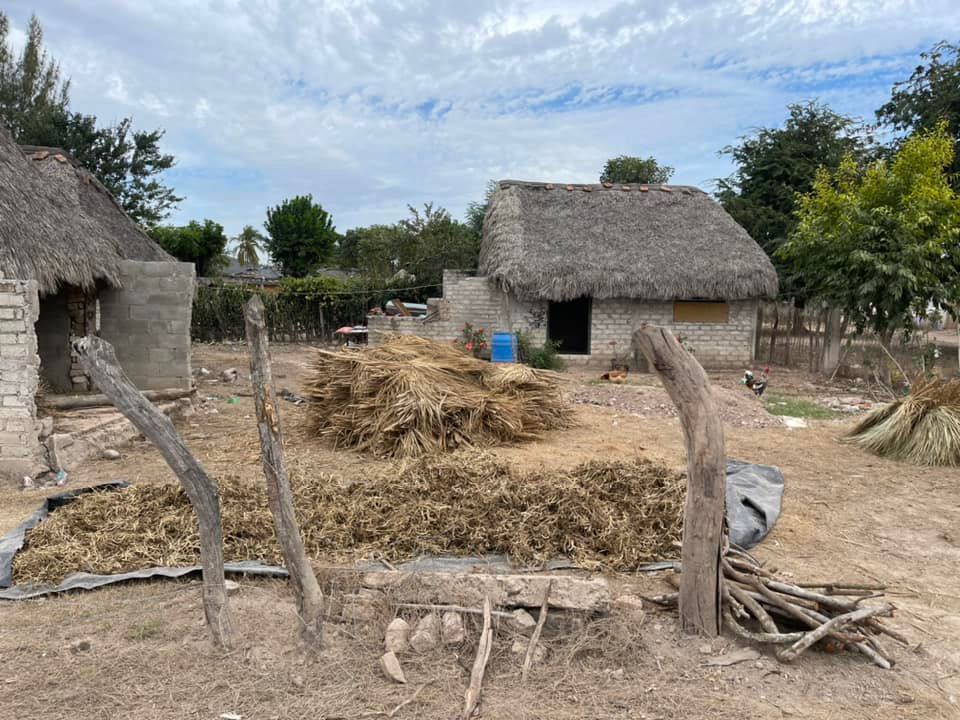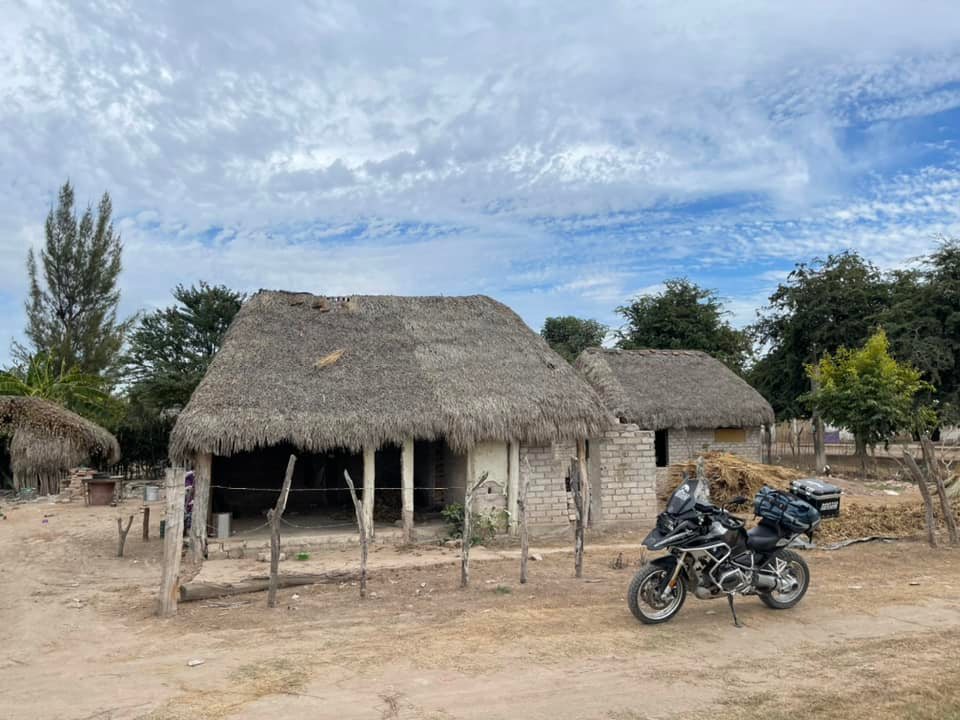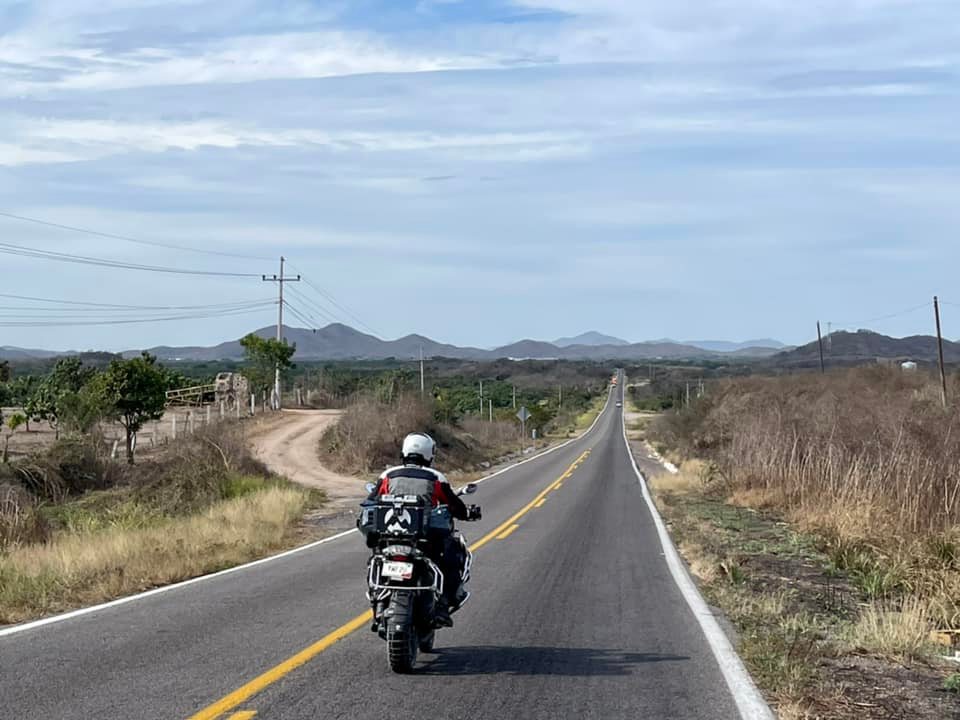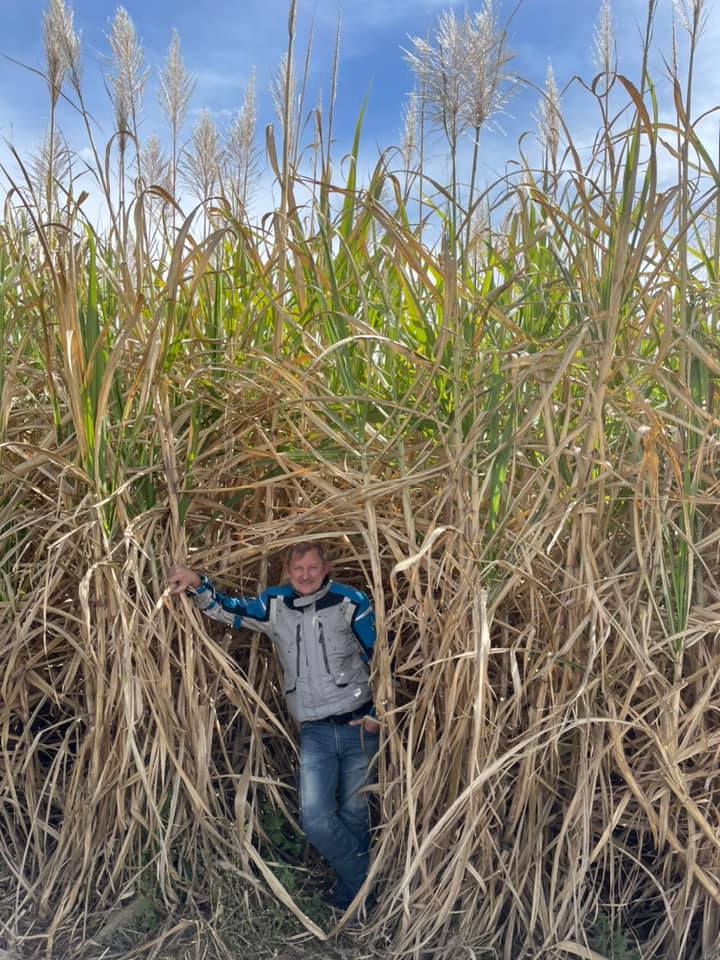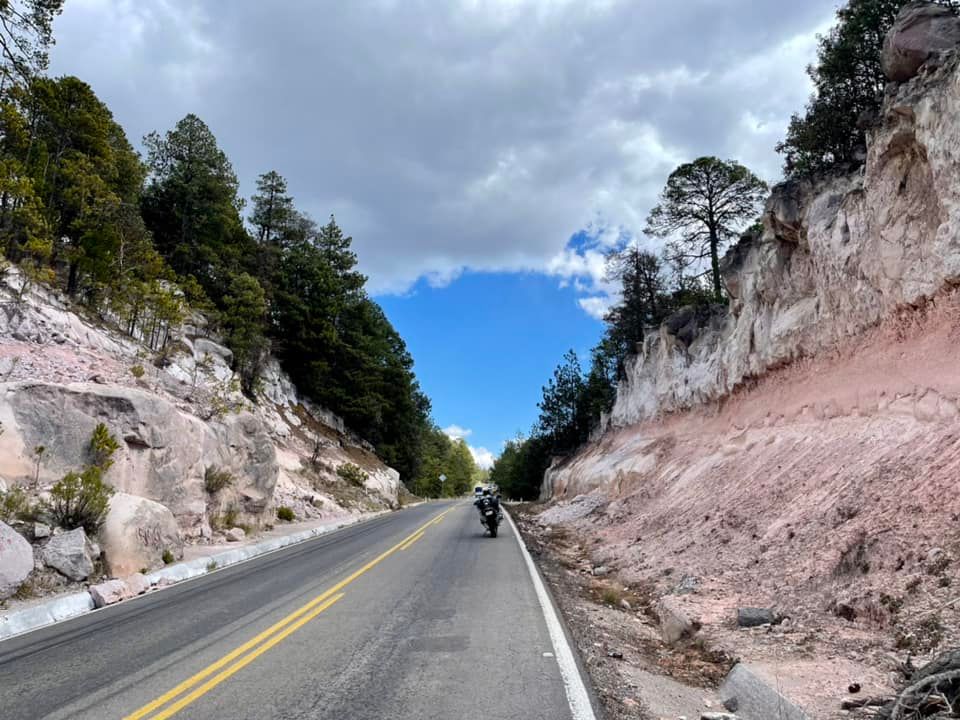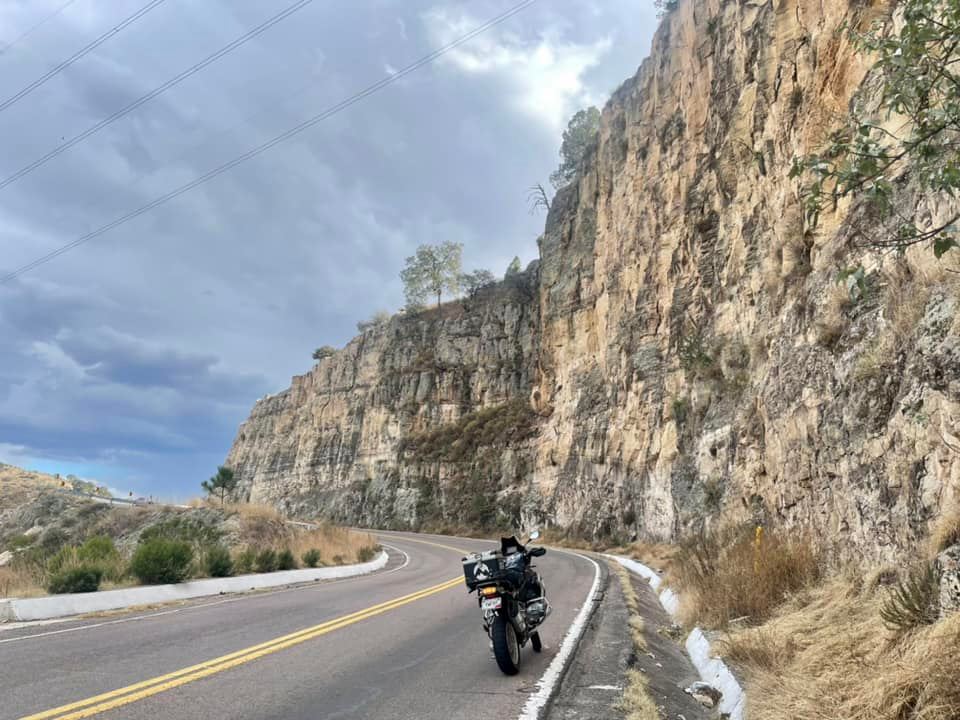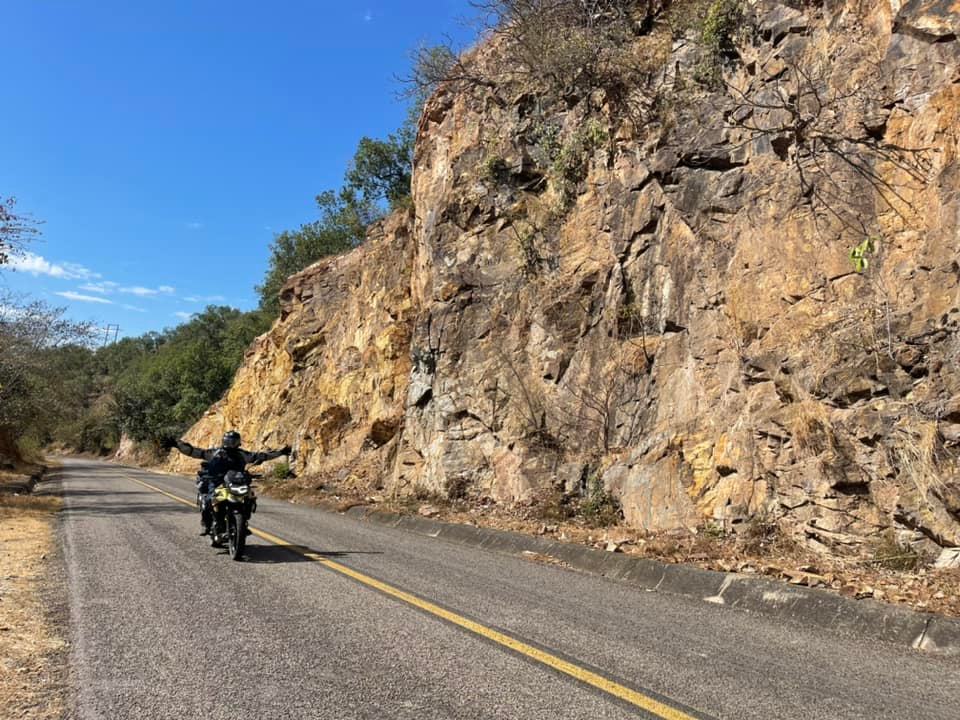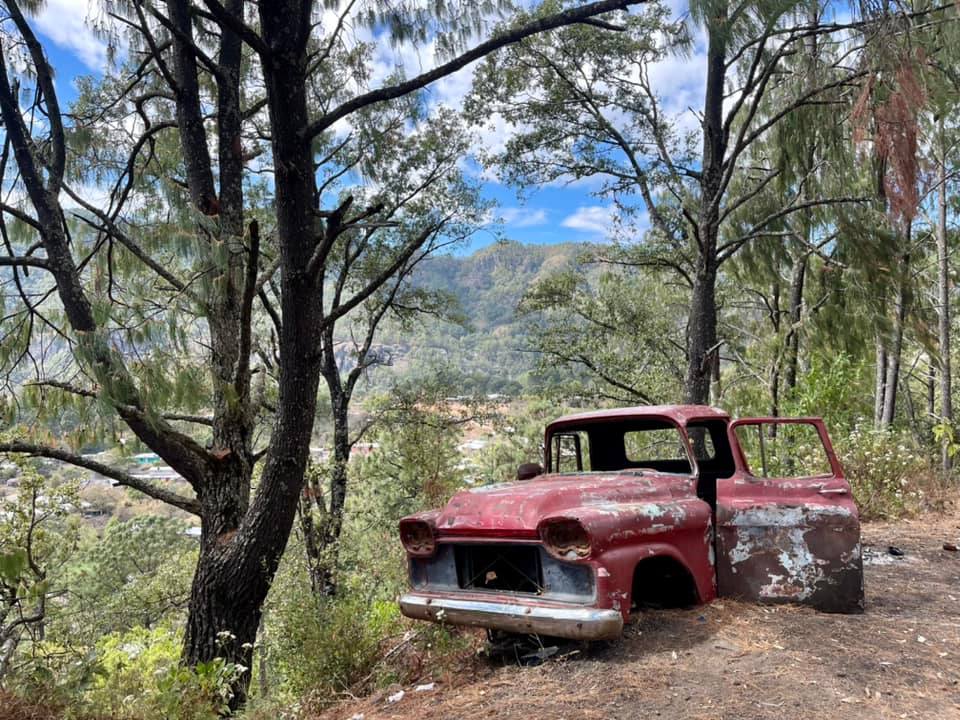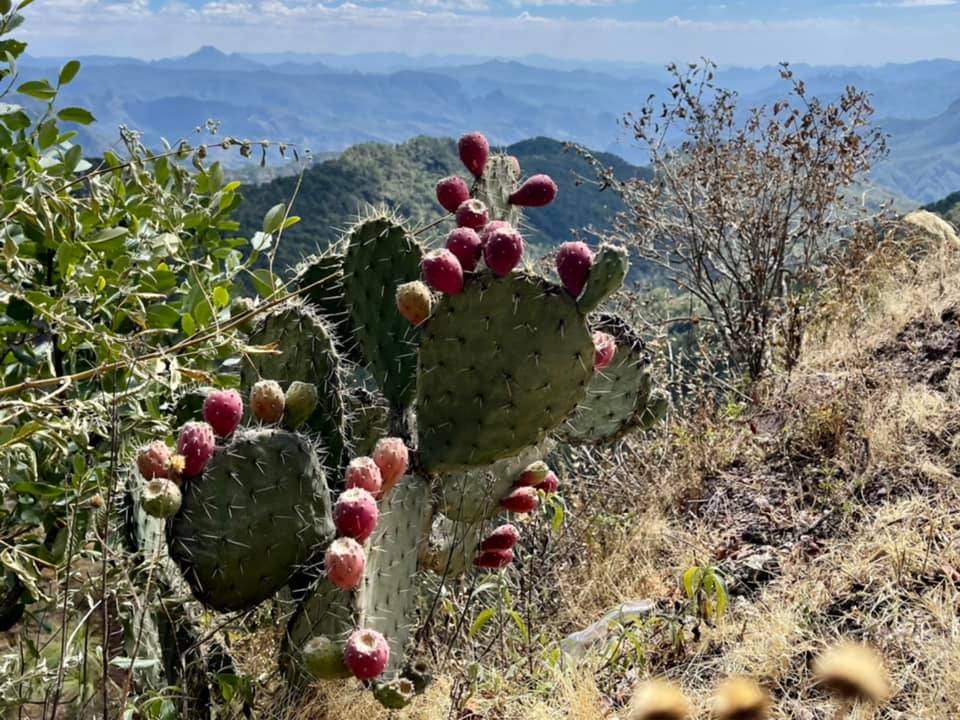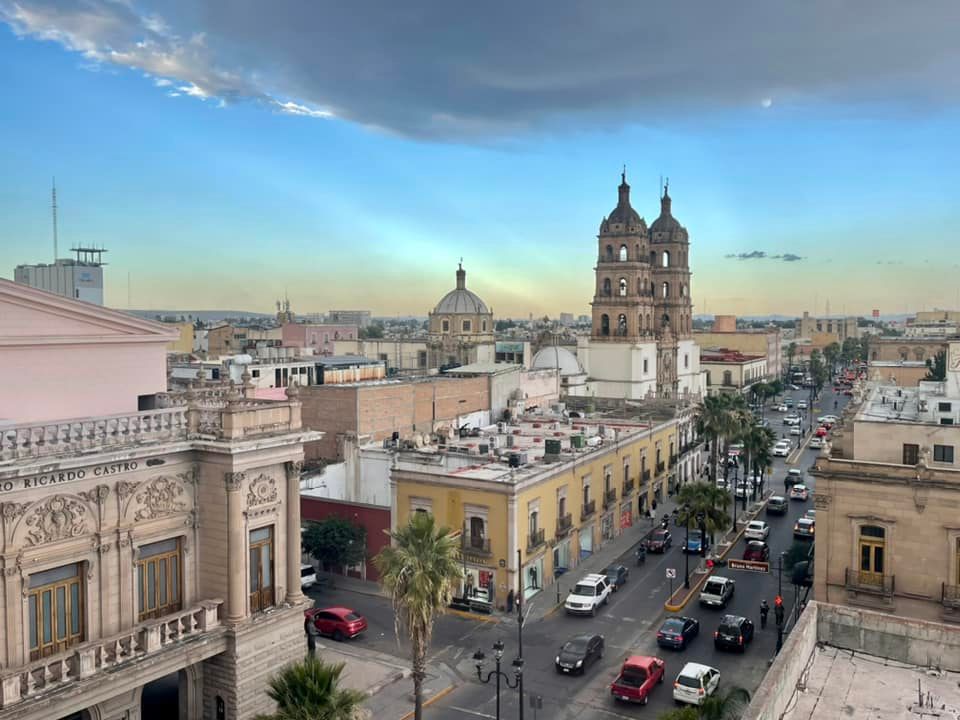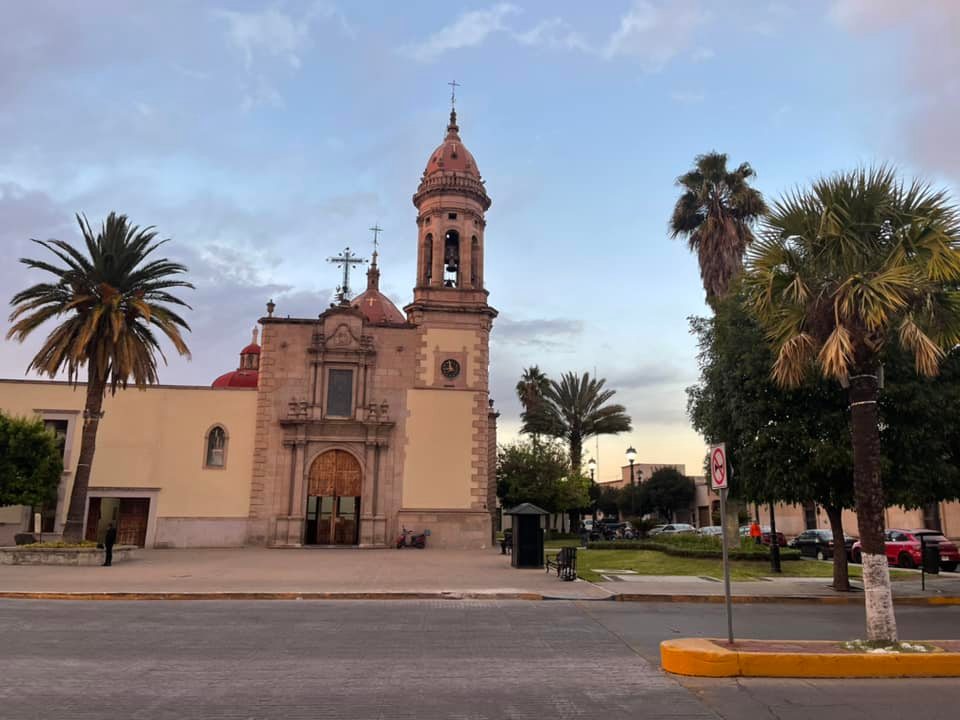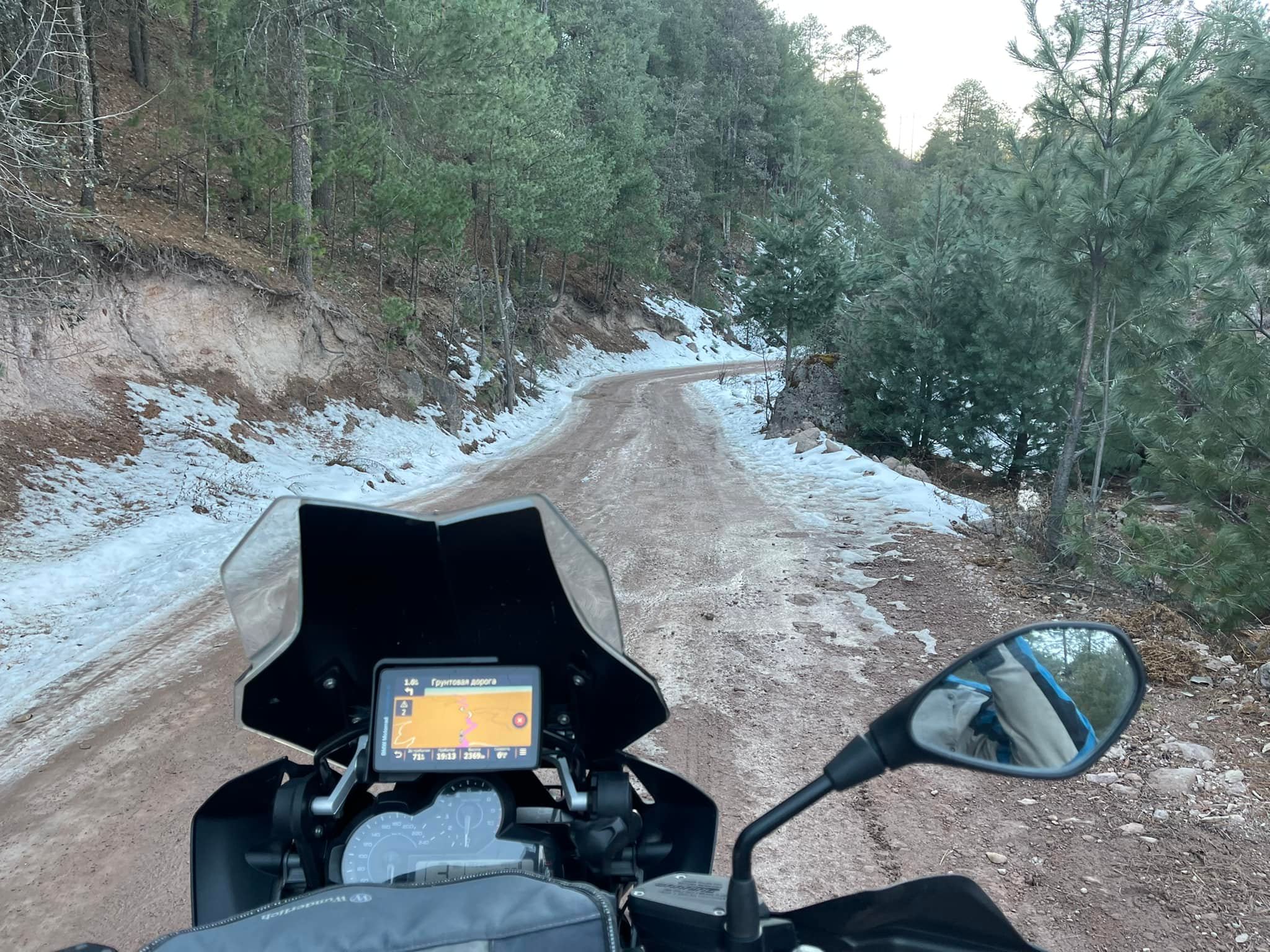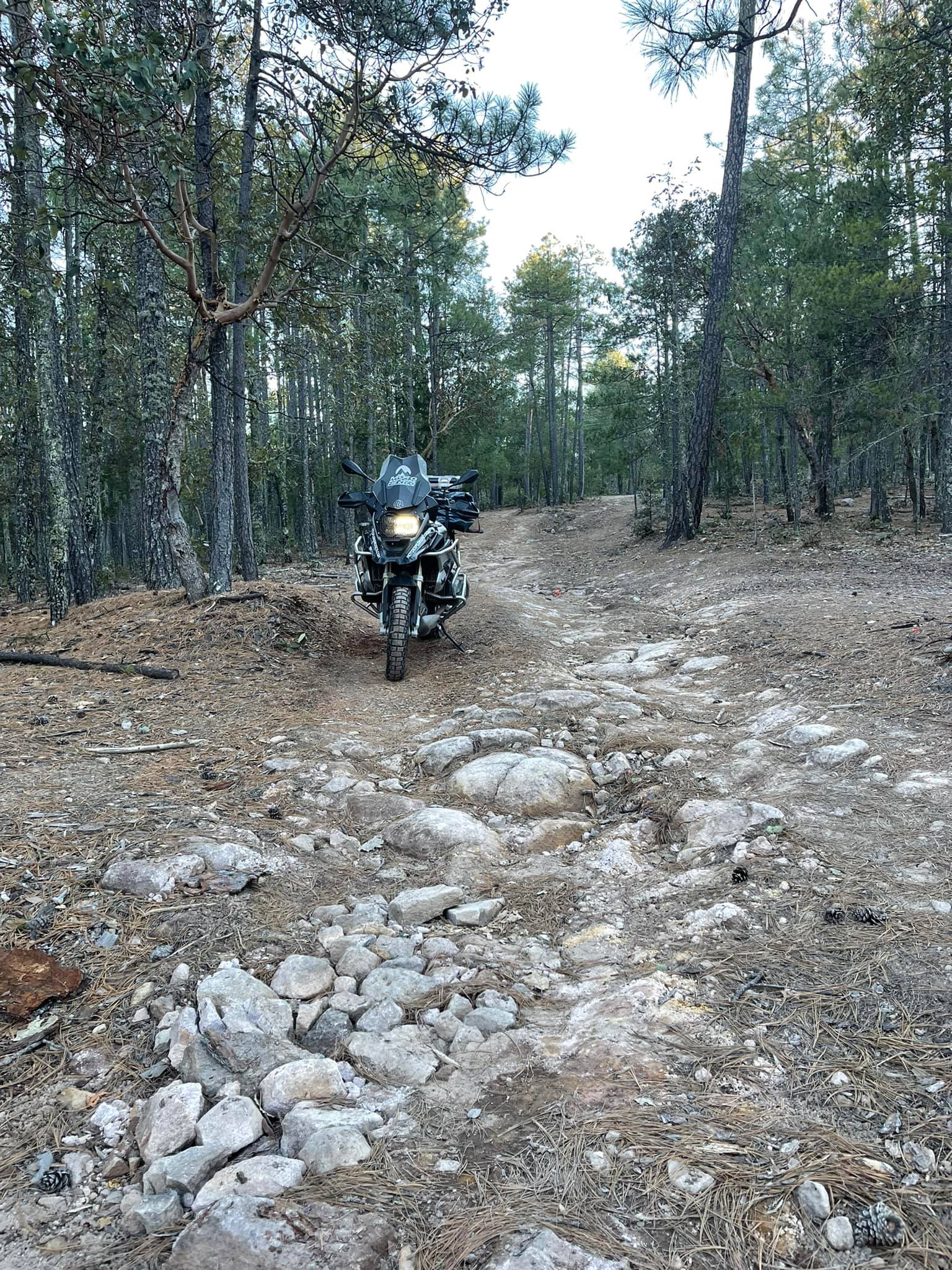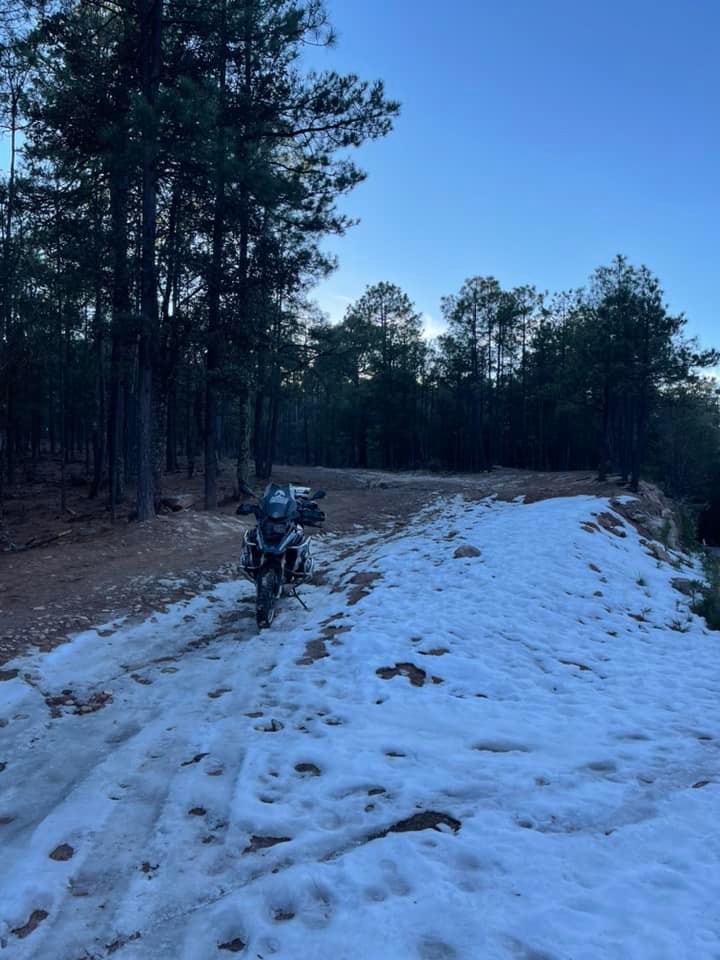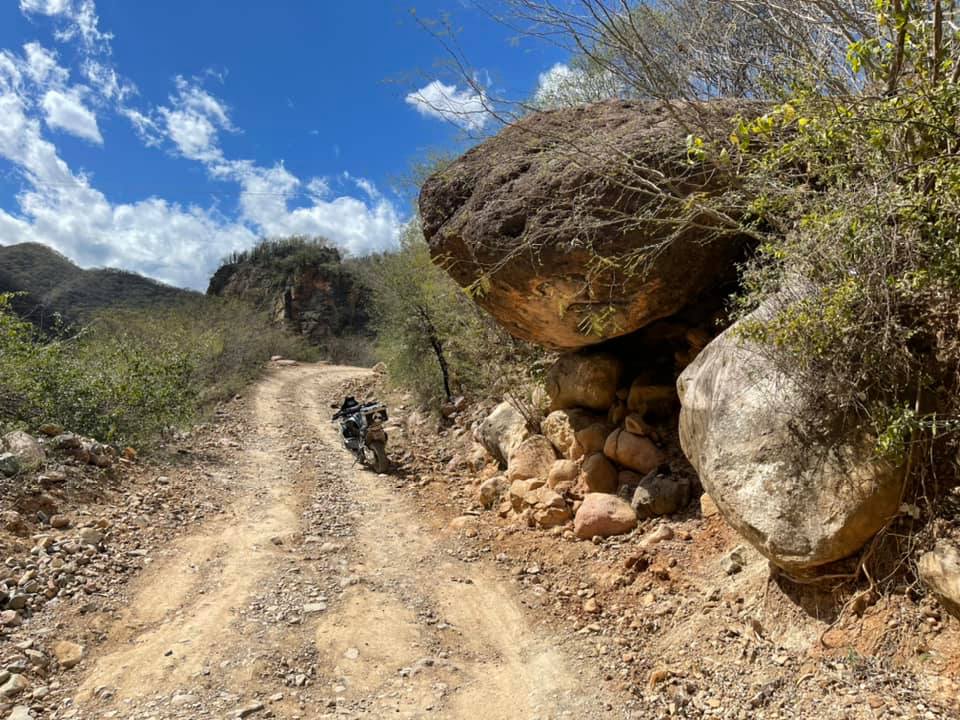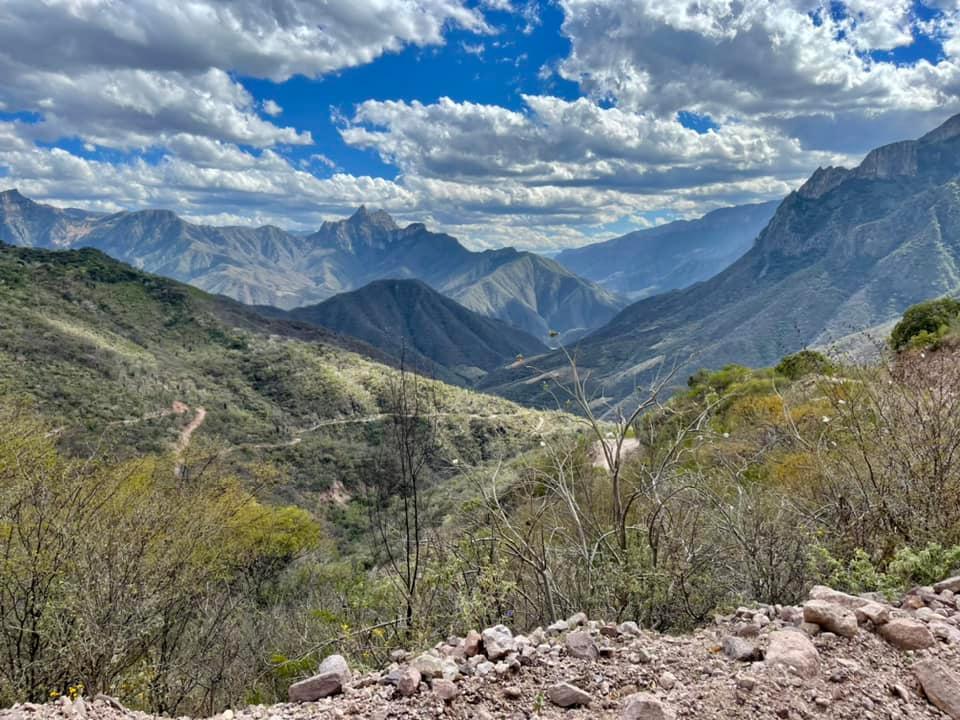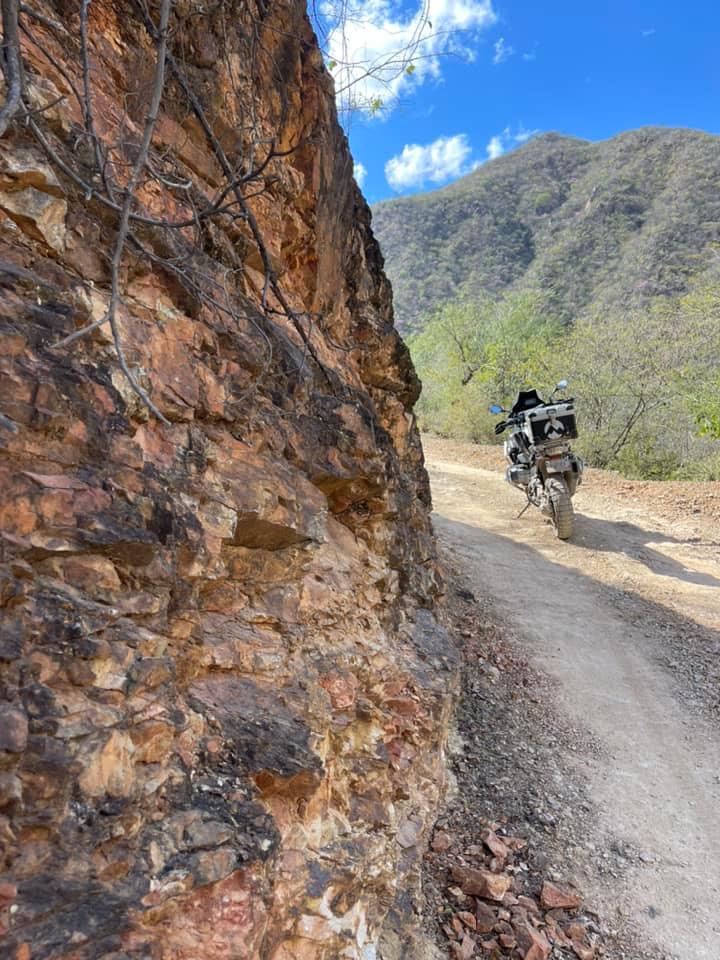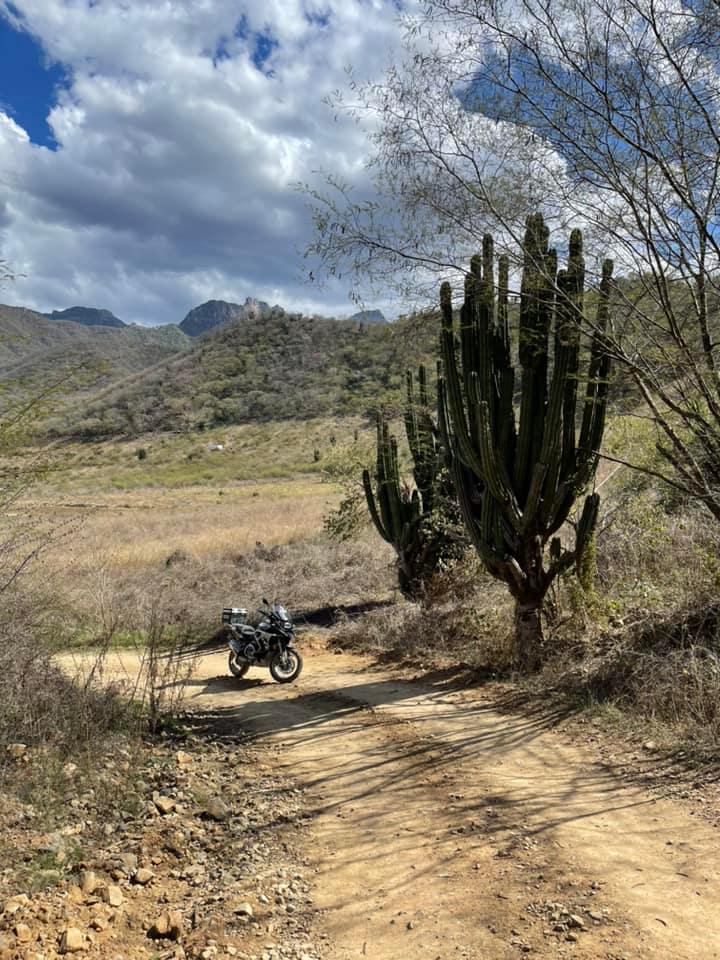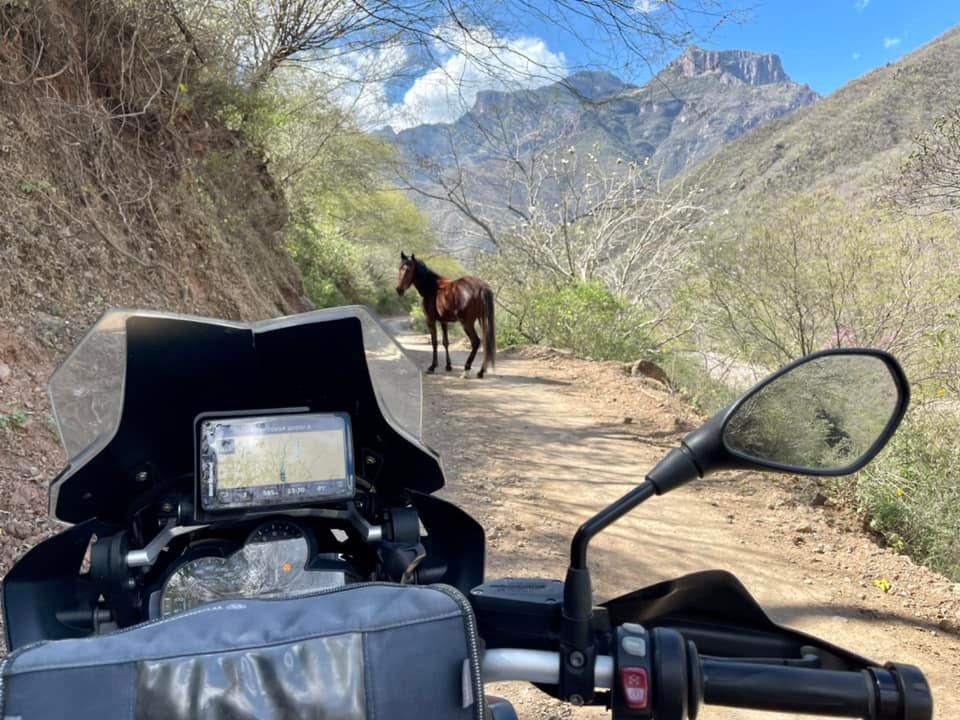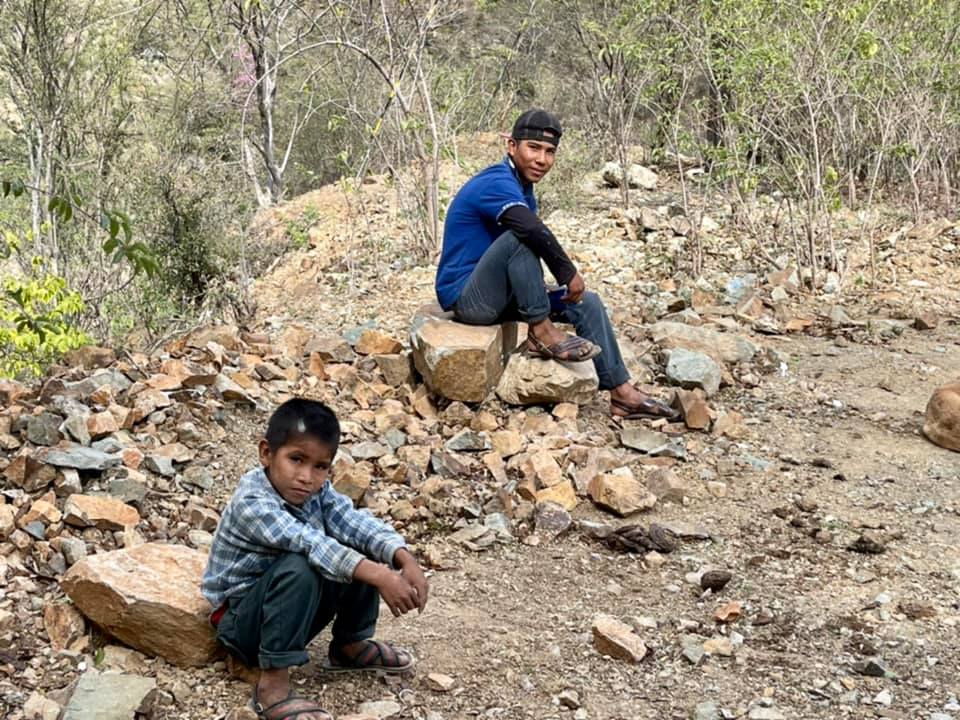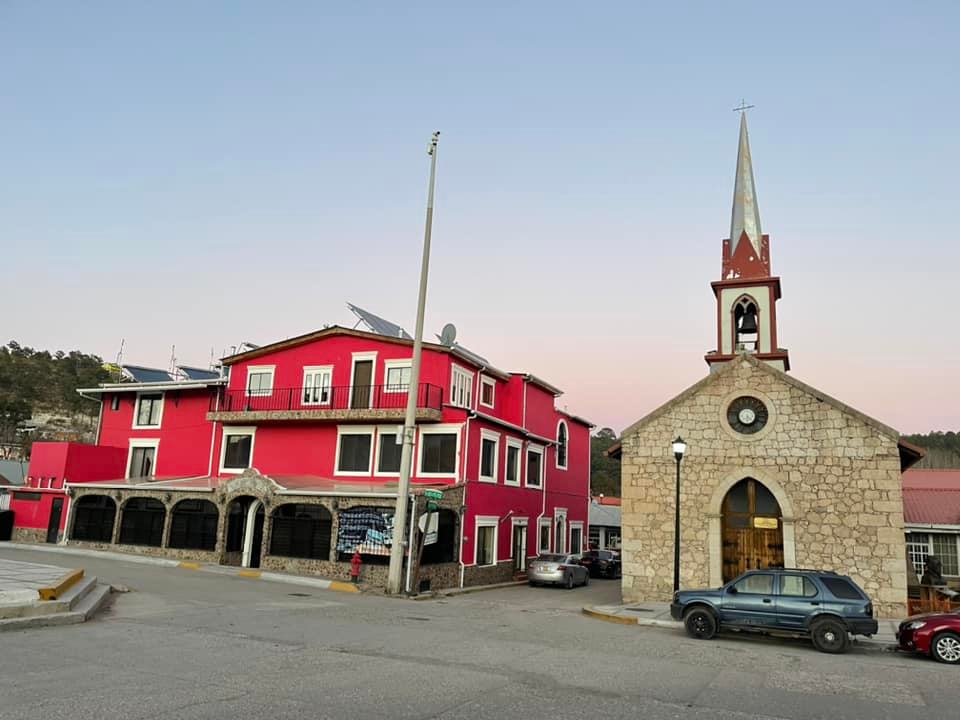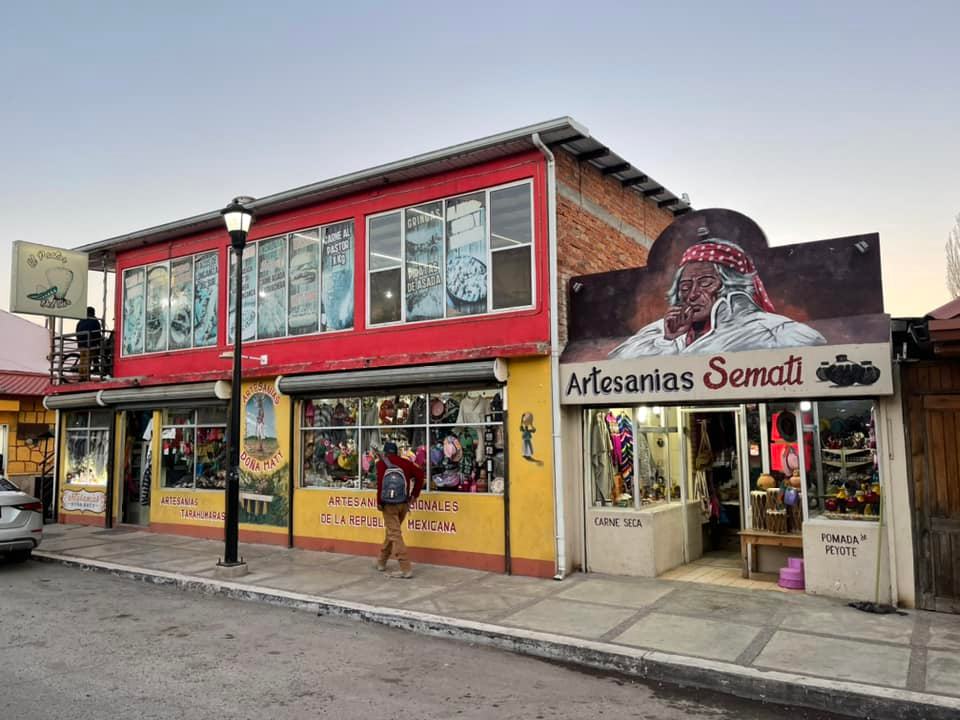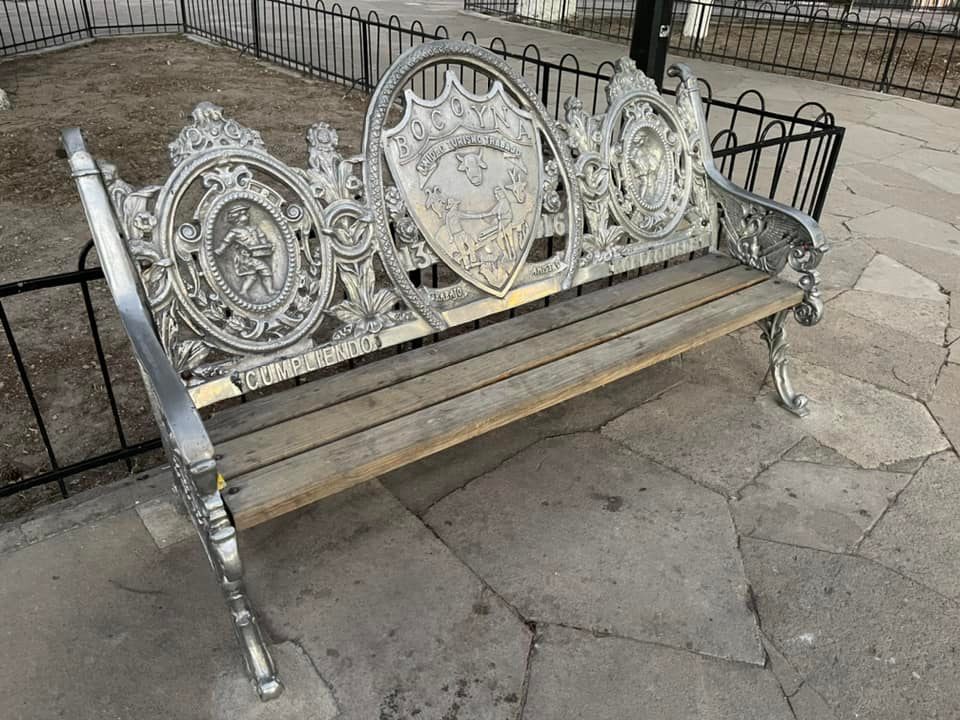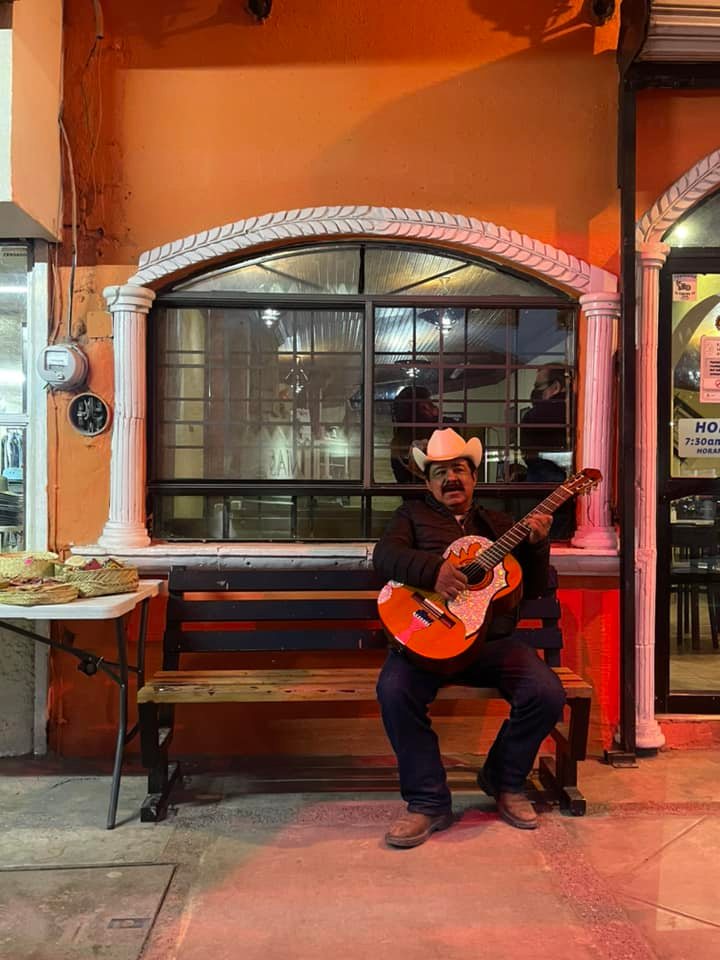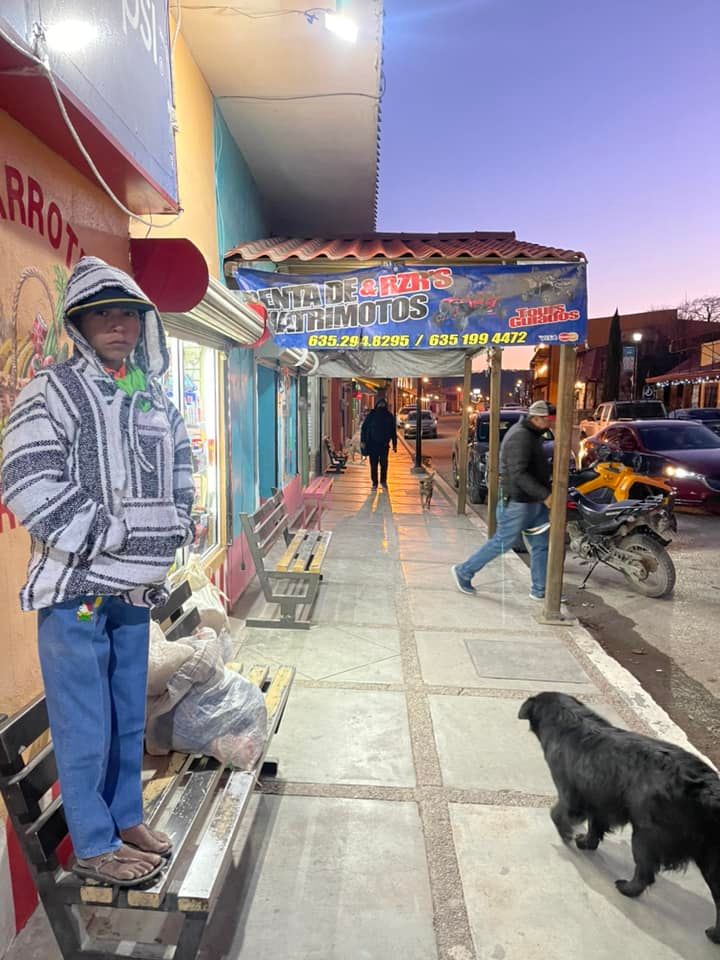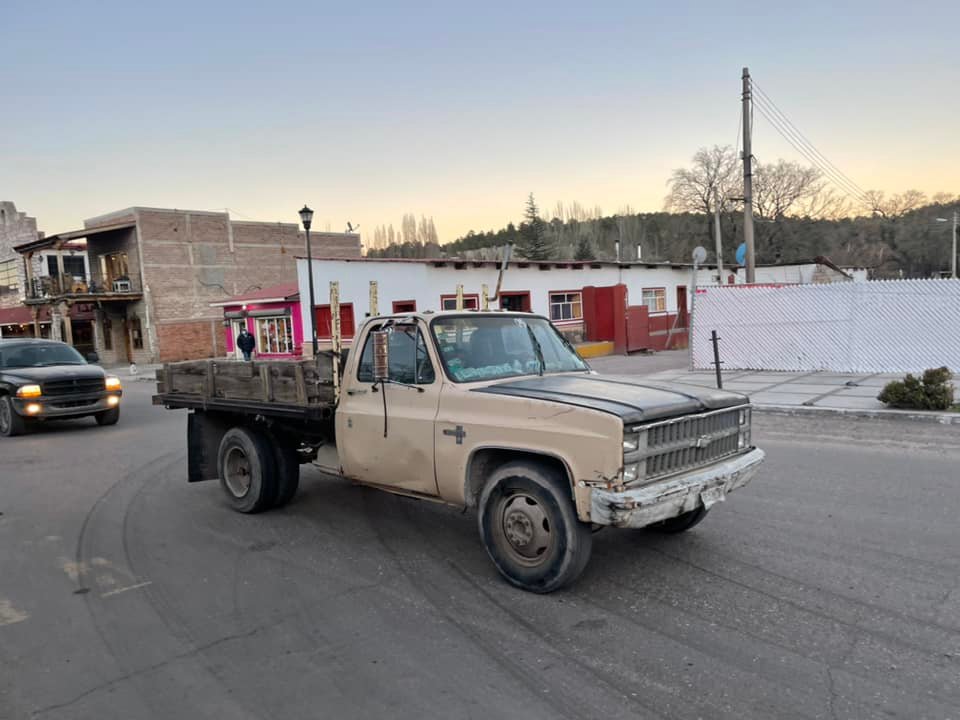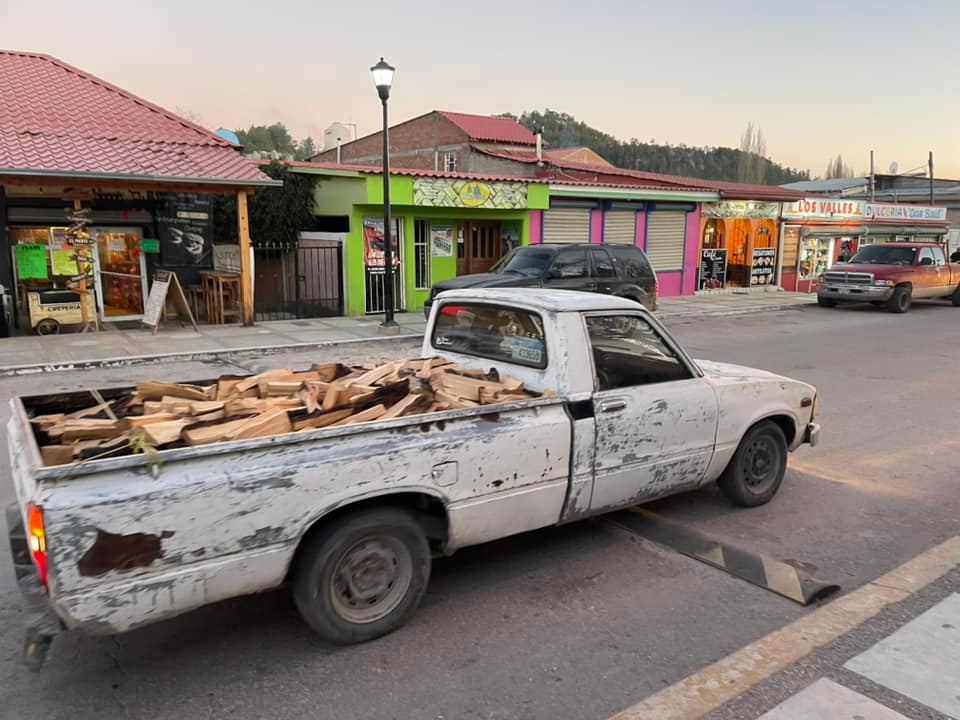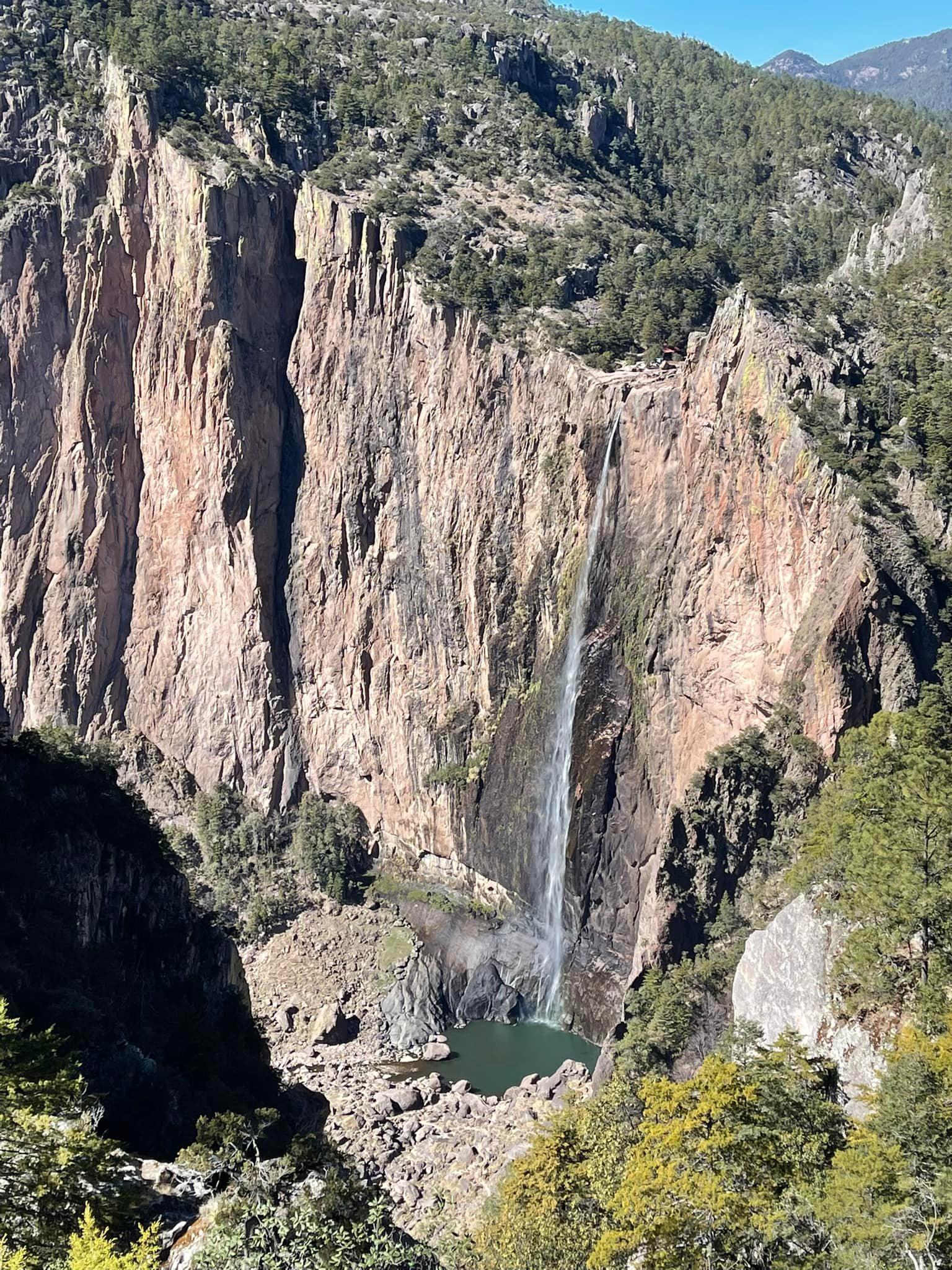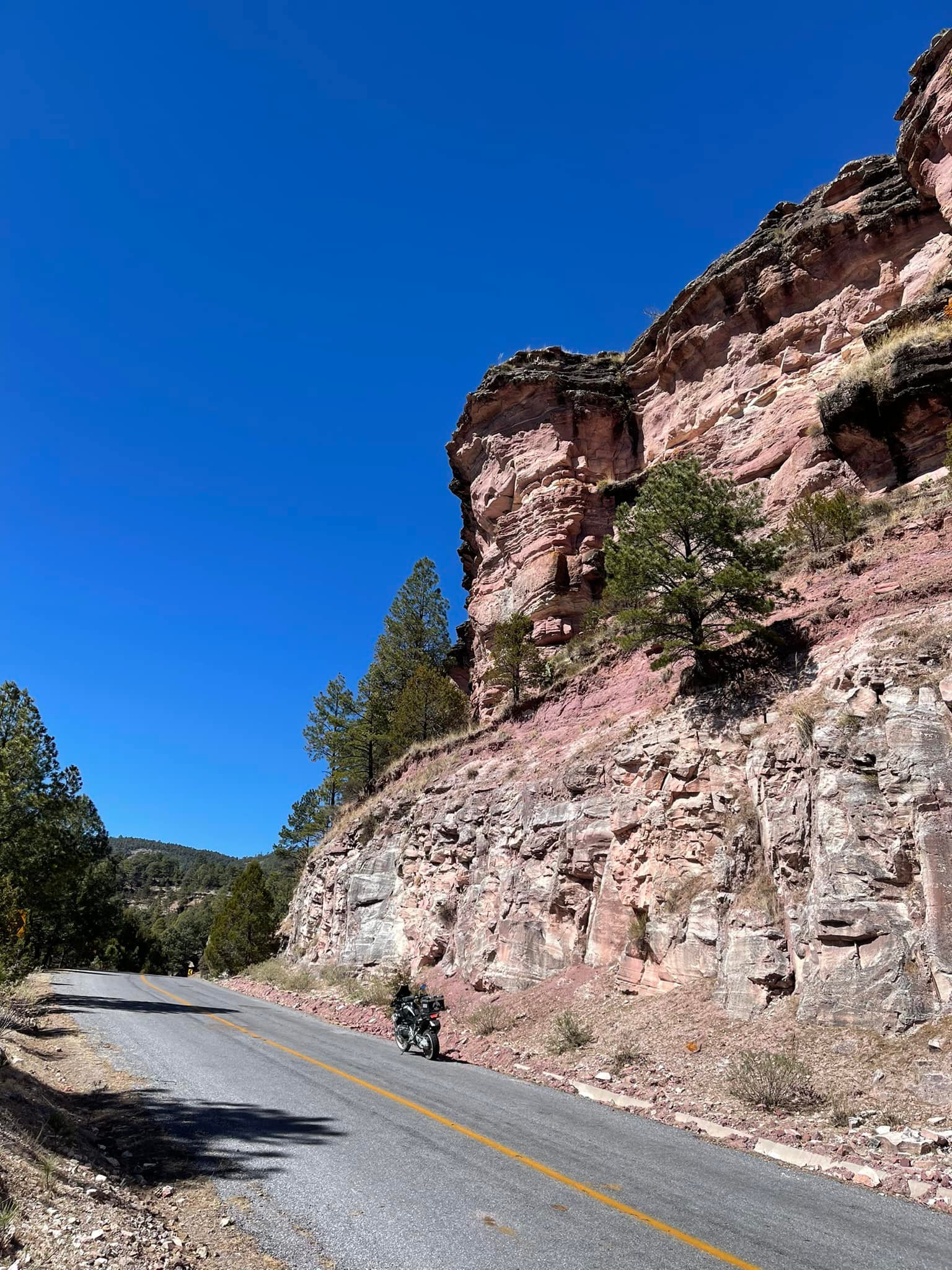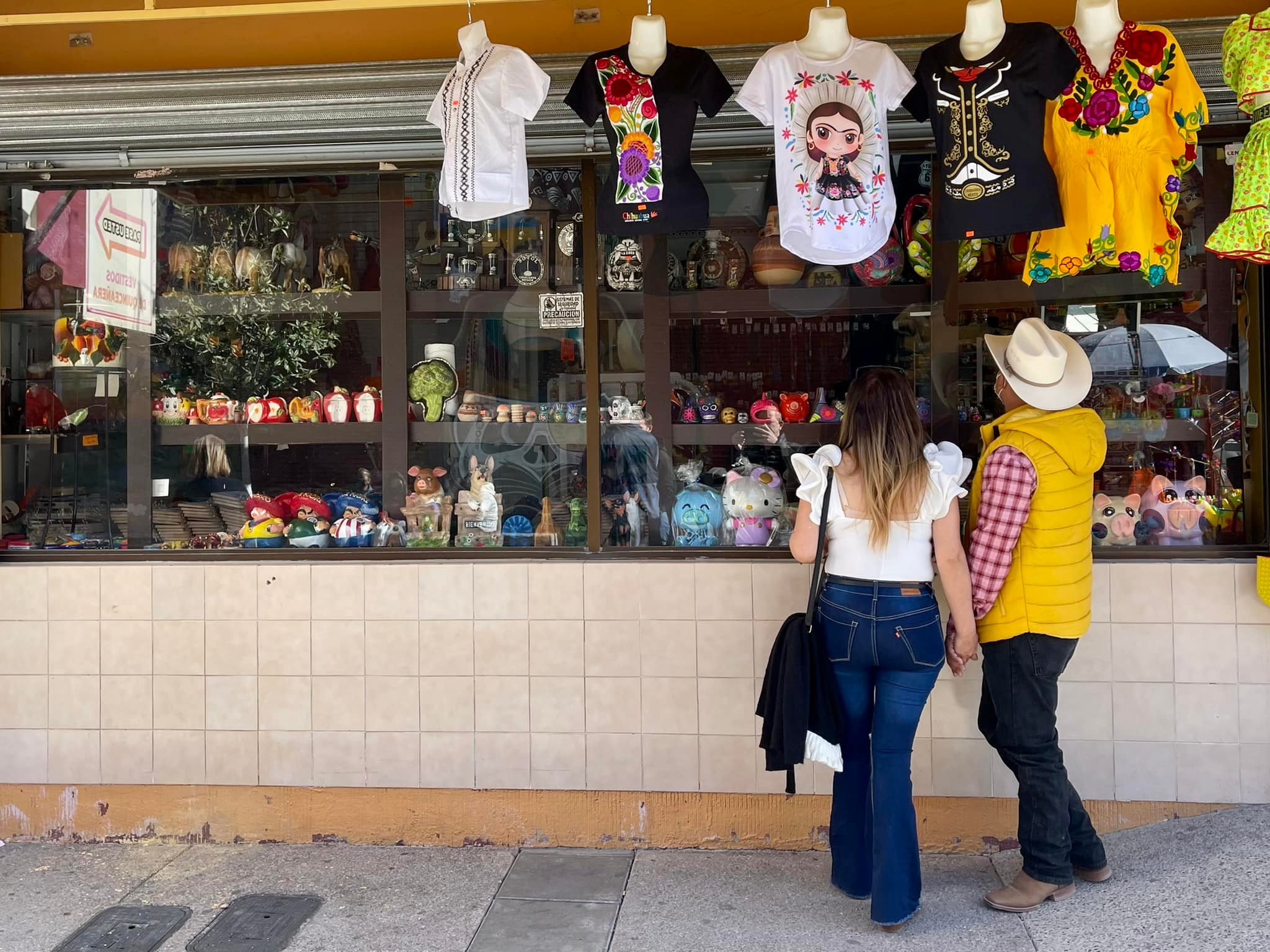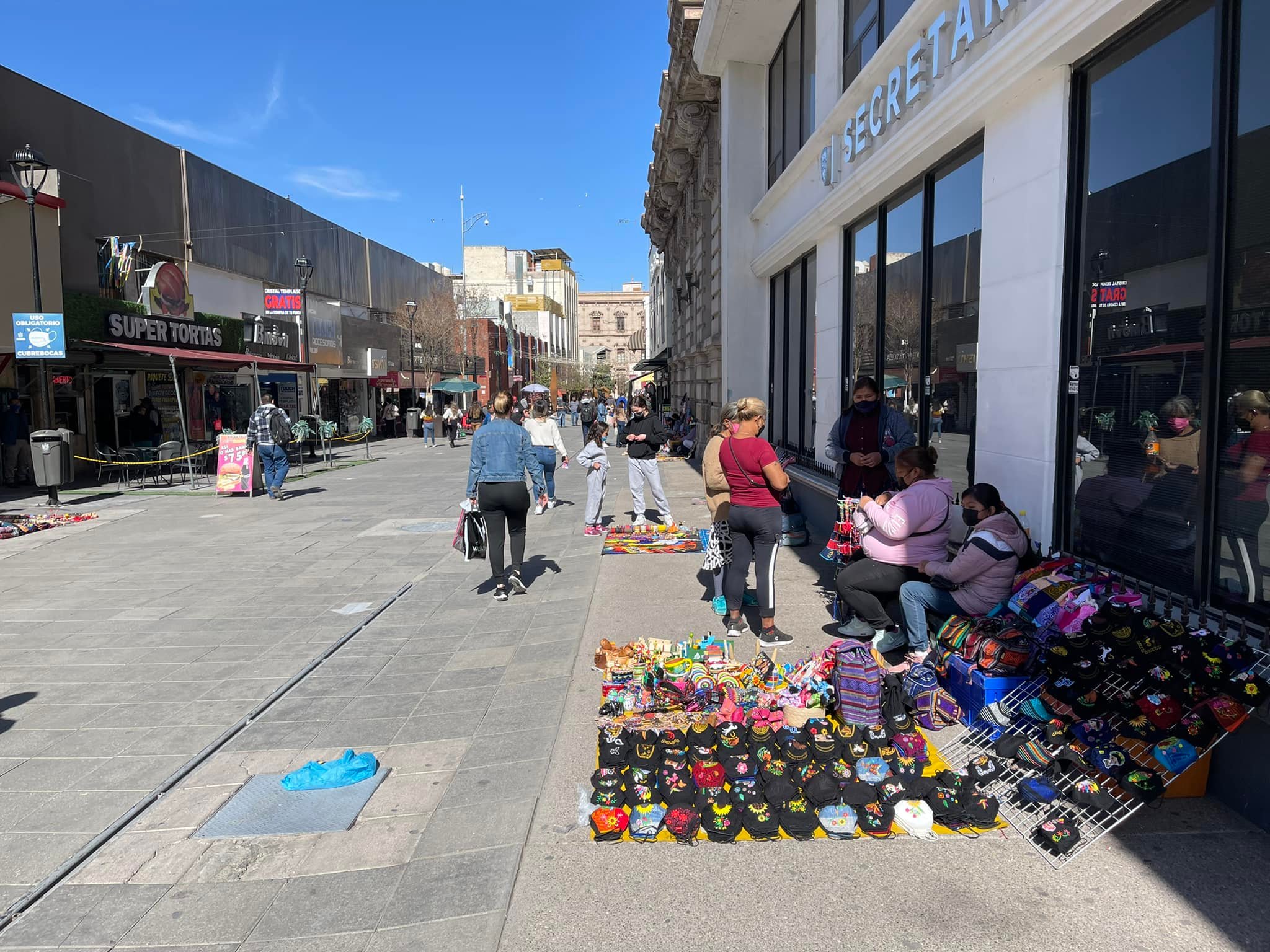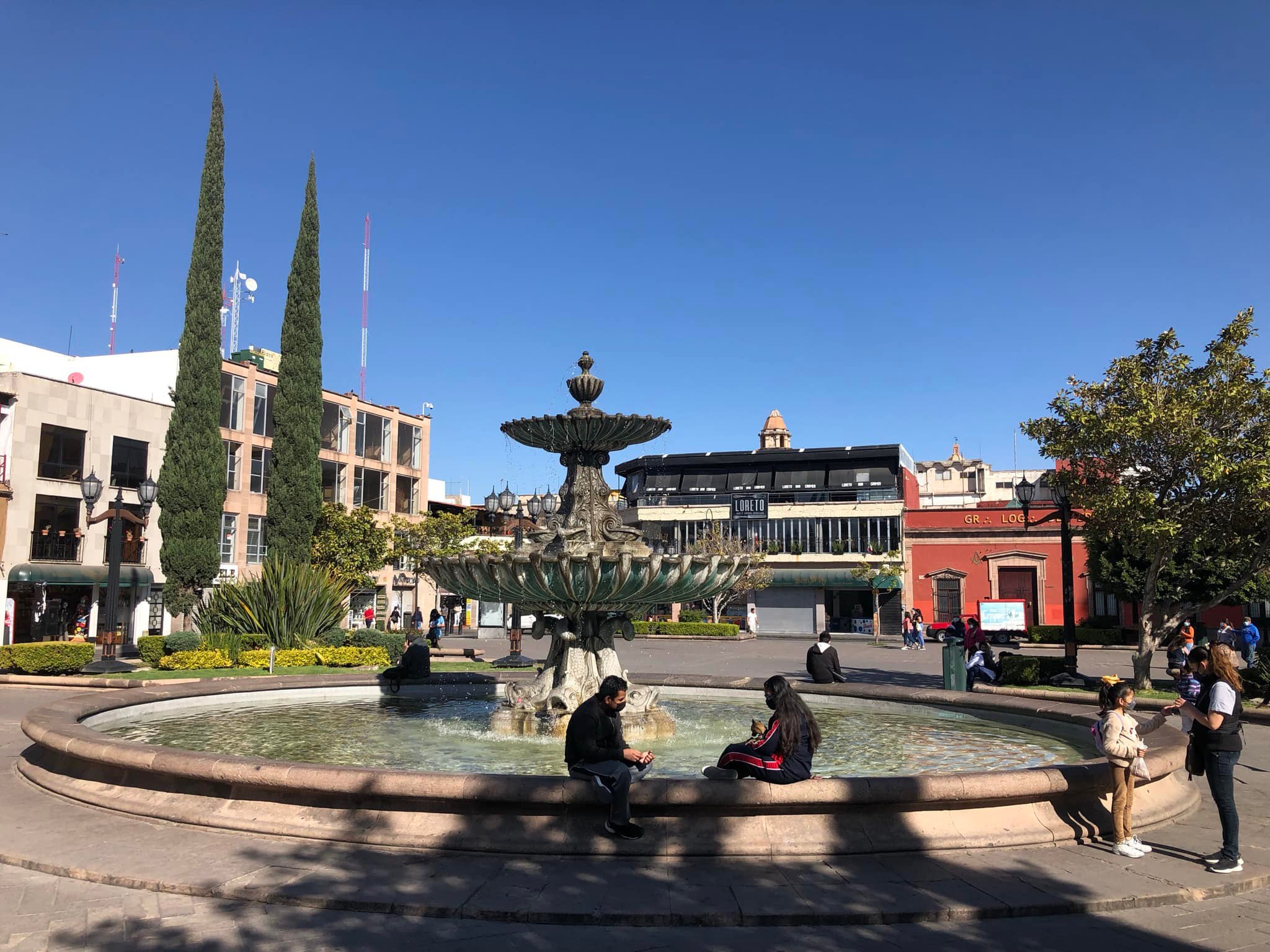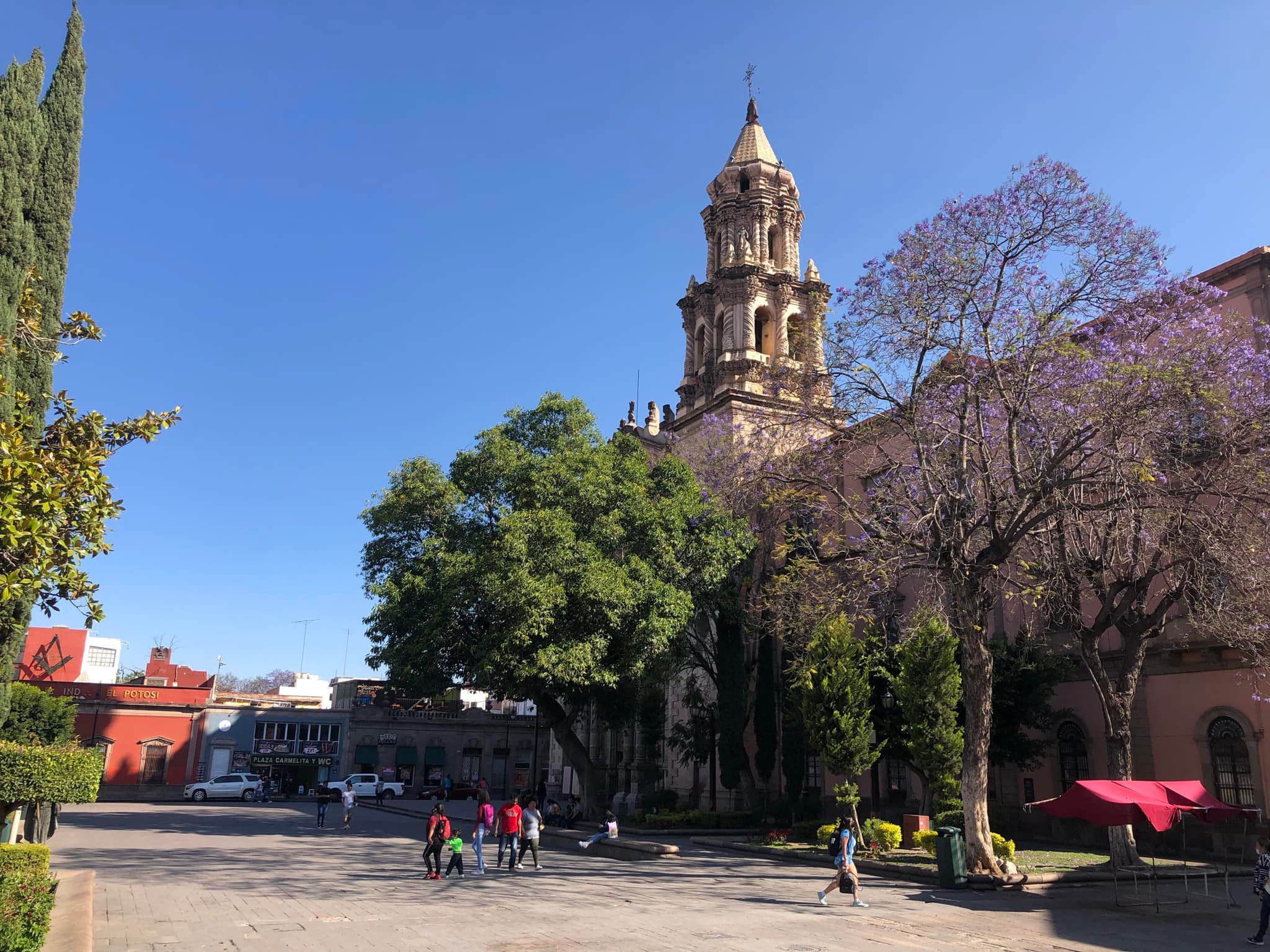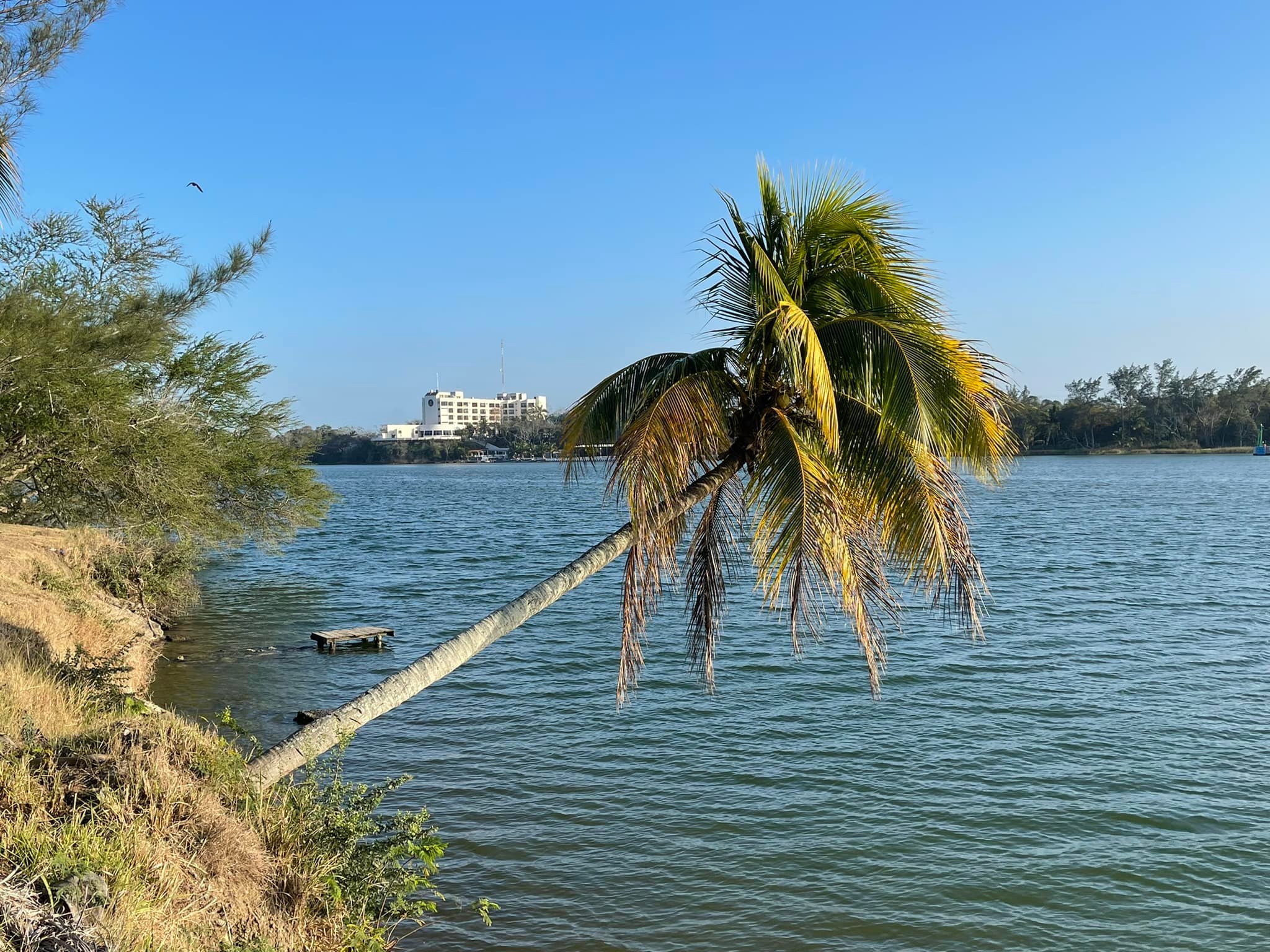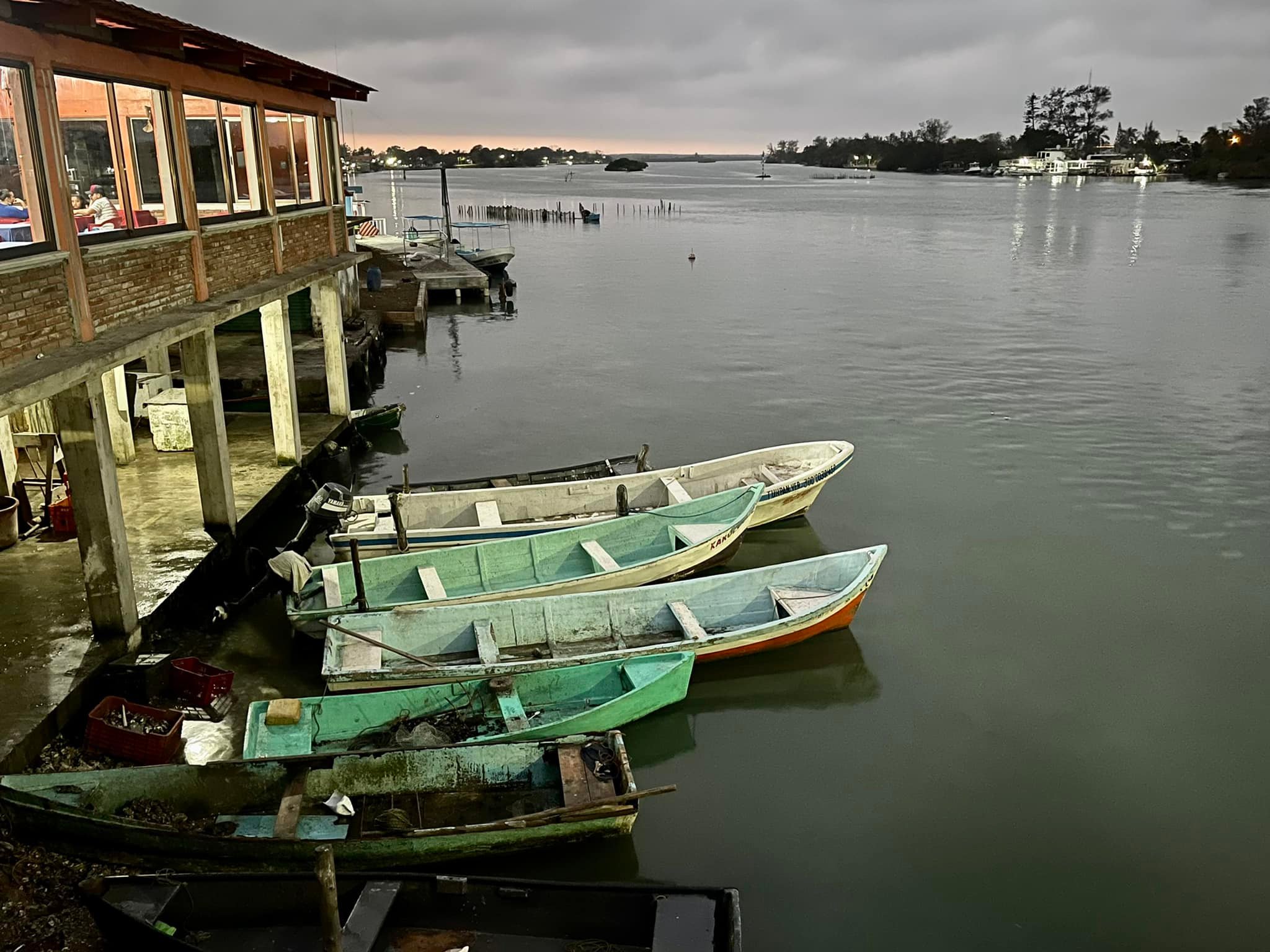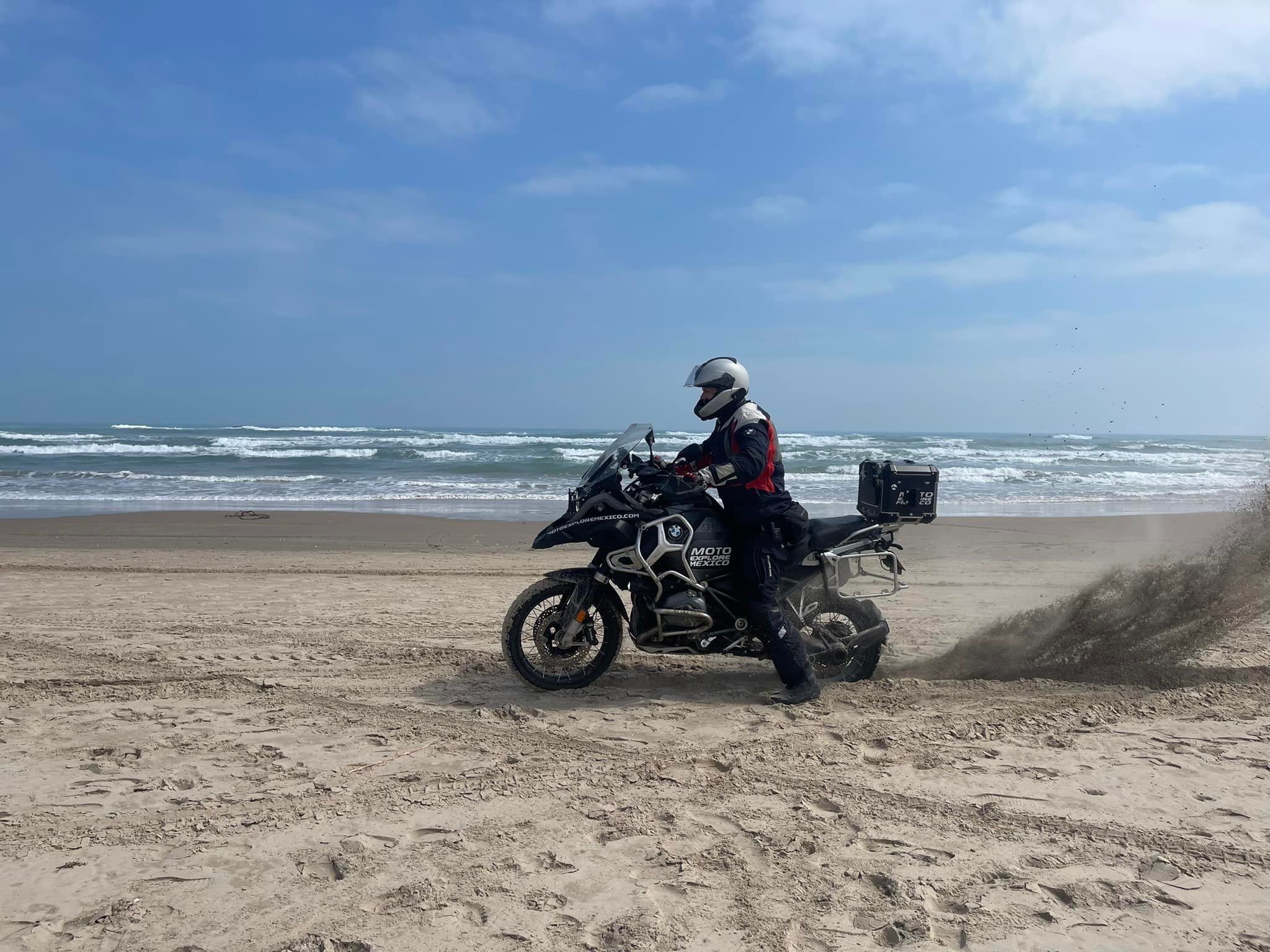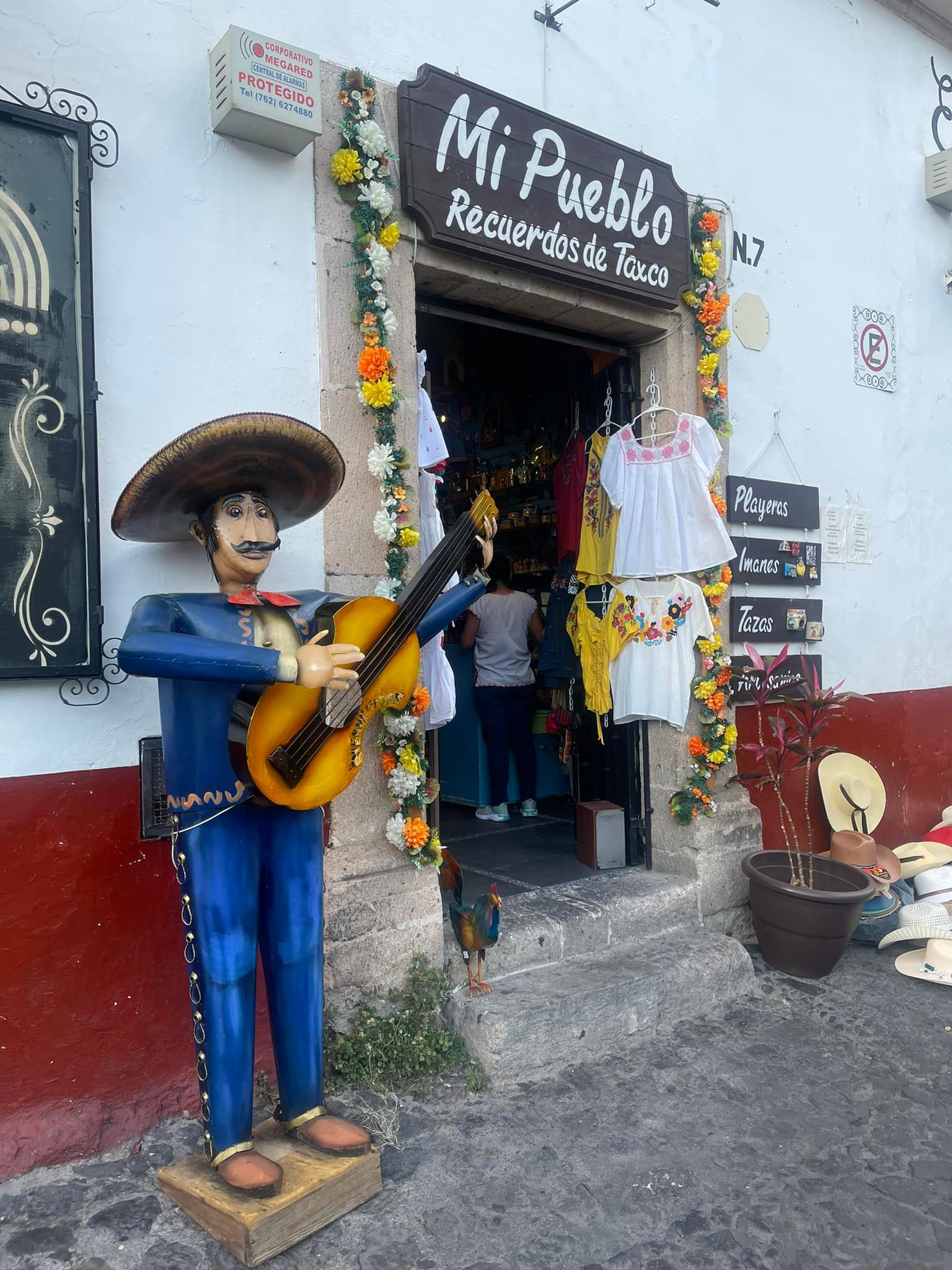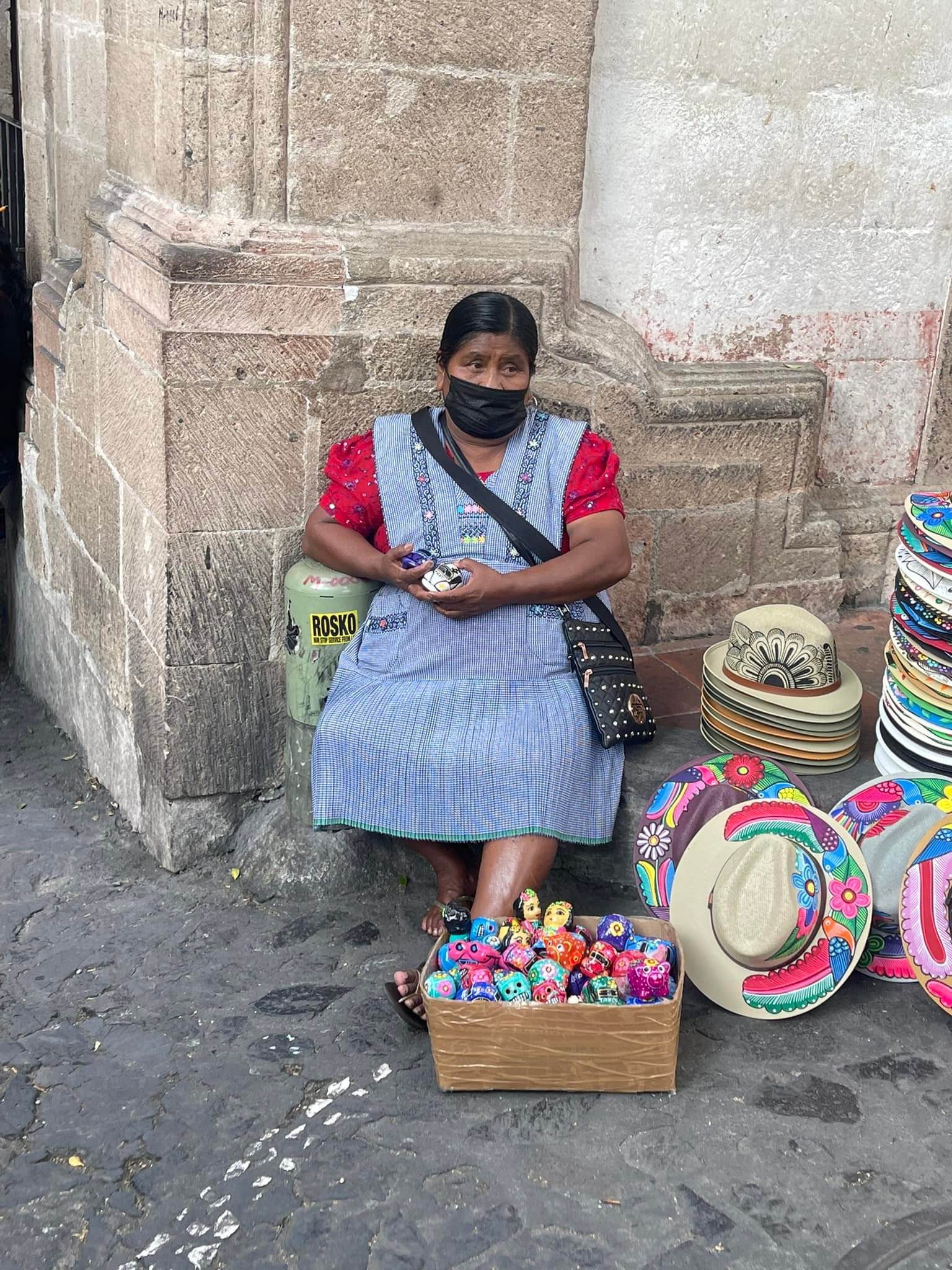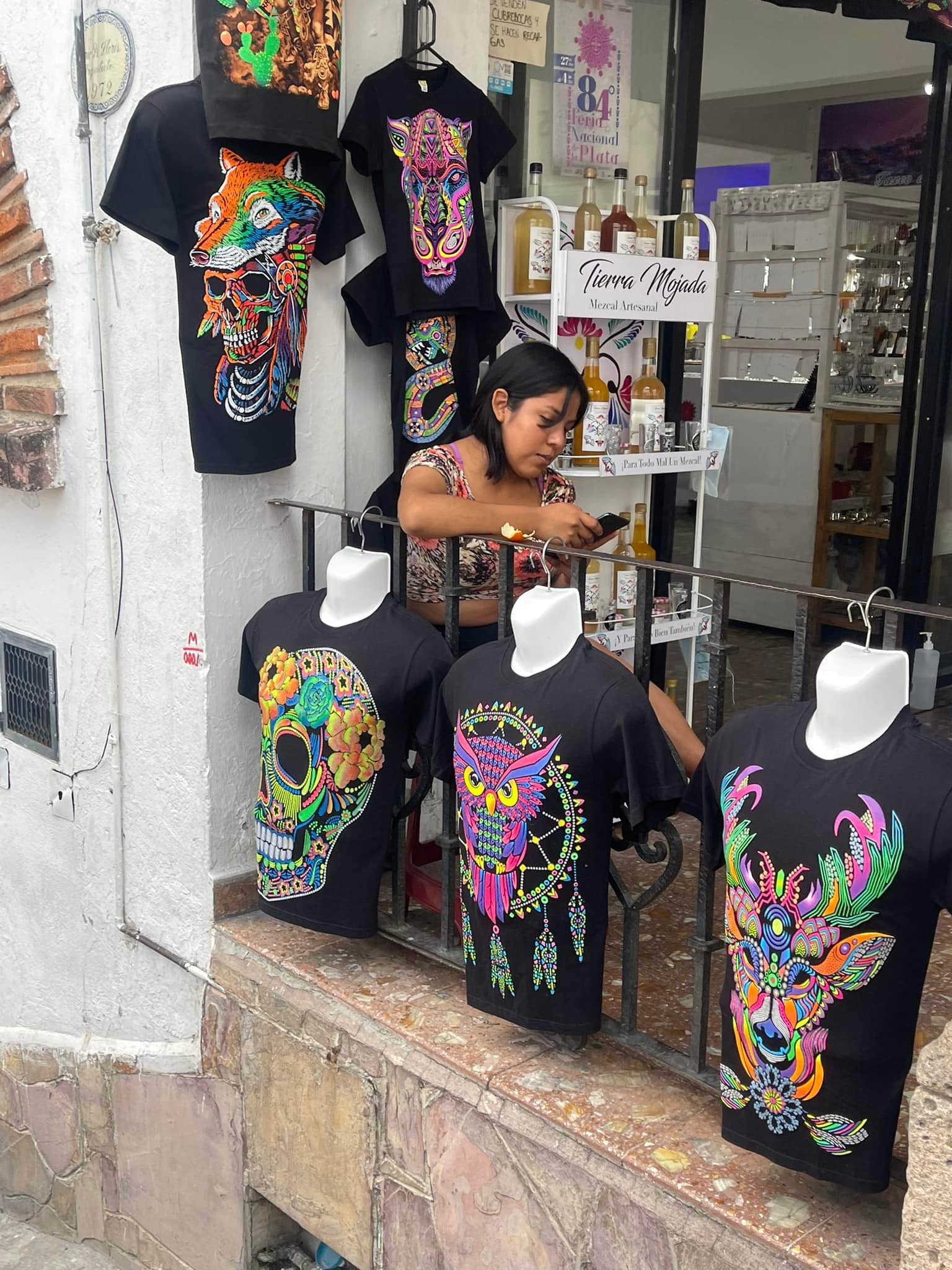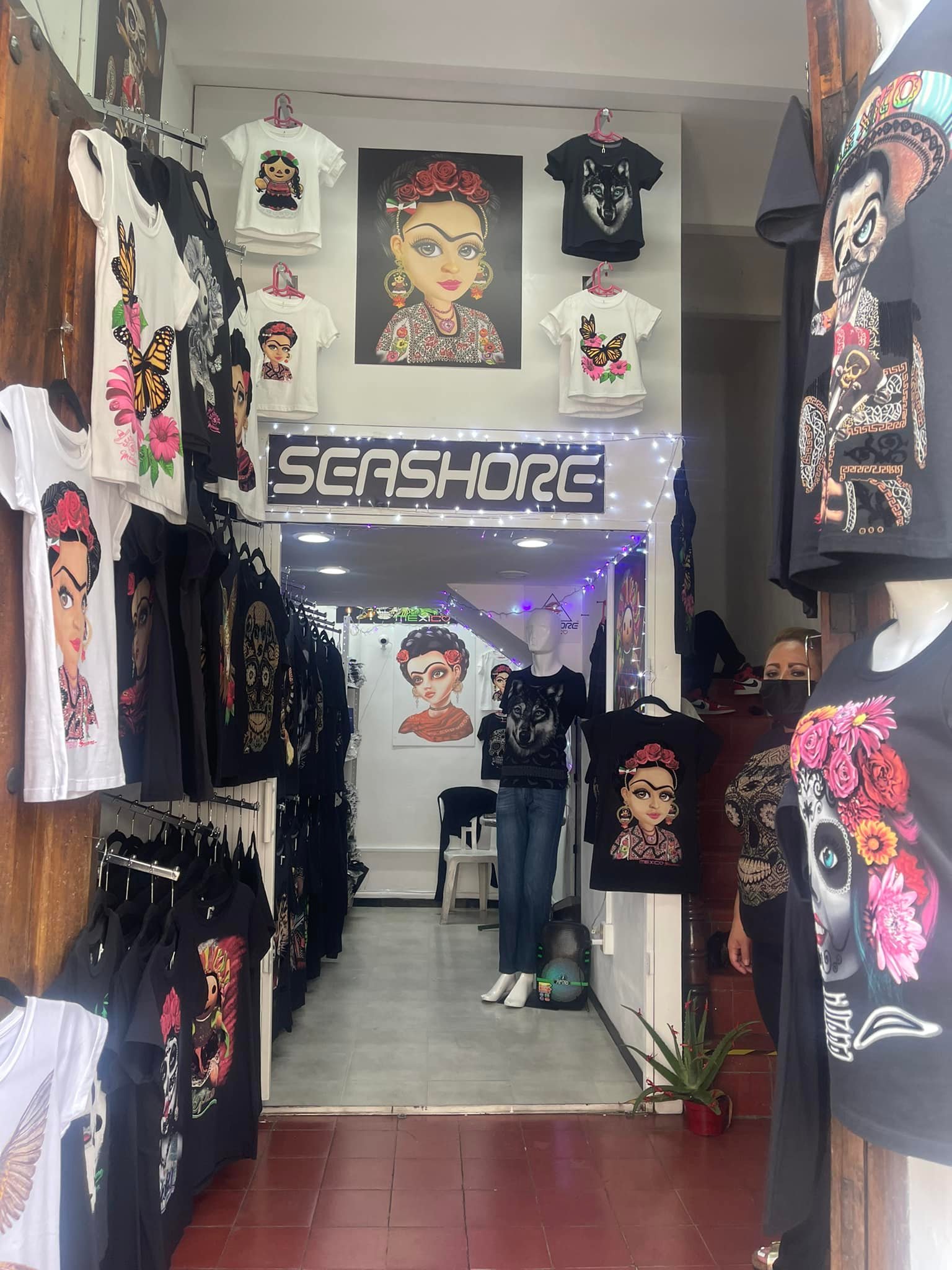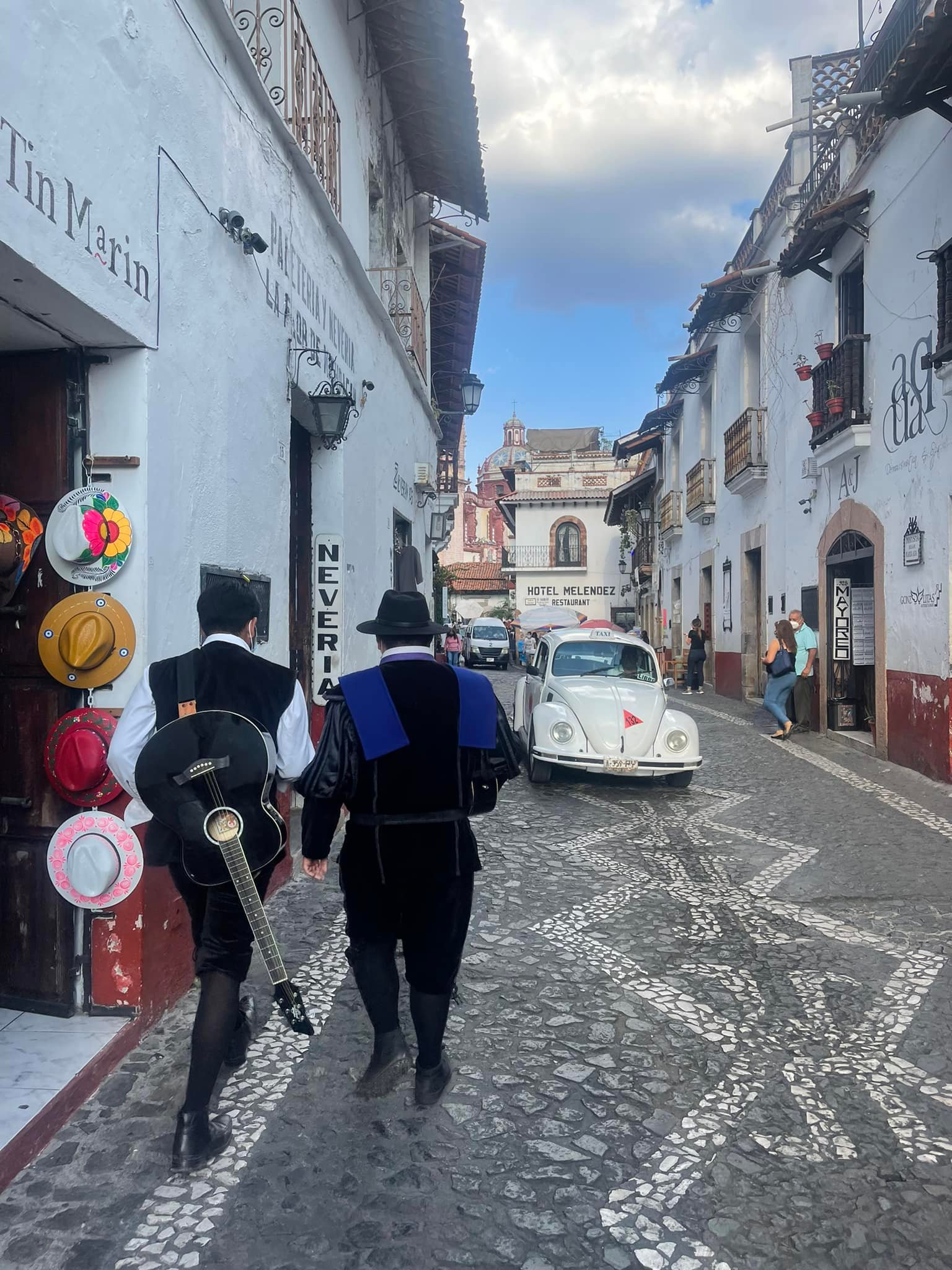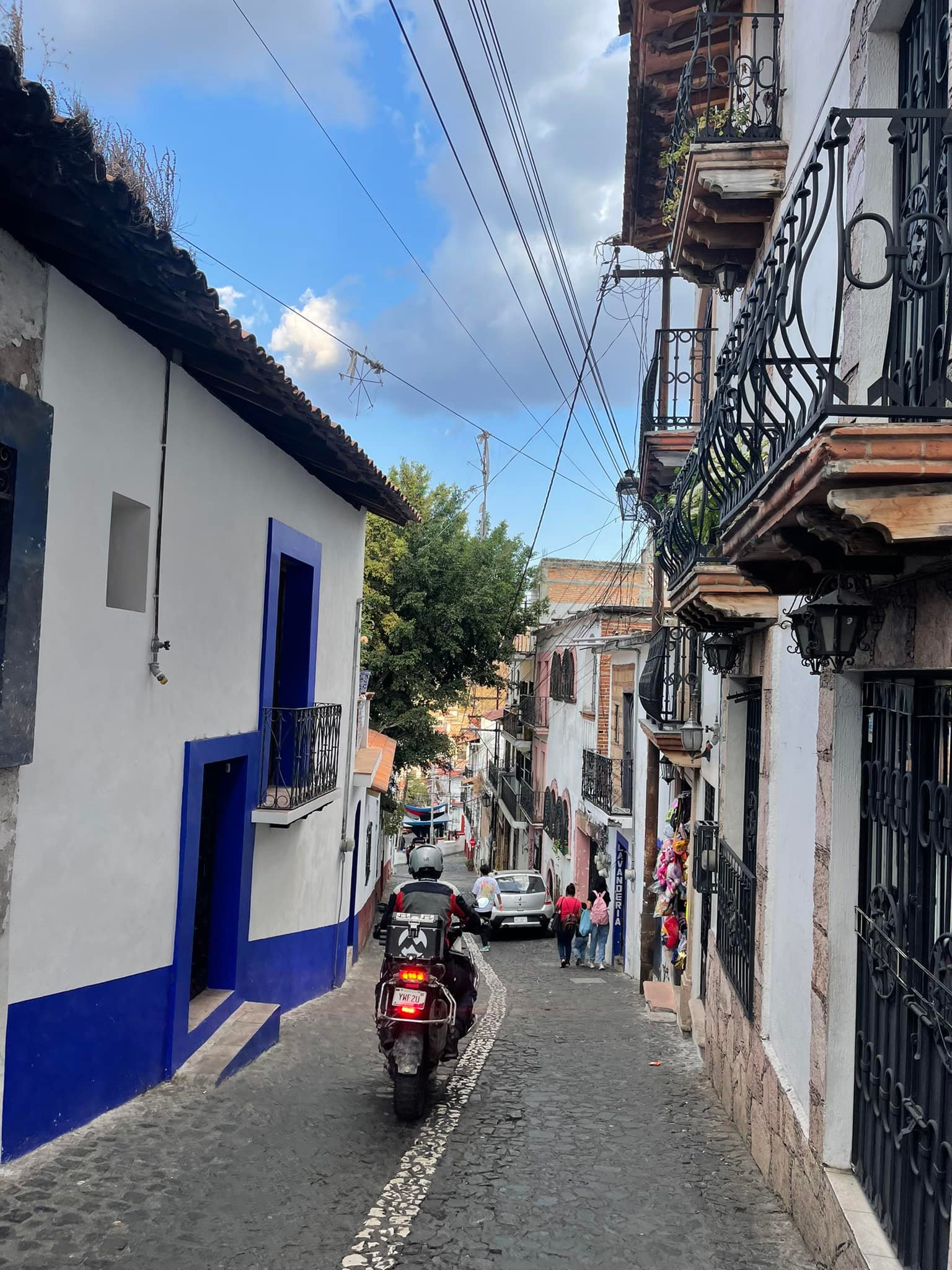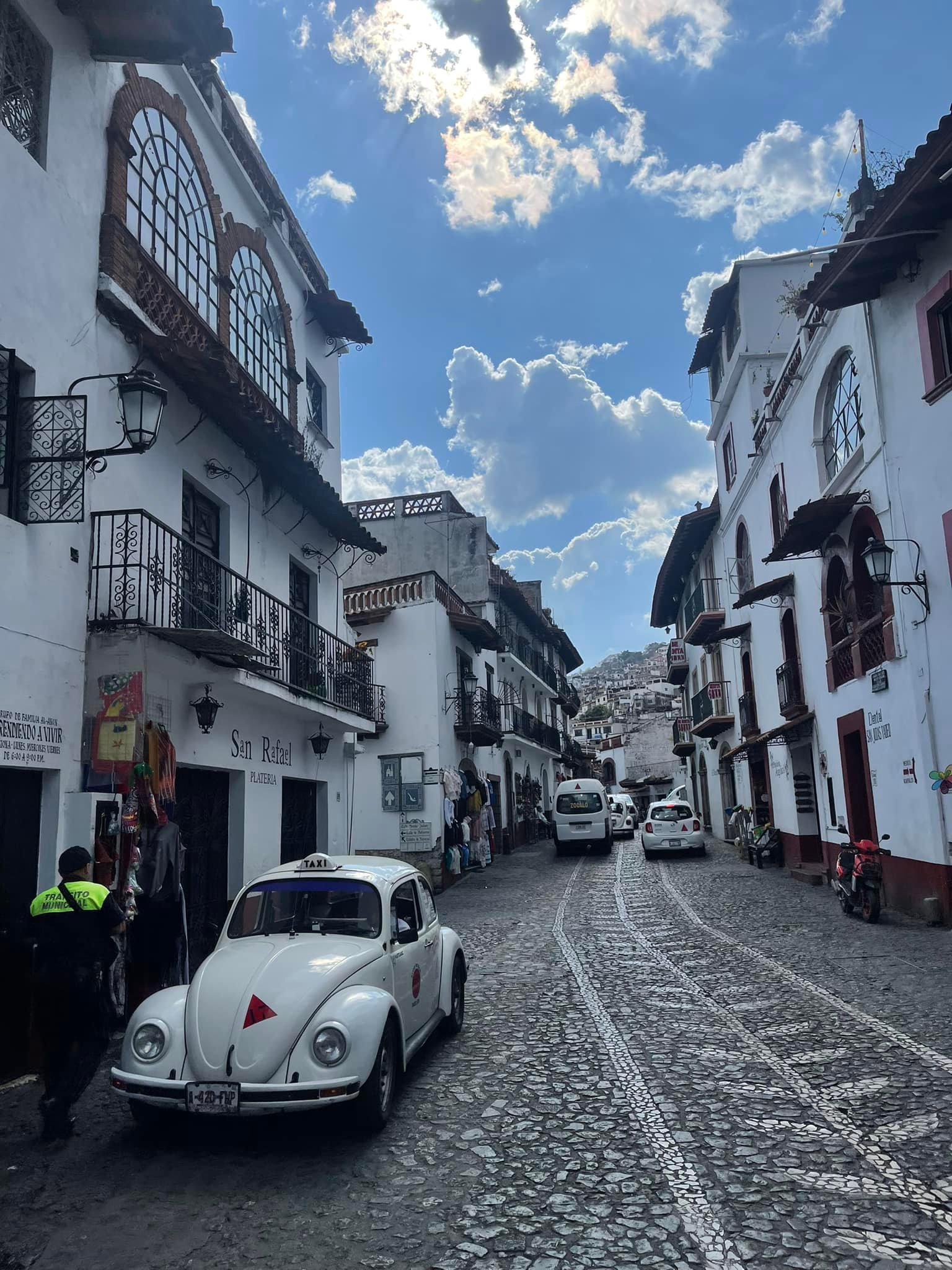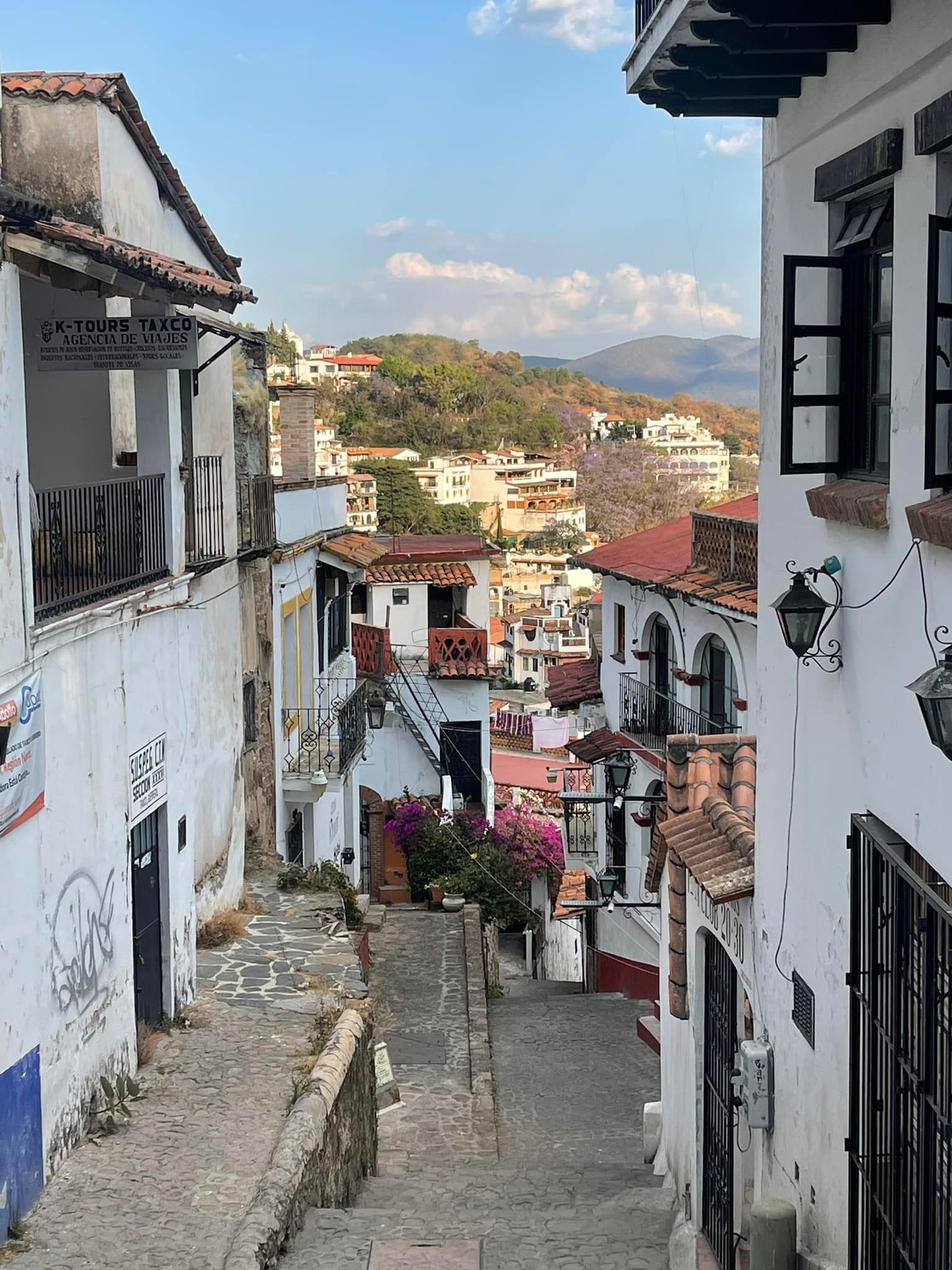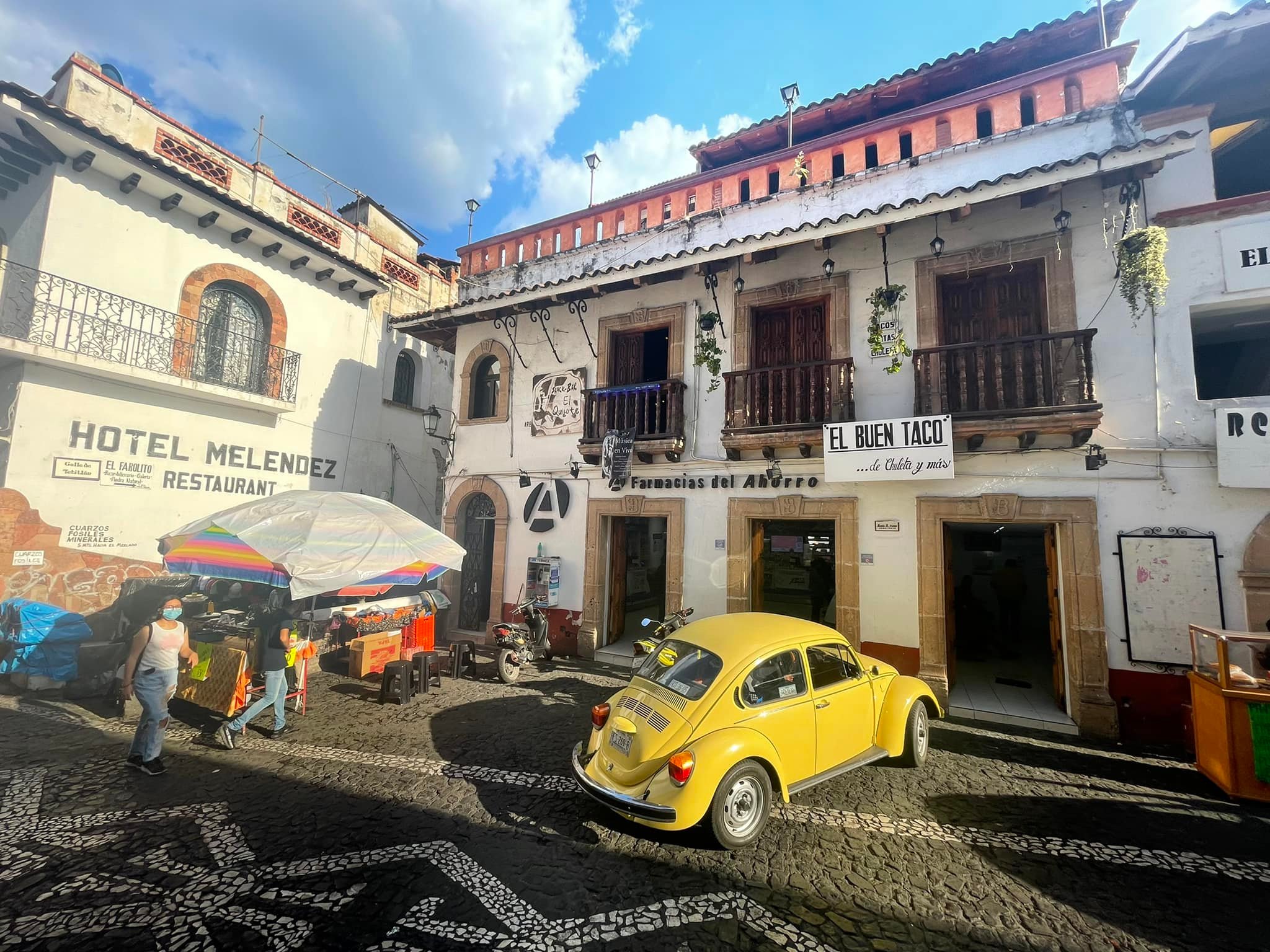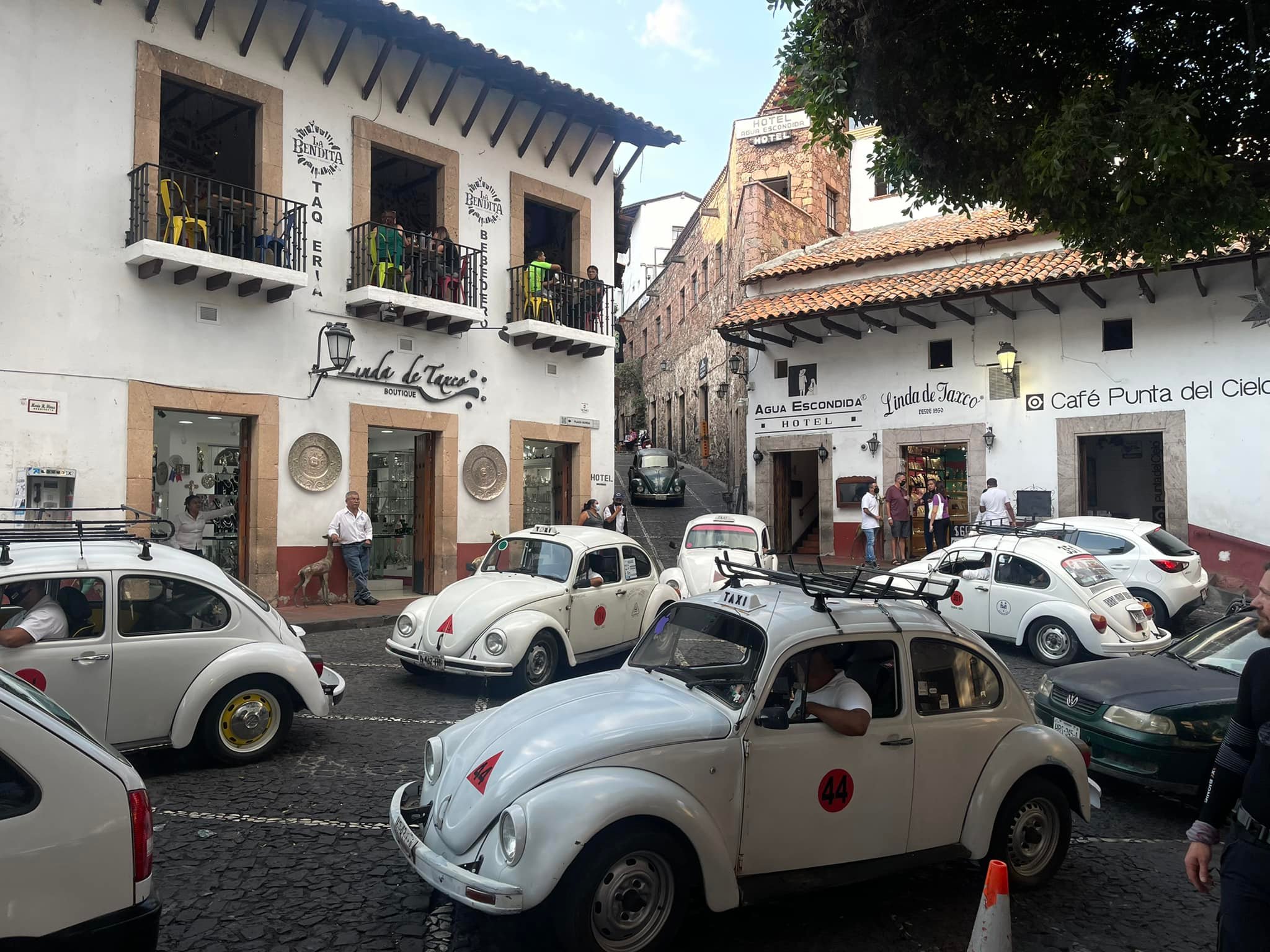Across Mexico on two wheels
Mexico, 2022
It took a three-hour-long flight by Turkish Airlines from airport Vnukovo to Istanbul, two hours waiting between flights, another 15 endless hours in the air, flying over Europe, Greenland, Canada, America and finally we landed at a huge airport in the capital of Mexico.
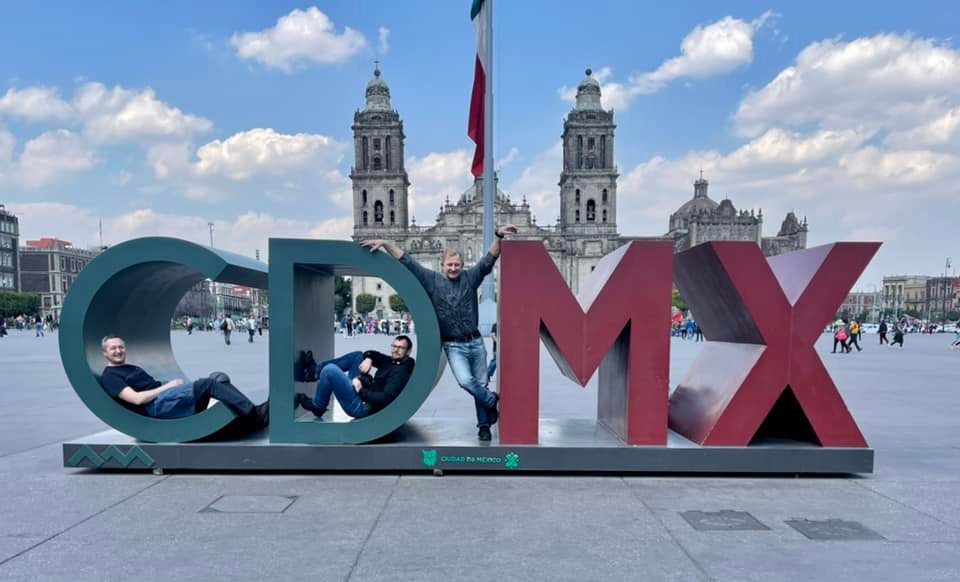
The famous Zócalo square is the centre of Mexico City and the largest square in Latin America.
There is a huge number of people and attractions in this square! You can meet shamans, dancers and the real Indians on horseback!
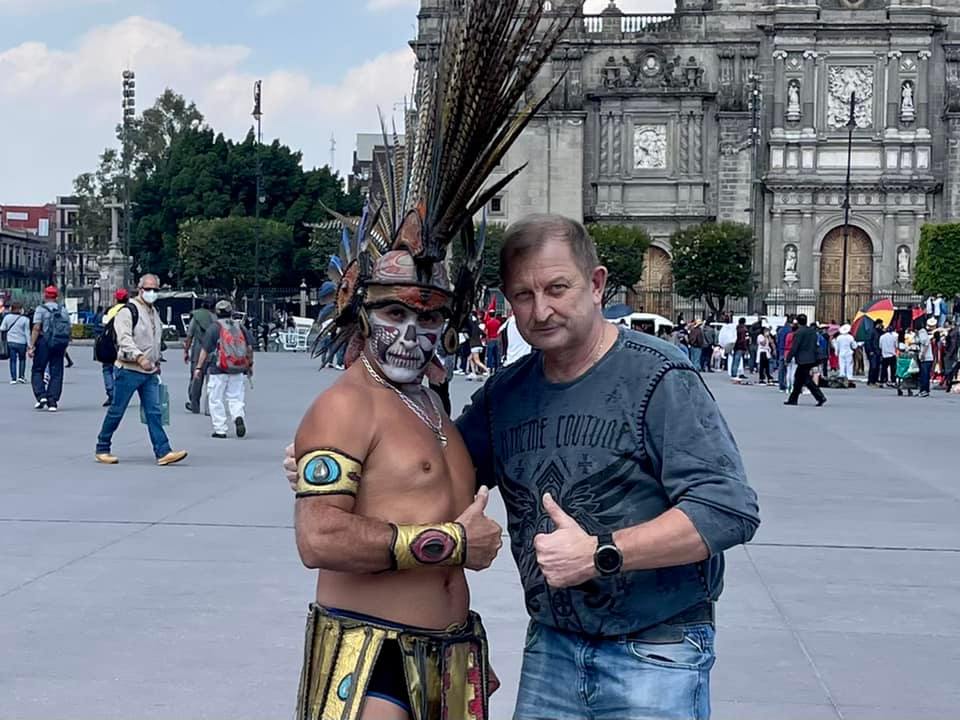
Isn't it a Chingachgook? The one, who is standing next to the Indian. :)
The rite of purification from evil spirits can be performed here as well.
Mexico City greeted us with fine weather. It was sunny, 21°C above zero, everybody was in a great mood and, this time, immigration service officers were courteous. The Document check took just a couple of minutes. Mexico has completely cancelled all restrictions: you need neither vaccination certificates, nor PCR tests. All you need is just an electronic visa, which you can get online in five minutes without leaving home, and if you have an open Schengen one, then you don't need to do another visa either.
At the airport we changed the currency. The exchange rate was $1 = 19.77 pesos. Then we bought 6GB SIM cards for 630 pesos ($31) and took a taxi, which cost 270 pesos, and headed to the hotel. We also examined the motorbikes. Unfortunately, there was a mistake with one of the big models (for some reason they had taken an advance payment a month before, but the motorbike still was not reserved). Therefore, Oleg got a modest BMW 750 GS.
Tomorrow we are going to the northern part of Mexico. The finish point of our journey is a unique place: Copper Canyon in Chihuahua, which is a long chain that includes six huge canyons. Each of them is much larger than the famous Grand Canyon, and the total area is about 65.000 km².
An "Old Arbat Street" in Mexico City.
And today we had a day of rest and acquaintance with Mexico City, a very interesting, huge and contrasting metropolis, which belongs to a centuries-old history.
We haven't tried out street food yet, but it looks and smells really good!
Mexico City → Tula → Santiago de Queretaro
The first day of our motorbike trip in Mexico has started with a small problem, as usual. After getting the motorbikes we rode to the hotel to take our bags. Oleg arrived first, and we followed him in 10 minutes.
But the nimble police officers had enough time to detain Oleg's motorbike. Its freedom officially cost 800 pesos (about 3000 roubles).
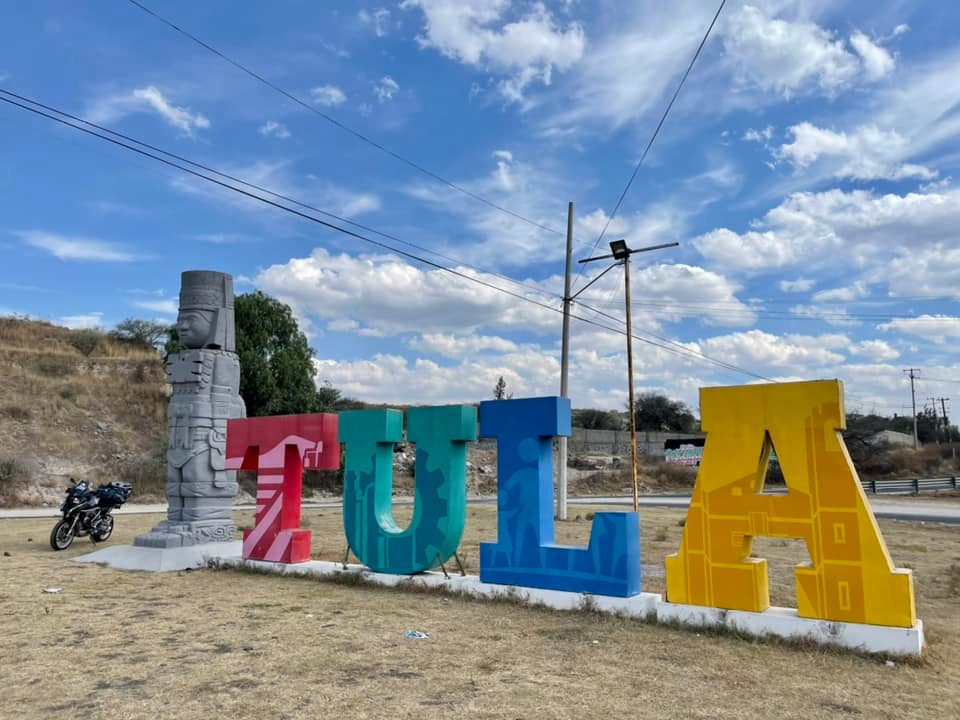
Having experienced the terrible traffic jams of Mexico City, we went for the 57th motorway and arrived in the city Tula an hour later.
Yeah, there is such a town in Mexico, famous for its ancient pyramids and idols, which were left over from the ancient tribes of local aborigines, the Toltecs. This is a rather well-known place of interest, however, there were only five or six other people besides us, nobody more.
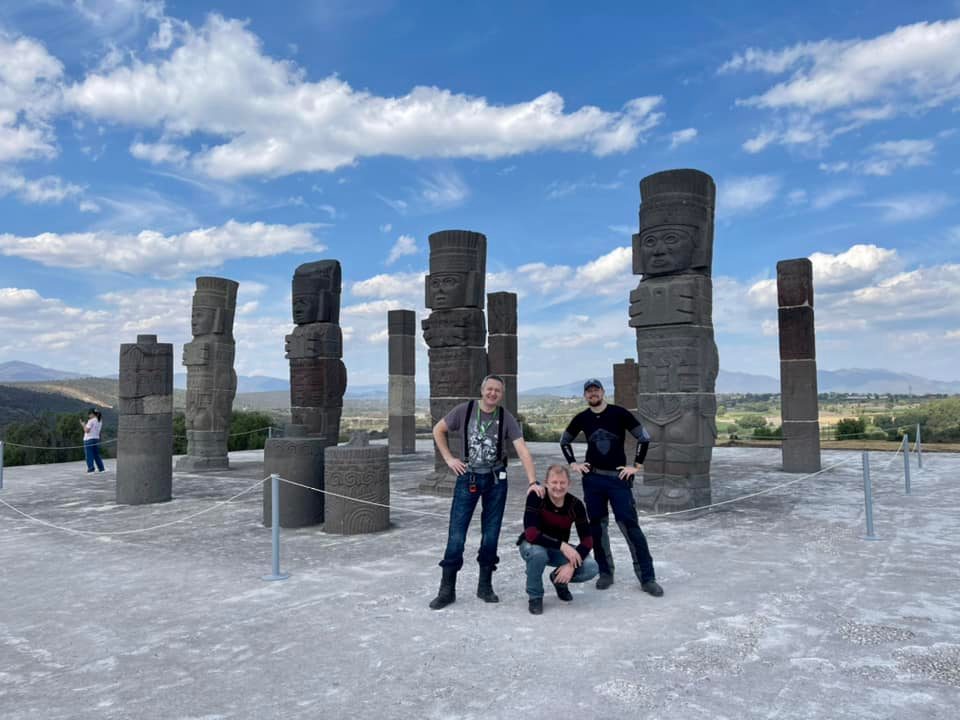
These idol-warriors are about one thousand years old and they were miraculously preserved while the whole Toltec town was completely ruined.
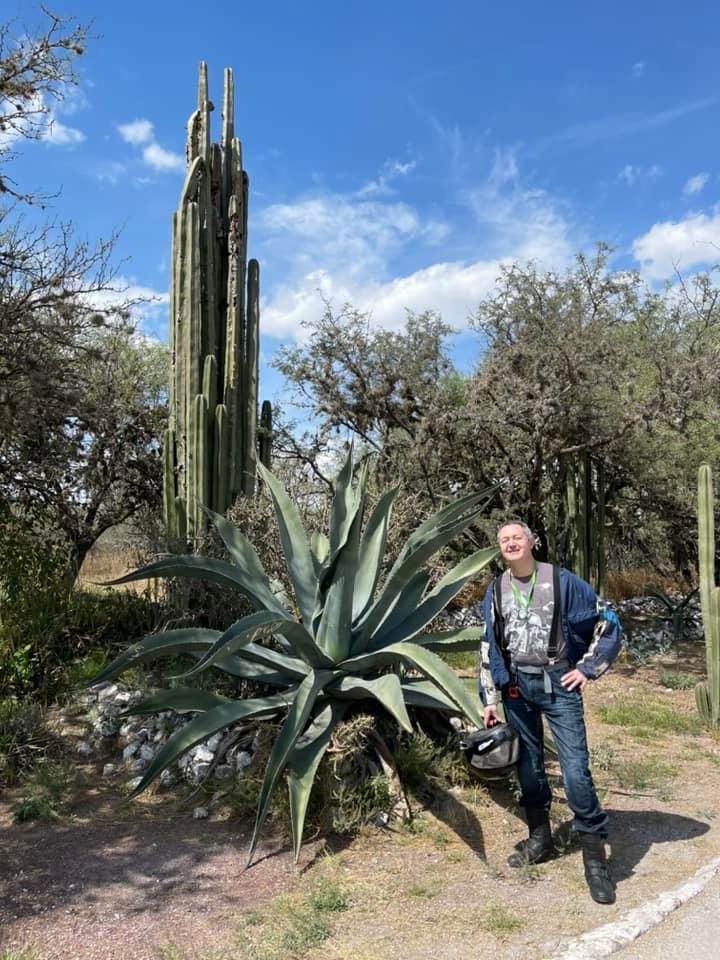
I wonder what associations with Mexico you have.
Do you immediately imagine Maya pyramids, sombrero, the Indians, tequila, football, cactuses?
This is the ancient Toltec town near the modern city Tula. It's quite small in comparison with Teotihuacan or Machu Picchu, but an interesting one too. Idols are installed on the base of the destroyed pyramid.
By the way, the current season is the best time to travel around Mexico. The country is completely open, all the museums, restaurants and hotels work as well, but there are few tourists. Prices are 1.5-2 times lower than usual. Splendid!
The next stop after Tula is a lovely town Santiago de Queretaro.
The old cobbled streets, magnificent temples and a beautiful central square with the large fountain in it were definitely worth staying there overnight in a small but cozy hotel.
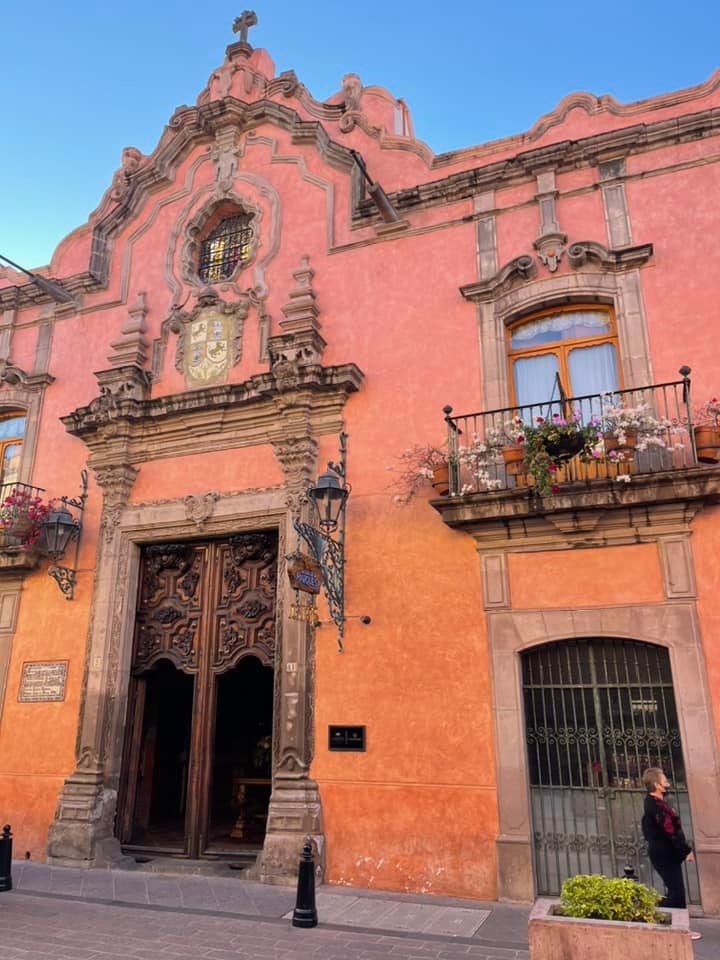
This is Santiago de Queretaro central square in the evening.
Guanajuato
We continue our tour around the most exciting locations in Mexico. Today our long way to the Copper Canyon passes through Guanajuato, the most beautiful and unusual city in this wonderful country.
Such chaotic housing in the town makes Guanajuato special and outstanding.
It begins to amaze and surprise as soon as you enter its historical part. The thing is Guanajuato is a two-level town.
On the "top floor" there are bright colourful buildings scattered along the slopes of the hills and mountains in a chaotic manner.
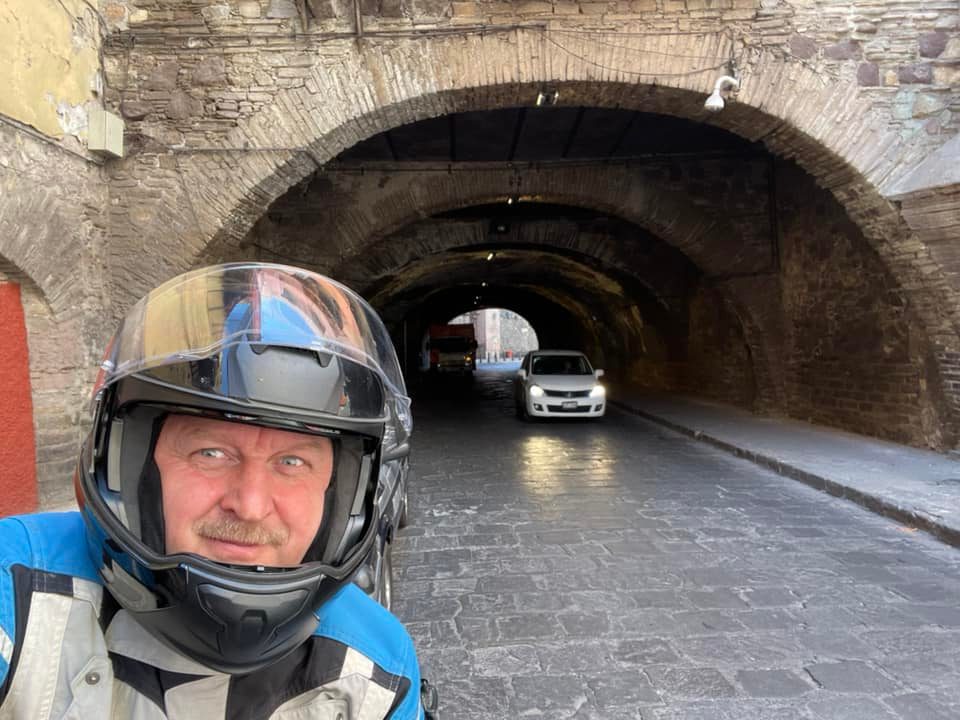
Temples, streets, parks, shops and restaurants are above and a tunnel network, where the cars are driven, is below them.
That's really unusual!
And what picturesque streets and houses are in this town, made its fortune on silver mining!
Neither words, nor photographs can convey this beauty! You should see everything with your own eyes and walk along the streets on foot.
The Don Cervantes' famous characters are very revered in Guanajuato.
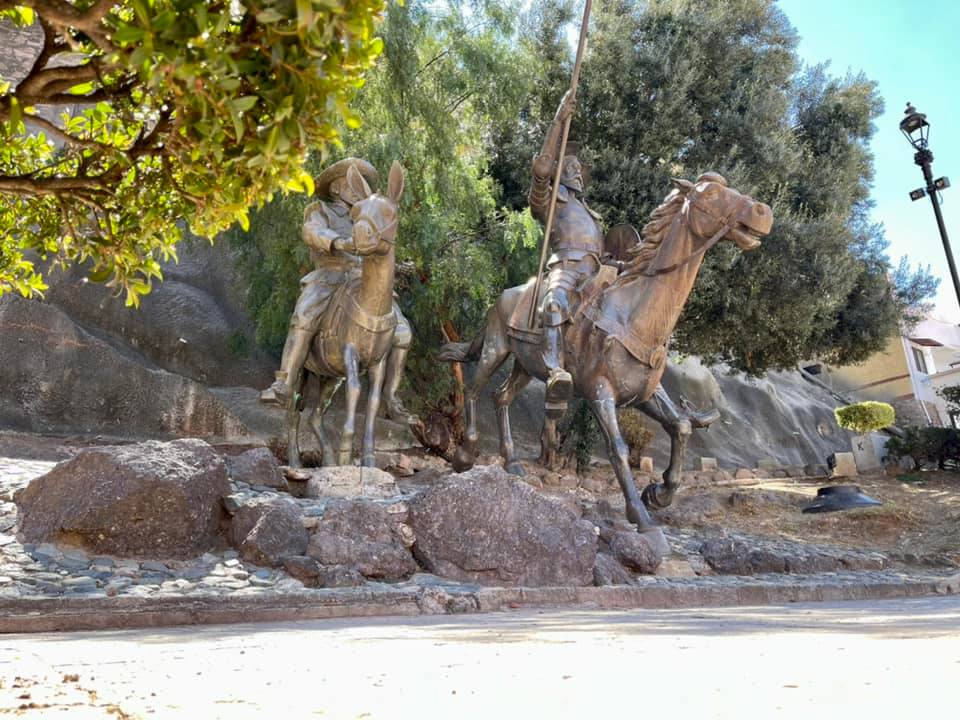
Do you recognise him? No, it's not Vladimir Ilyich. :)
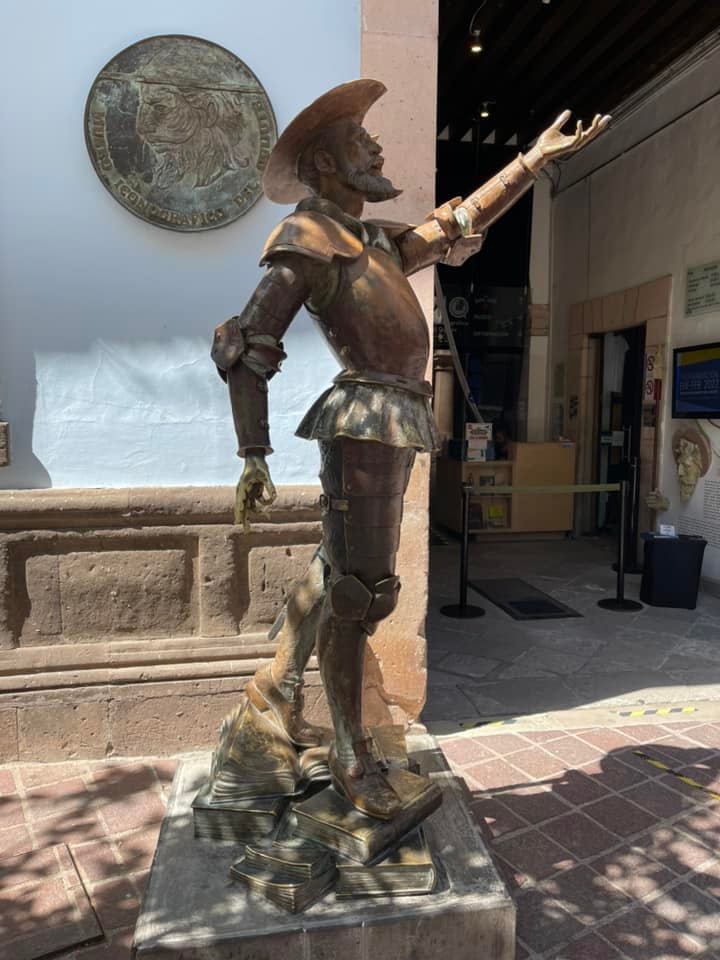
Unfortunately, we didn't spend much time in this beautiful town and after having lunch at the outdoor terrace in the city centre, went further along the motorway to the west.
Guadalajara → Puerto Vallarta
Guadalajara, the second largest city in Mexico, populated by 1.5 million people, made a twofold impression on me.
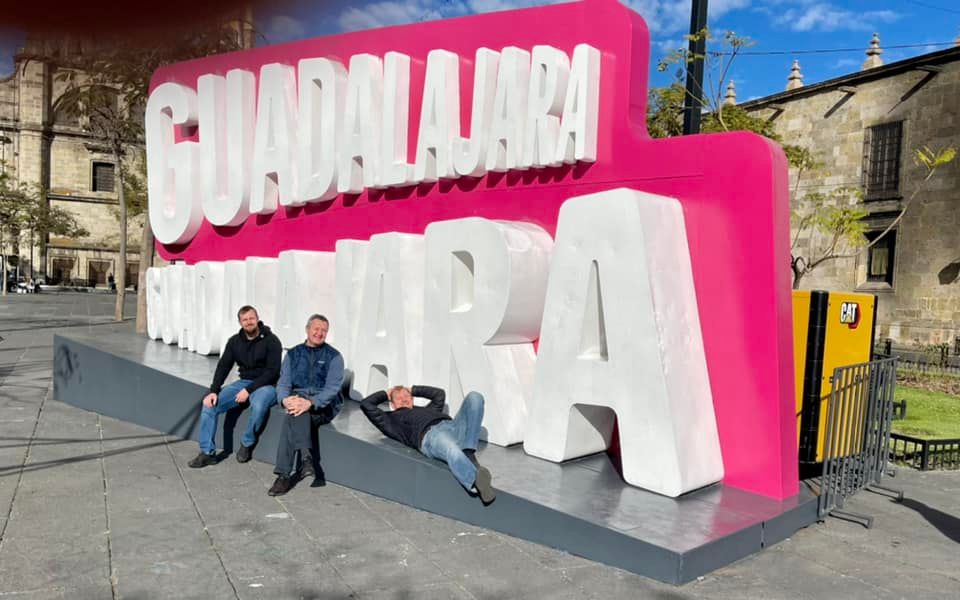
On one hand, this is a city of rich history, wonderful architecture and the tourist and cultural centre of Mexico.
On the other hand, the streets there are dirty even in the historical centre, walls of houses are painted with graffiti, homeless people are sleeping right on the sidewalk on cardboard sheets.
Hardly ever have you met a homeless person who starts his day with a morning newspaper and a cup of coffee. Although, I'm not sure whether it is coffee :)
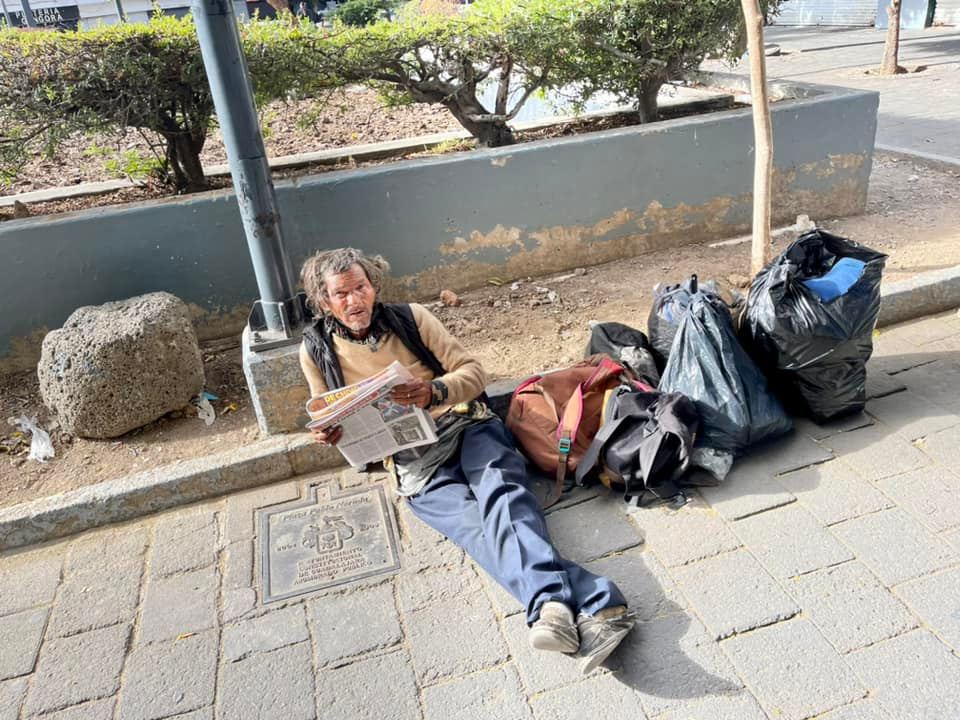
Graffiti in the cities of Mexico can be found in every corner. Many of them can be described as real works of art.
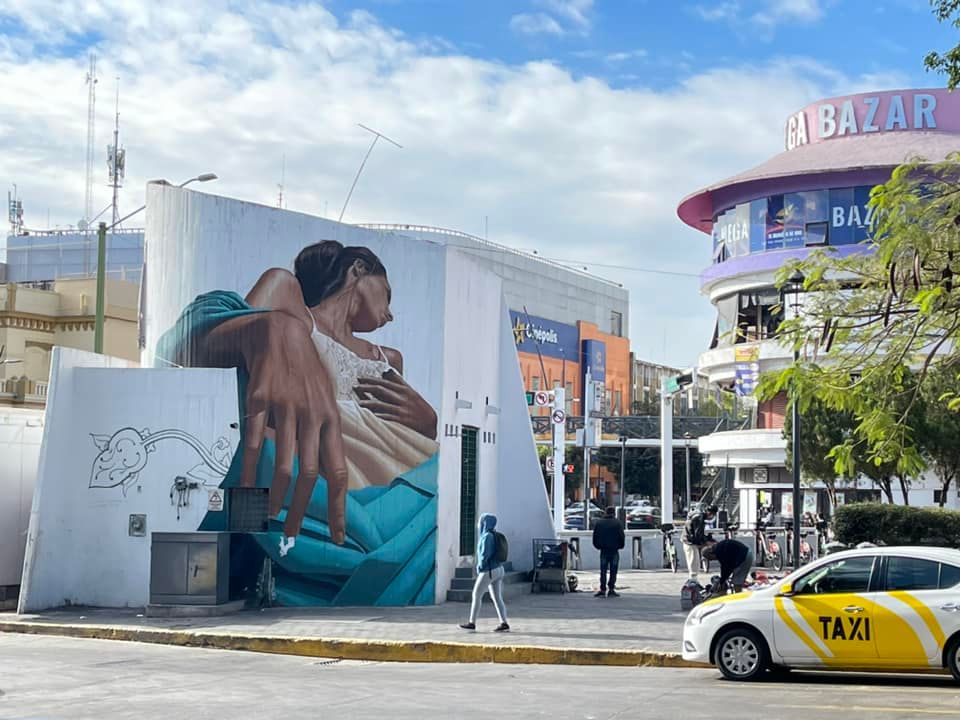
In Mexico there are a lot of military and police patrols on duty in cities and on highways.
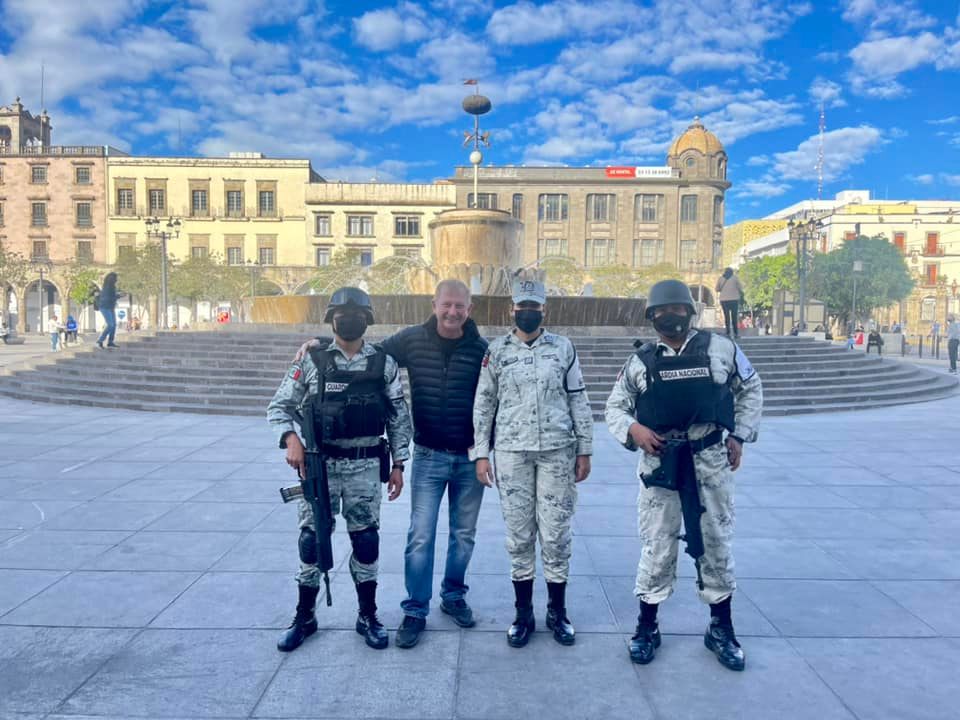
In the morning we walked around the city on foot, had breakfast at a lousy McDonald's, attended the morning service of worship at the amazing Cathedral, took pictures with the police officers and moved on towards the Pacific coast.
The Cathedral in Guadalajara is unique and graceful, especially its interior space.
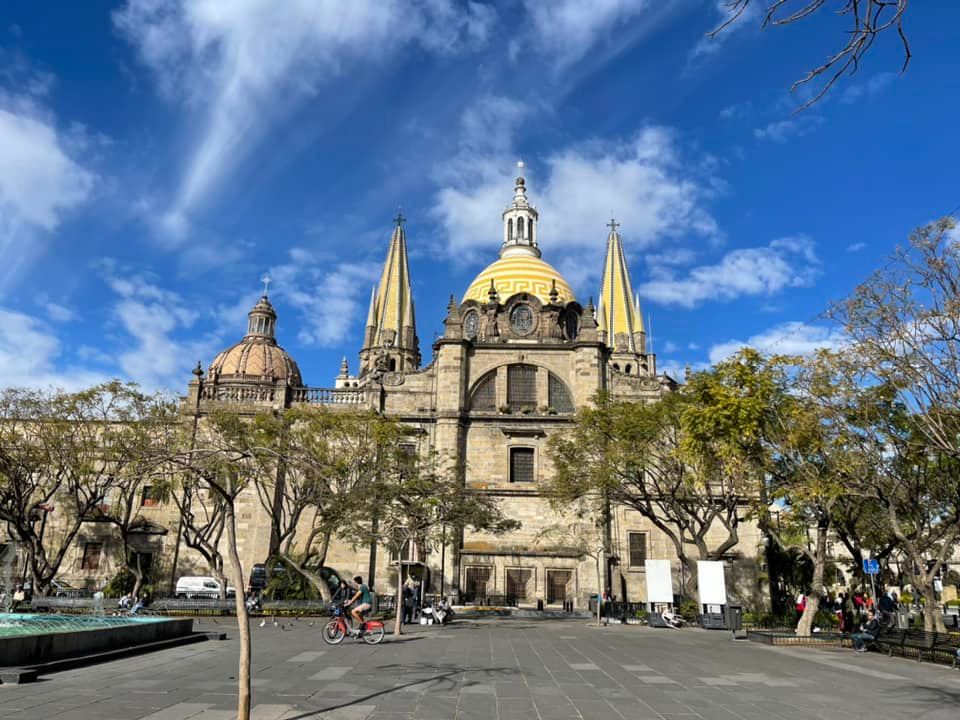
Our today's destination is the tourist port city Puerto Vallarta. A beautiful 300 km long mountain serpentine precedes it.
We went down to the ocean on the 70th Highway. The nature was changing drastically. The lower we went, the more vegetation we faced, the higher the trees were and the hotter the sun became.
Let's go toward the ocean!
Puerto Vallarta — Mazatlán
We've finally reached the Pacific coast!
Puerto Vallarta was a small tourist town with a seaport, hotels and restaurants, which sheltered us for quite an expensive price in a hotel in the second line from the sea. The service included a very light breakfast, a small pool with cool water in it and a kettle without any tea in the room.
In the port you can hire a boat or yacht for any taste and price, go fishing to the ocean by it, go diving or just buy a 4-hour observing excursion of humpback whales that come here in winter for mating dance.
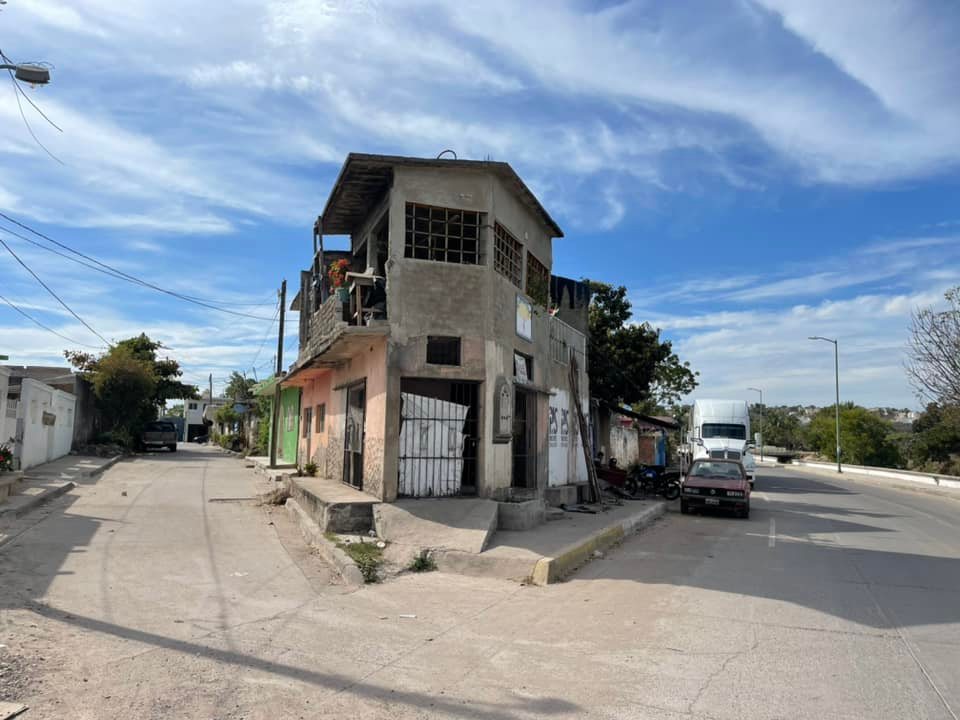
These are the streets of a small town, which doesn't have a memorable name.
We wanted to experience as much as possible at once, but we don't have time for all these nonsense things, since we have gone only half way to our final goal, the Copper Canyon.
There are cute girls in Mexico, but you may meet them rarely.
Therefore, the only thing we managed to do was to swim in the ocean. The following morning we headed to our next intermediate point — another popular resort town Mazatlán, whose peculiarity is a chic 17 km long embankment. It's called the "Pearl of the Pacific Ocean".
The Mazatlán embankment tonight.
Half of 450 km of today's journey, we walked along country roads and villages, facing poor people living. Unfortunately, the poverty level is very high in Mexico.
In Mexican villages such simple structures made of sticks and reeds can be often found.
On both sides of the highway we were seeing fields of sugar cane, blue agave, palm trees and barbed wire fences from time to time. The air temperature reached +35°C.
The reed is actually huge. It's higher than 4 metres and its trunk is quite rigid, like the hemp or the corn ones.
Mazatlán → Durango
Today I drove along one of the most beautiful roads in Mexico (and in my personal rating it will definitely take one of the the top positions in the list of the most beautiful roads in the world). The 40th motorway from Mazatlán to Durango appeared to be 300 km of delight!
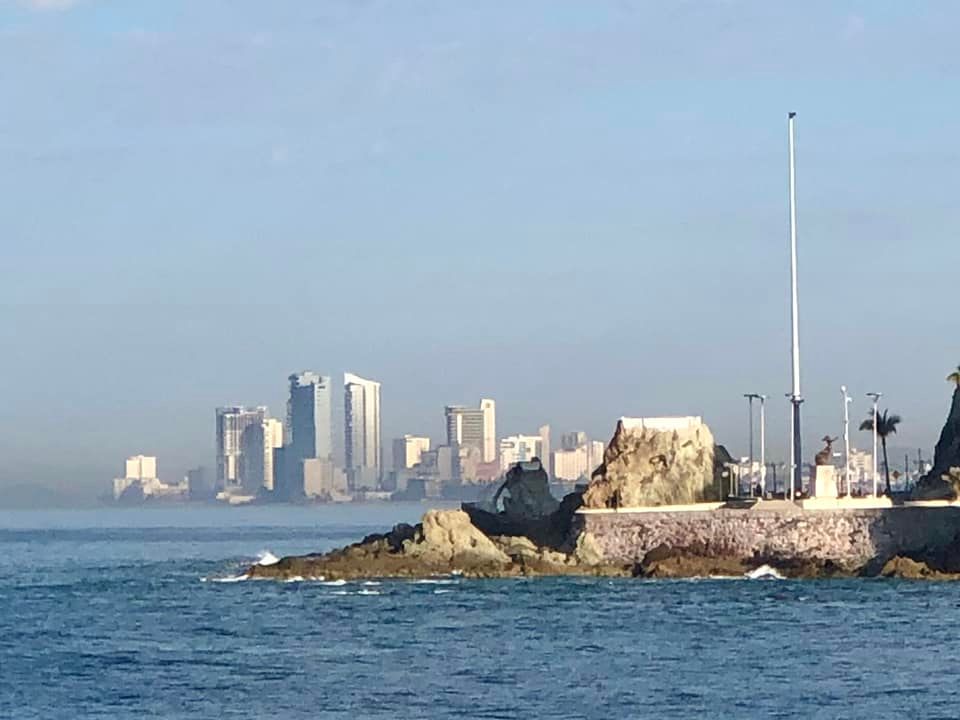
Mazatlán is a wonderful tourist beach town where you can have a perfect time to relax. But I'll continue on my way!
The asphalt is almost perfect, there are few cars, a thousand smooth turns and height differs from 0 to 2370 m. Just enjoy stunning views on all sides!
The road seems to be laid specially for motorbikers. I haven't experienced such a wonderful feeling for a long time.
A fine sunny weather, a riot of vegetation, mountains and rocks of bright various colors, the pure mountain air and the scents of pine tree needles turned into one unforgettable adventure and incredible pleasure!
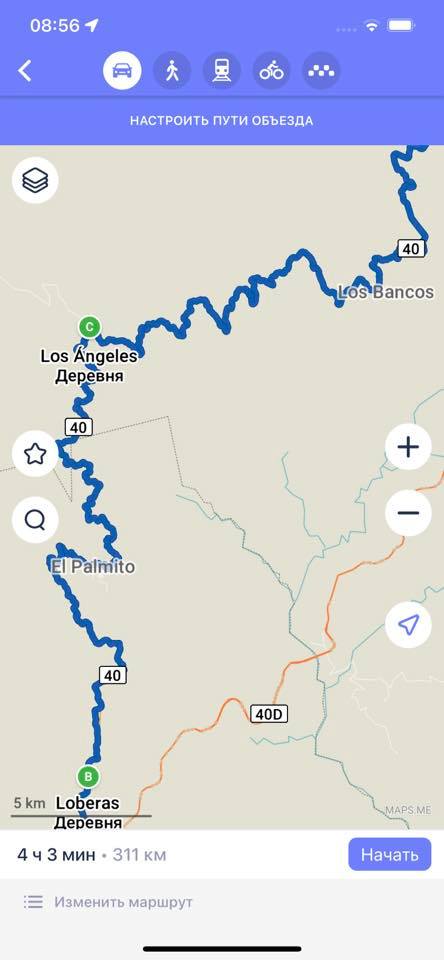
This is what Ruta 40 is. Amazing!
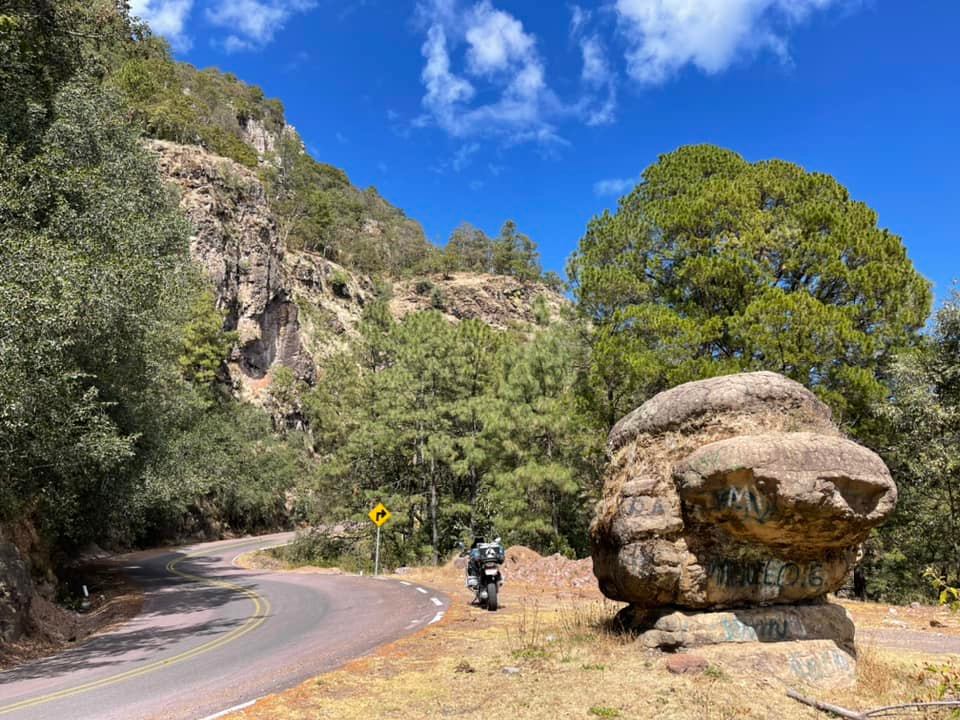
There are almost no straight sections on the motorway. That's why the tires are erased equally.
The 40th route can be driven through slowly in five hours. But why to drive through it in five, if we can do it in eight hours?
The rocks are very different in colour, it changes from white to orange and burgundy.
Some sections of motorway 40 are cut through the rocks.
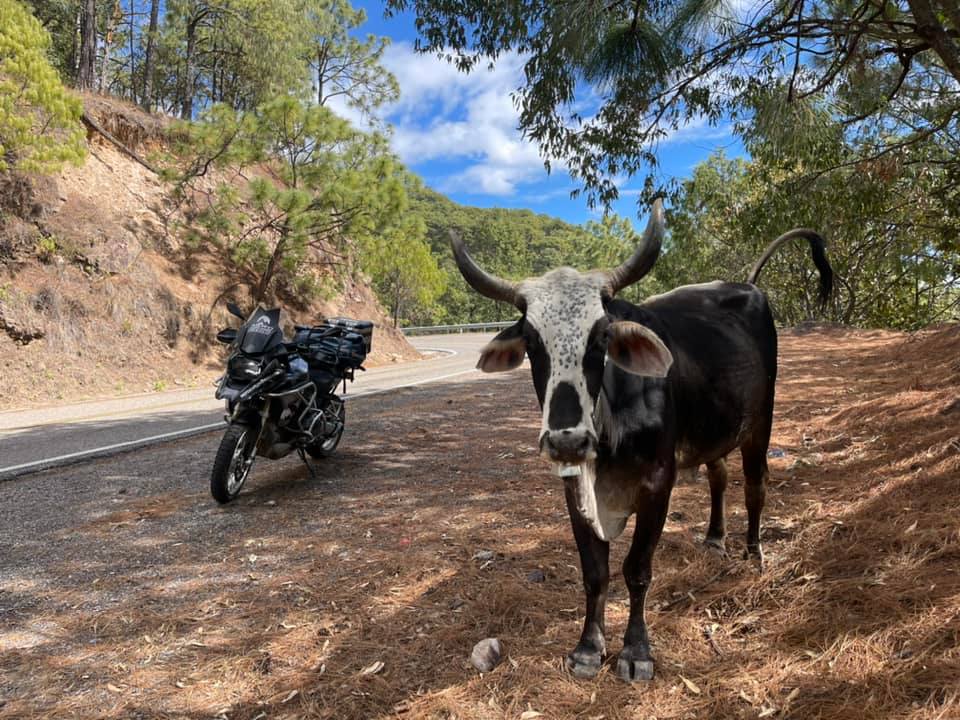
In a 300 km distance we passed by several small villages, one town, met two or three dozen cars, a few people and a cow.
I didn't count how many stops I had and how often I had come back to take a photo or record a video, but definitely more than a dozen times.
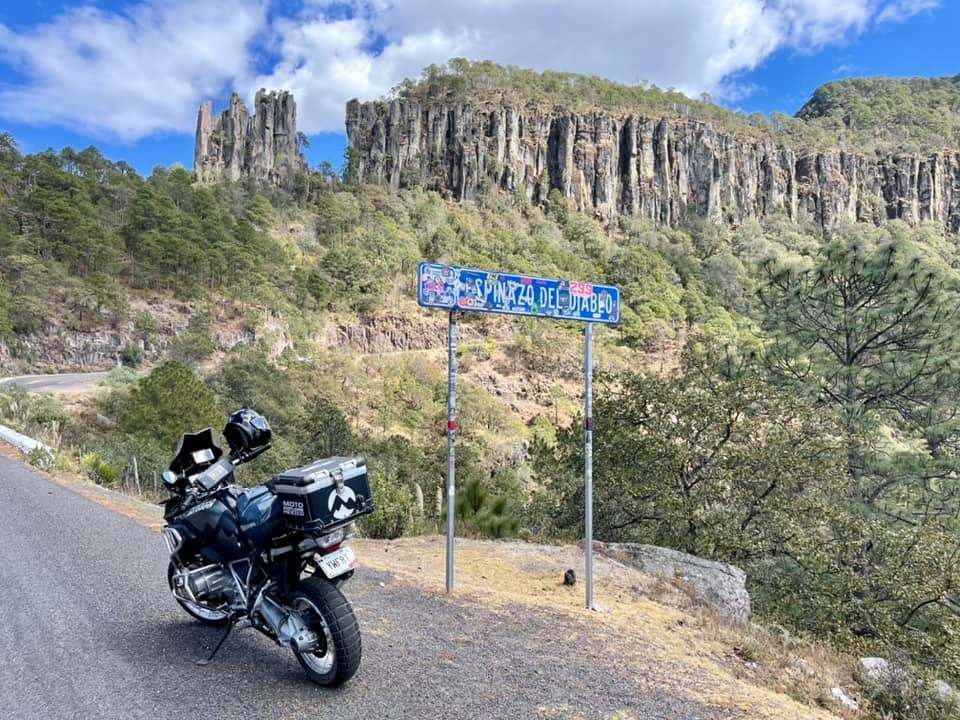
Espinazo del Diablo is translated as Devil's Fang. Fair enough!
We arrived in Durango at about 5 p.m., traditionally walked along the central streets and squares of this small but lovely city with almost 500 years of historical background. Then we had dinner and went to bed. Tomorrow we're going for a long trip towards the Copper Canyon, which is our main goal of interest.
Durango → Hidalgo del Parral → Urique
So we are approaching the peak point of our Mexican adventure, the Copper Canyon. And we decided to start getting to know it with a small village lost in the mountains, Urique.
From Durango to Urique there's an about 750 km distance. The first half, 400 km to the town of Hidalgo del Parral is an almost perfect flat track. Sometimes it is so straight as if the designer took a ruler and just drew a line on the map without hesitation.
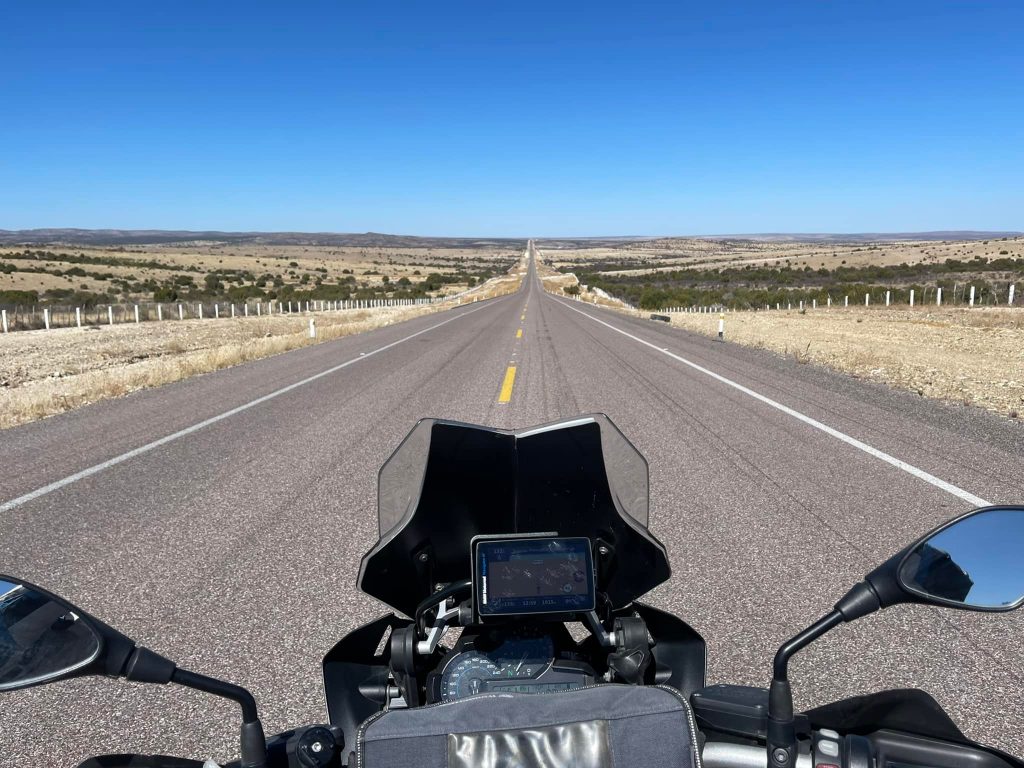
Since my friends don't like driving fast, I happened to arrive in Parral early alone and after having lunch in a small restaurant decided to continue on my journey to Urique. There were another 350 km ahead, it didn't seem to be much, but 80 km on the map were marked as a ground road.
Oh, I wish I had known what kind of road this was…
I could not have expected that it would be such a hard way. It included more than 80 km of rocky mountain serpentines with dozens of 180° turns, steep descents and ascents over rocks, scree, fords and bridges. And the whole way was at night in complete darkness. On the left there was precipice, on the right there were rocks. The major part of the road had been cut through the slopes of the mountains and somewhere it was so narrow that two cars wouldn't part. In addition, large gullies had been simply littered with stones.
Another problem was the fact I was running out of fuel and the area was quite deserted, all the way (I drove these 80 km for more than three hours) I met only one old pickup truck. Even the locals don't drive here at night. Certainly, it was rather a risky idea to go alone in the middle of nowhere at night, not imagining what a murderous road would be ahead. But who would have known?
Anyway, I was lucky again. In one of the Indian villages, I managed to beg for 5 litres of gasoline, which saved me, since I would have surely run out of fuel before my destination.
I reached Urique at 10 p.m. (it gets dark there around 7 p.m.) all sweaty, tired, dusty, but happy because finally the wheels of my motorbike rolled on the concrete pavement road and I could exhale with relief.
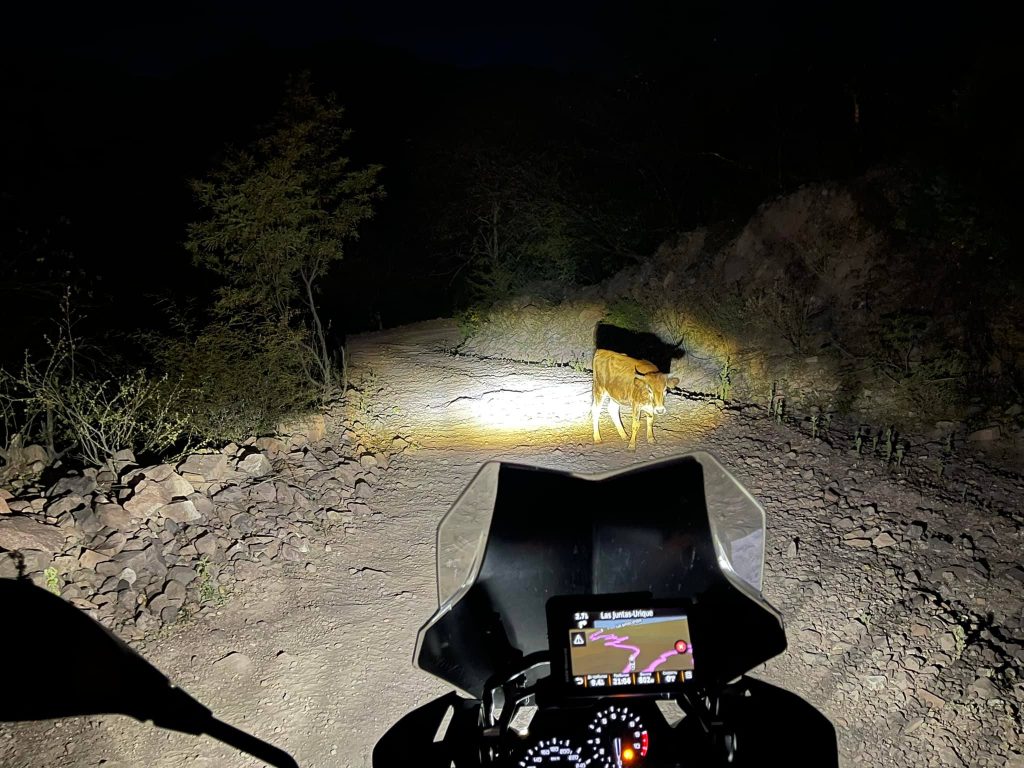
That's a pity I didn't see anything interesting in the total darkness, but today I will try to fill this gap.
Copper Canyon, Urique
Urikue is a pretty decent (by local standards) village, located on the riverbank on the bottom of the canyon of the same name. It is the deepest in the world, by the way.
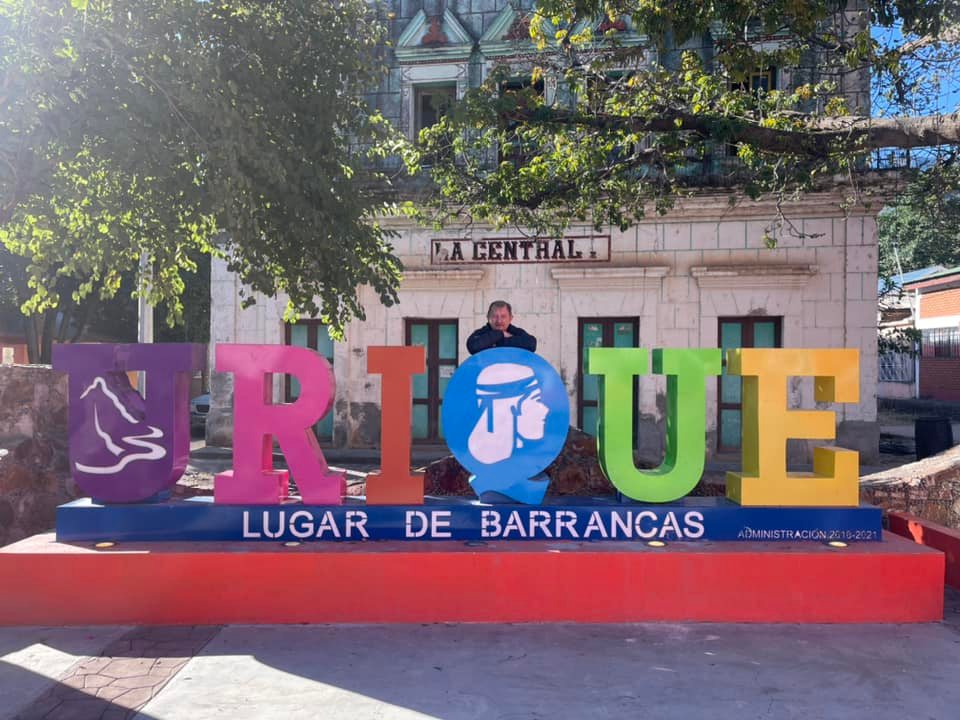
You can find here everything you need: a tidy petrol station, hotels, shops and central streets, covered with concrete.
Last night I arrived in Urique and stayed at the wonderful Villa Urique hotel, which has a swimming pool and a cozy courtyard. However, the water in the pool is cold, as the temperature is not higher than +10 degrees at night.
The day was devoted to exploring the surroundings, focusing on two small dead-end villages on the bottom of the canyon. They are really not big. In one of them, El Naranjo, there live 15 families, in the other one, Guadalupe Coronado, even less.
You can reach both villages by going along the ground stone roads, enjoing the splendid sights of the canyon, river Urique and the cliffs.
We met cows, horses and the locals on our way.
This is a boy carrying a piece of wood on his shoulder, followed by his father with a bundle of firewood. The merry little girls in bright dresses hide their faces. Many Indians do not like being photographed.
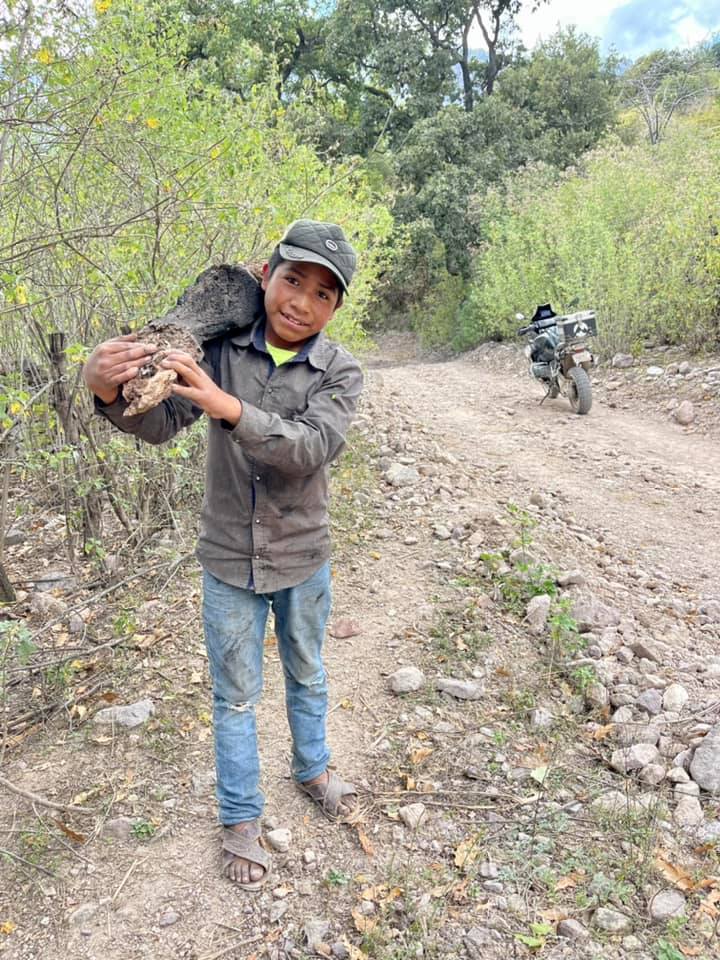
"From where's the firewood?"
"From woods, cannot hear? My father is chopping, I'm taking'em away".
An old Indian in a cowboy hat is sitting on a log and watching me go. It seems that life in these villages flows slowly and hasn't changed since the times before the arrival of the Spaniards. In the evening my friends arrived. They went the same way as me, but in daylight. Both them were delighted! :)
Copper Canyon, Creel
Creel is perhaps the most colorful and unusual village in the Copper Canyon area in northwestern Mexico. It is located at an altitude of 2350 m and the climate here is appropriate.
The way from Urique is going up. Then you will see magnificent views from the top!
Such crosses are very common beside the roads. The roads are really dangerous! If you gape a little at some sharp turn, next moment you are will already fall into the abyss.
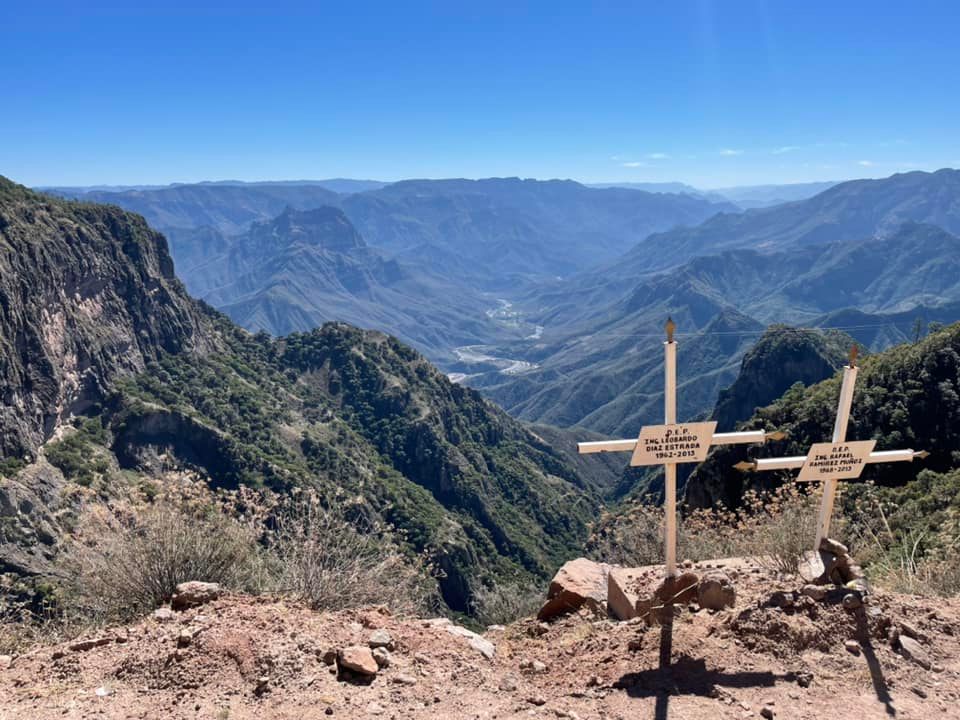
When we came to our motorbikes in the morning, we found them white with frost. Yeah, the temperatures below zero at nights are a common occurrence here.
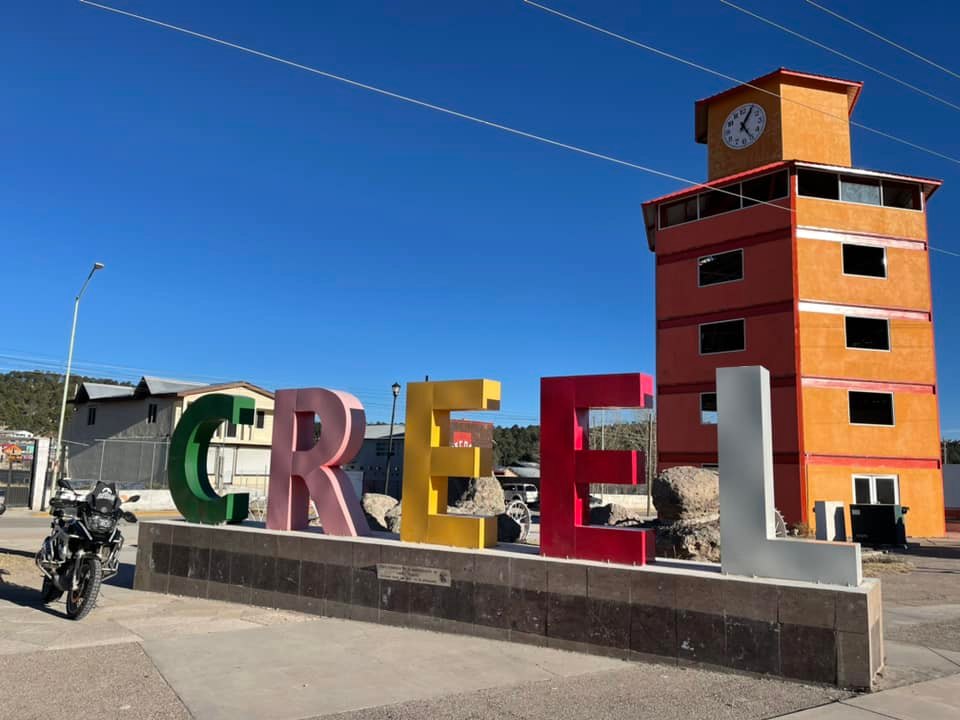
The village is not small, the population is about 5,000 inhabitants and it is mainly focused on the tourist business. There are many hotels, restaurants, cafes, souvenir shops, travel companies, etc.
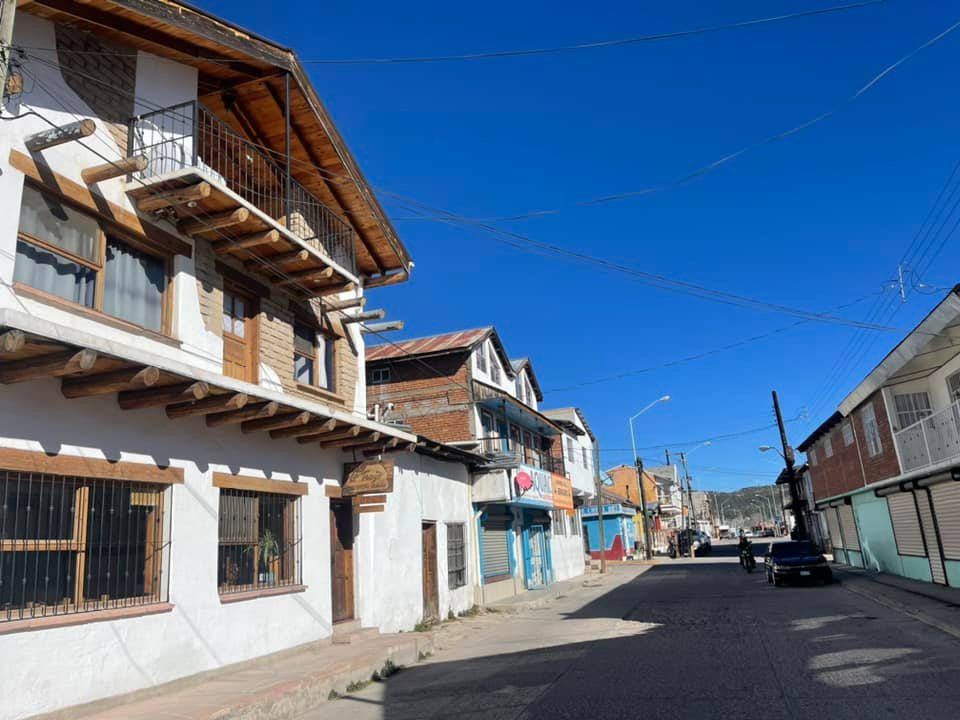
The main street is stunningly picturesque! There are bright houses, catchy signboards, several installations and very charismatic people.
This is a man in a cowboy hat with a guitar, chanting some melody. And this is an Indian woman in a bright blouse and a multi-colored skirt, who is walking at a brisk pace and carrying a baby on her back in a scarf.
The 10 year-old Indian boy and girl are offering the pedestrians to buy some handmade jewelries.
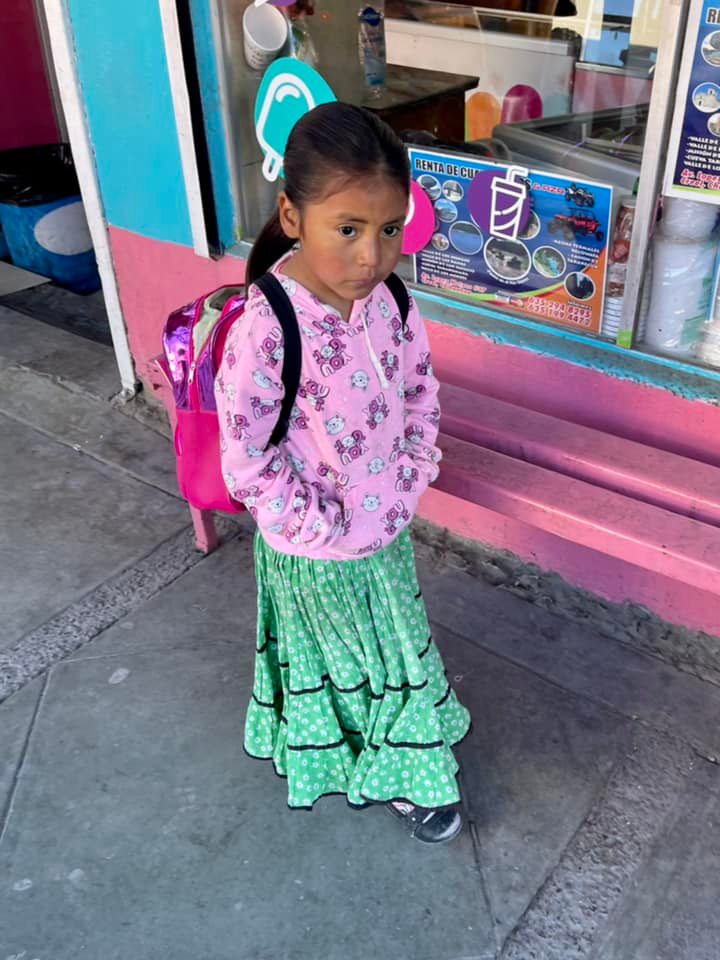
Indian children have interesting and cute appearance, unlike the adults. ;)
In general, there are a lot of the Indians in the town, but it's no wonder, because this territory had belonged to the aborigines of the Tarahumara tribe since the ancient times. Many of them are still living in a communal way of life in remote villages, minimizing the impact of civilization.
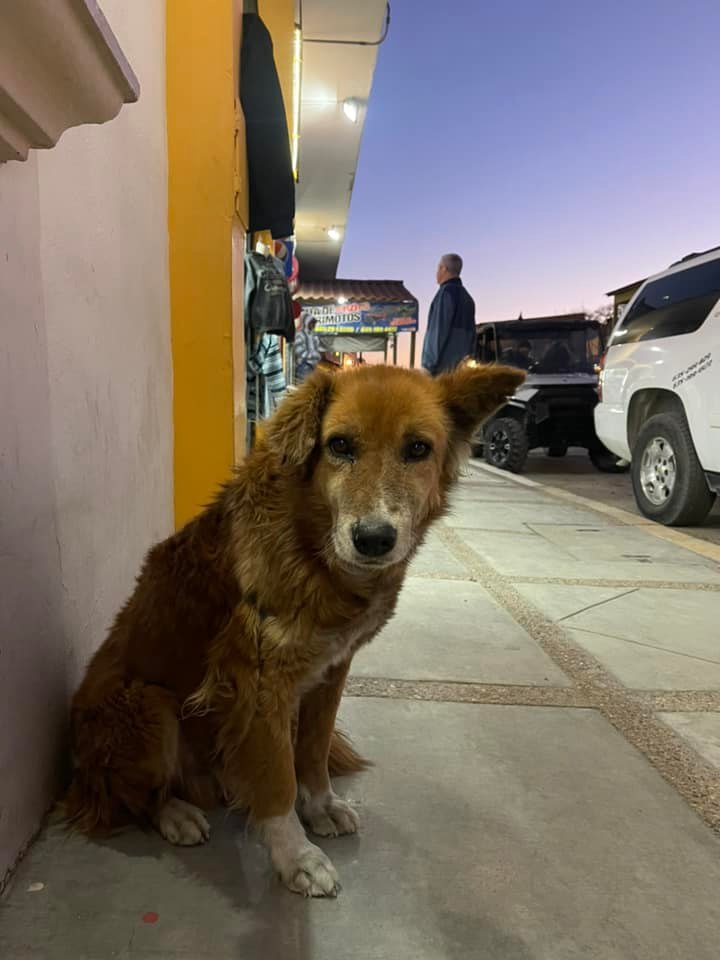
In the village there are a lot of dogs and no cats at all. Also we saw a large number of cars, especially old American pickups.
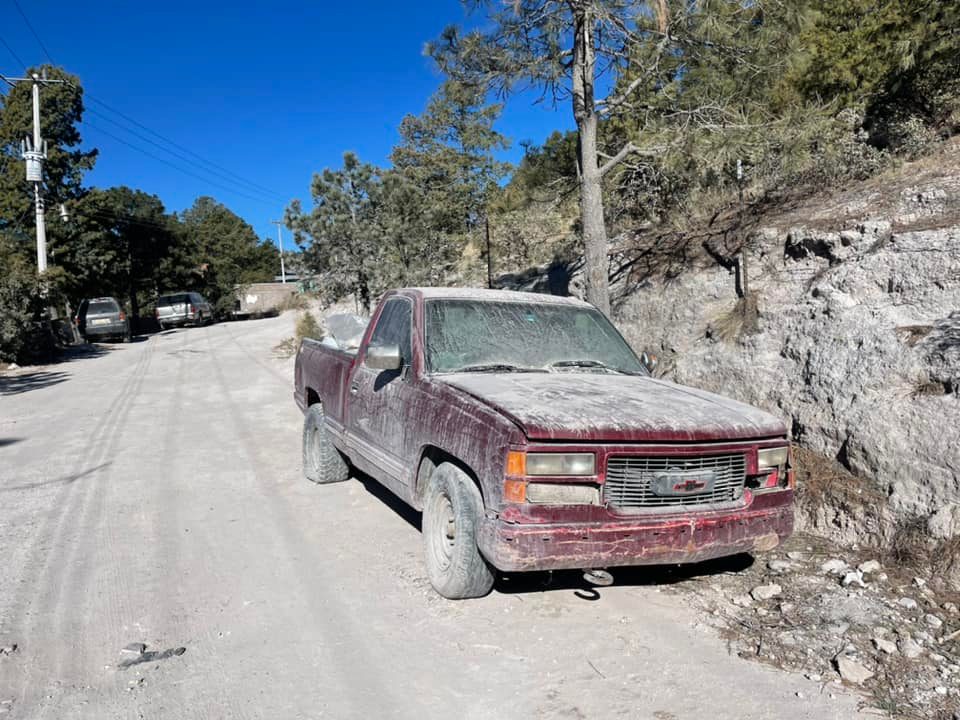
Some of them are so ancient that they should be described as just a pile of scrap metal that is moved by some supernatural power.
The famous railway runs through Creel, originating from the Pacific coast and passing through the Copper Canyon at an altitude of 2.5 km. The train from Los Mochis to the Chihuahua takes 15 hours and the views from the window are said to be amazing!
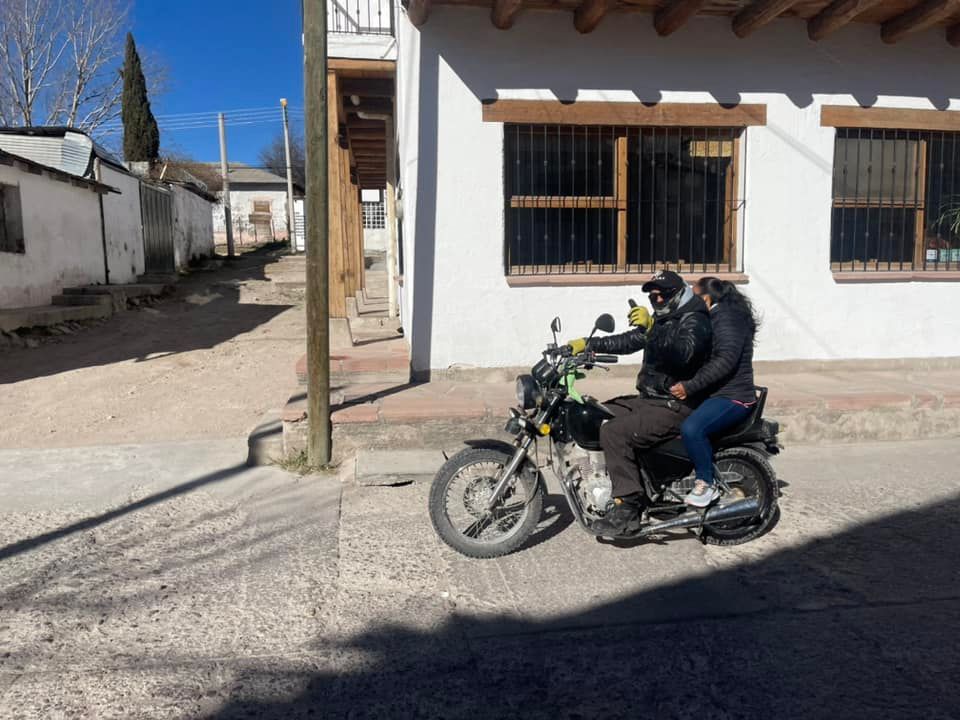
We stayed in Creel for two days and really didn't want to leave, as it felt so heartwarming and cozy here!
Copper Canyon, Bаsasеachic Falls
Bаsasеachic Falls is the second largest waterfall in Mexico. It is situated 130 km from the town Creel.
From a height of 246 m, the water falls into a deep canyon, forming a small lake below. Now it's the dry season and there's not much water, but the view of the canyon is impressive!
According to our tradition, we have left a small gift in this beautiful place for those who will visit it after us.
Good luck finding it!
Chihuahua
It is the northernmost point of our journey in Mexico.
We are leaving Creel in the morning. It's quite frosty!
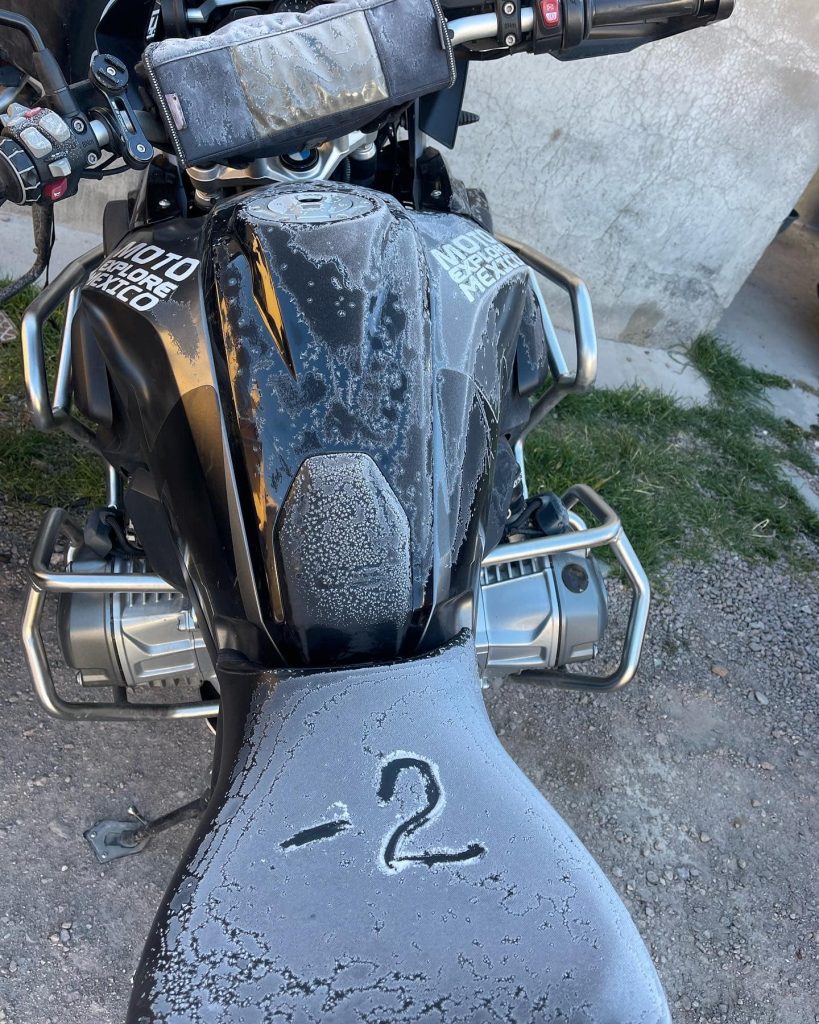
There are just about 200 km to the USA border. And we are seeing car accident scenes regularly.
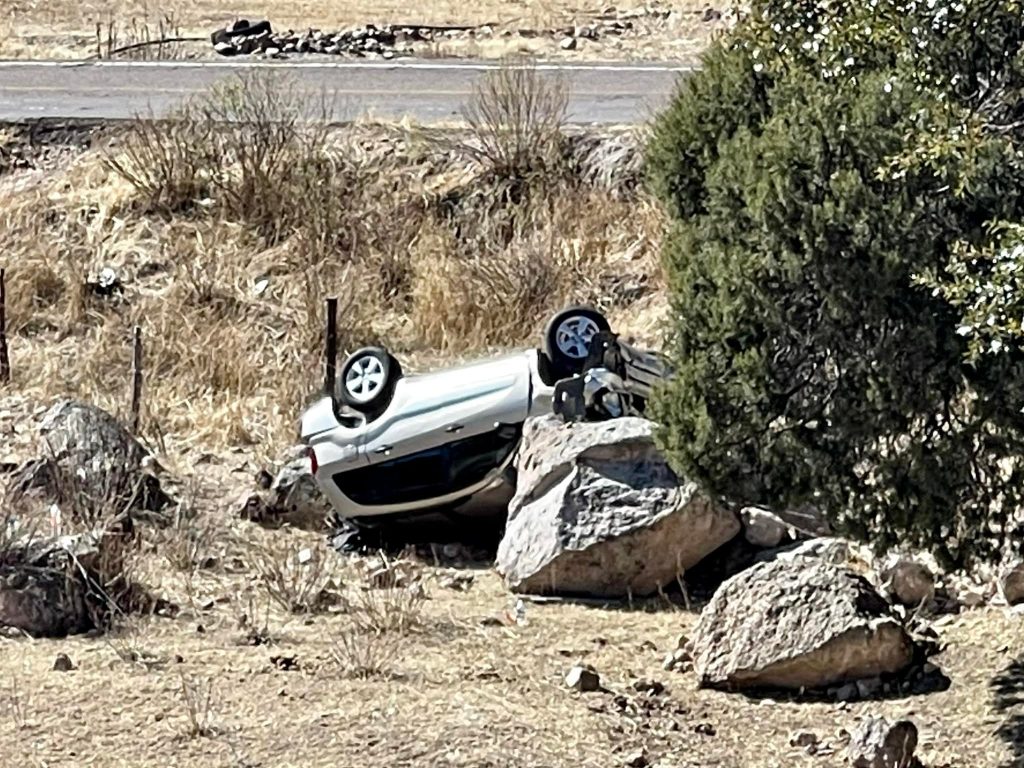
Recently this city was considered to be one of the most criminal cities in Mexico because of its location on the drug trafficking route from South America to North America.
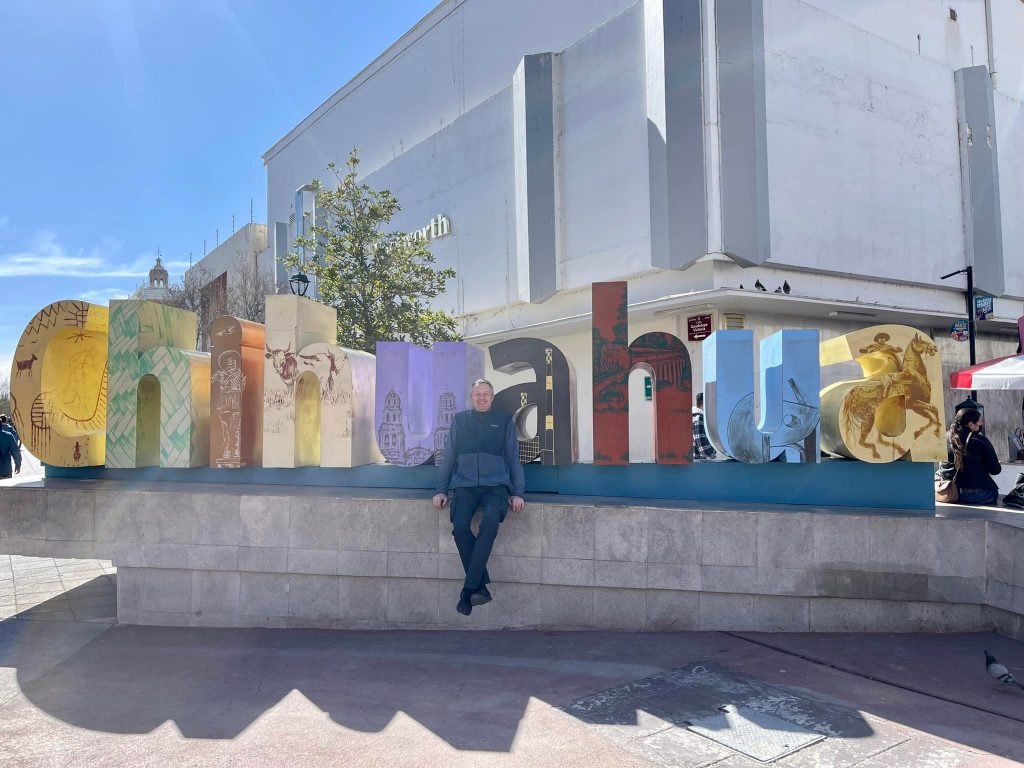
Now this spirit is felt only because of an increase in military patrols on the roads. Usually it is one pickup or a column of cars and several well-armed and equipped fighters are in each of them.
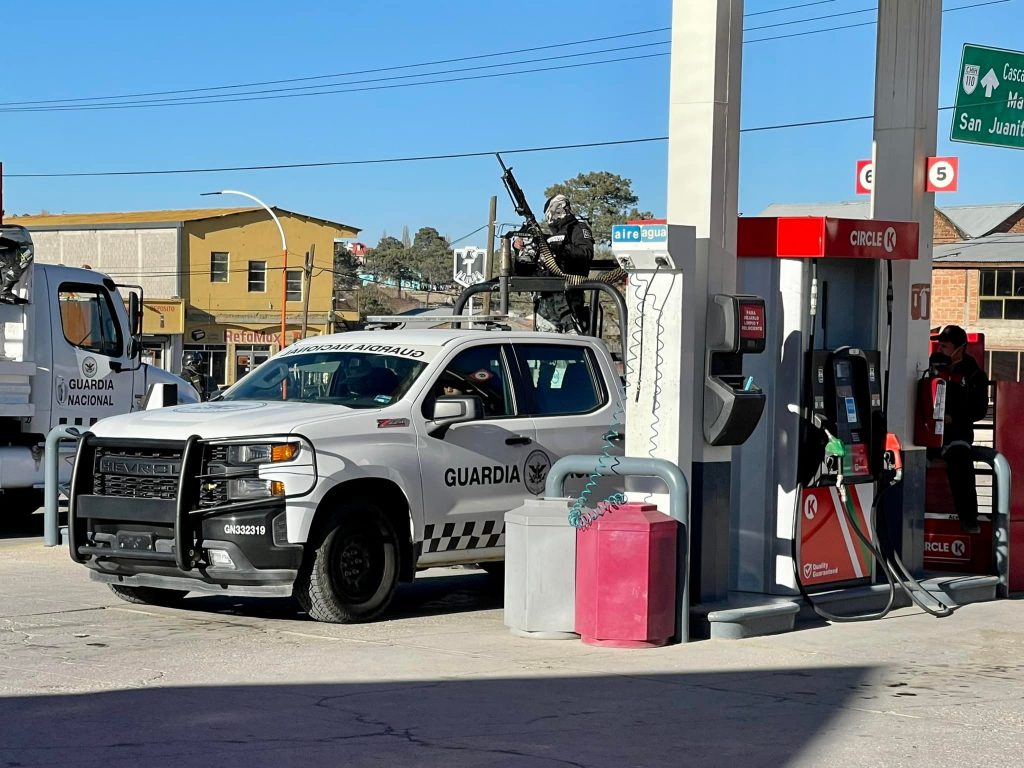
Usually one of them stands in the back, and in front of him in a special machine there fixed a gun with a hanging ribbon, loaded with cartridges. These patrols look quite impressive.
Everything is fine with gasoline in Mexico, but it is not cheap. Its average price is 85-90 roubles (in our currency). At the same time we were surprised with a large number of old huge American pickups with gasoline engines. The thing is they have a huge expense! And Mexico is far from the United States in financial comparison.
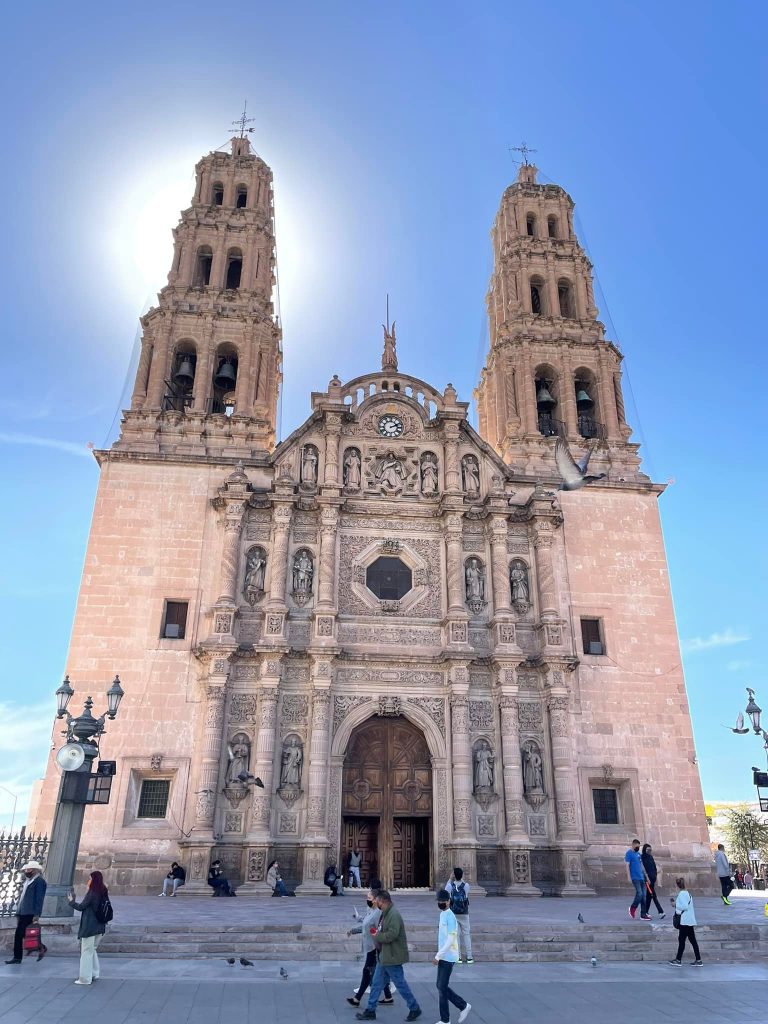
The cathedral is very tall and beautiful.
The city with a rich history, culture, architecture is currently the industrial and cultural centre of Mexico. Many people know and love small dogs of the Chihuahua breed. But did you know that these dogs were bred here and named after the city? Actually, to pronounce "Chihuahua" correctly, we should make a stress on the first "A" letter. But never mind.
After checking in we went for an evening promenade to the city centre.
The pedestrian streets are quite lively. You can meet everybody here: musicians, singers, artists, shoe cleaners, sellers of all sorts of stuff laying out their goods right on the sidewalk and Indian women and children begging for money.
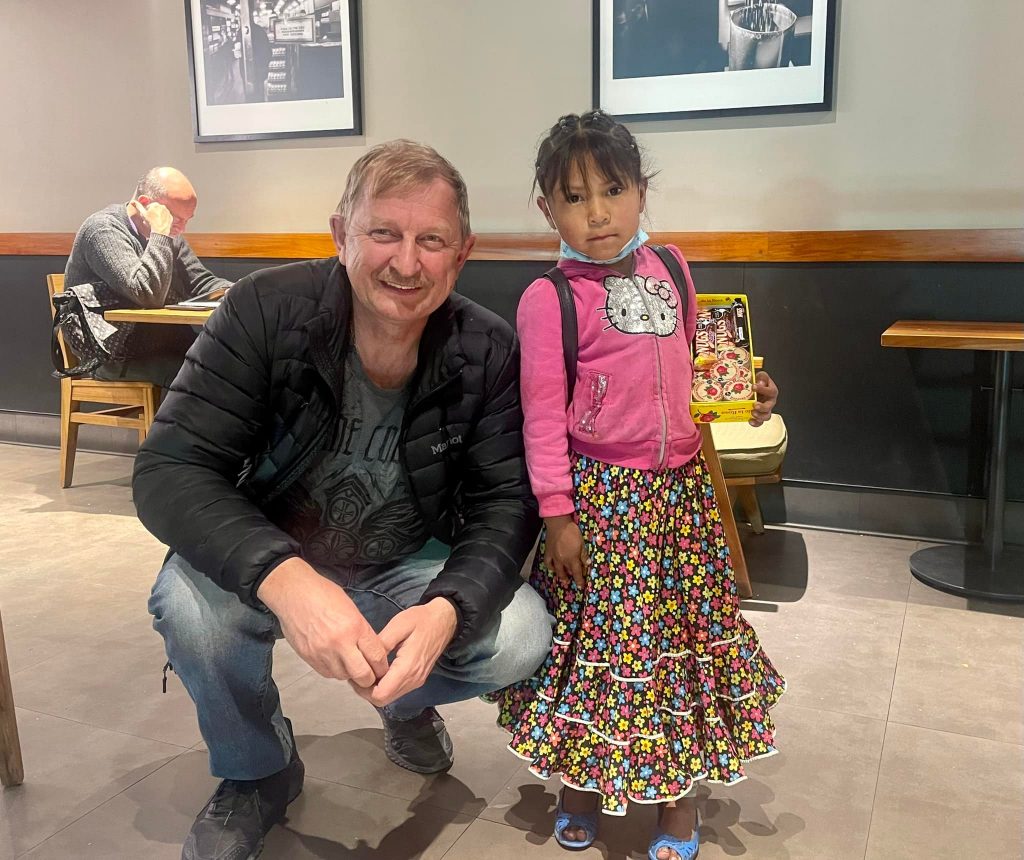
The Indian girl is selling cookies here. I paid her for the photo but refused to buy the cookies.
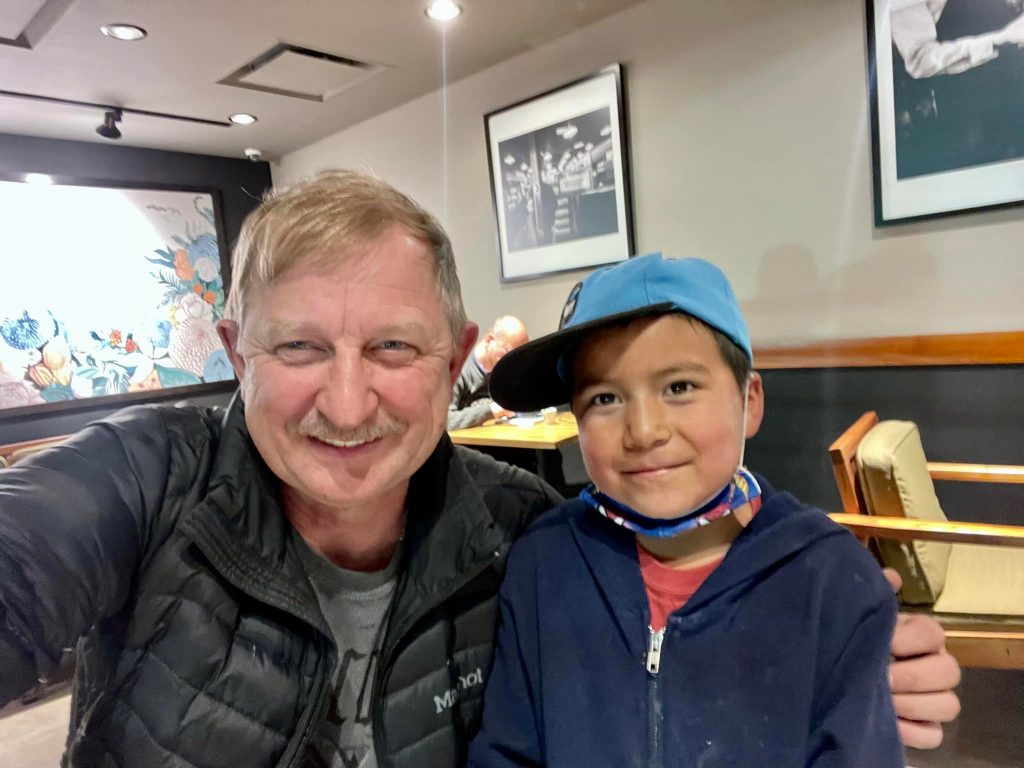
We went to Starbucks and finally had a cup of tasty coffee. It's weird, but it wasn't easy to find good coffee in Mexico. At petrol stations and in supermarkets like OXXO we could buy only some sweetened coffee drink with various additives from the vending machines. And we were fed up with it soon.
Tomorrow morning we're heading back.
Chihuahua → Gómez Palacio → San Luis Potosí → Tuxpan
In the morning we left Chihuahua and drove south-east along the toll highway. The road was perfect and with minimal traffic but the fares are quite high, even for motorbikes. A 500 km long distance along the highway section costs about 1200-1500 roubles. For cars you need to pay twice as much.
In the evening we arrived in Gómez Palacio, a small town, absolutely faceless and boring unlike San Luis Potocí, where we stayed overnight the next day.
Cathedral Square in San Luis Potocí.
This town is one of the most charming in Mexico!
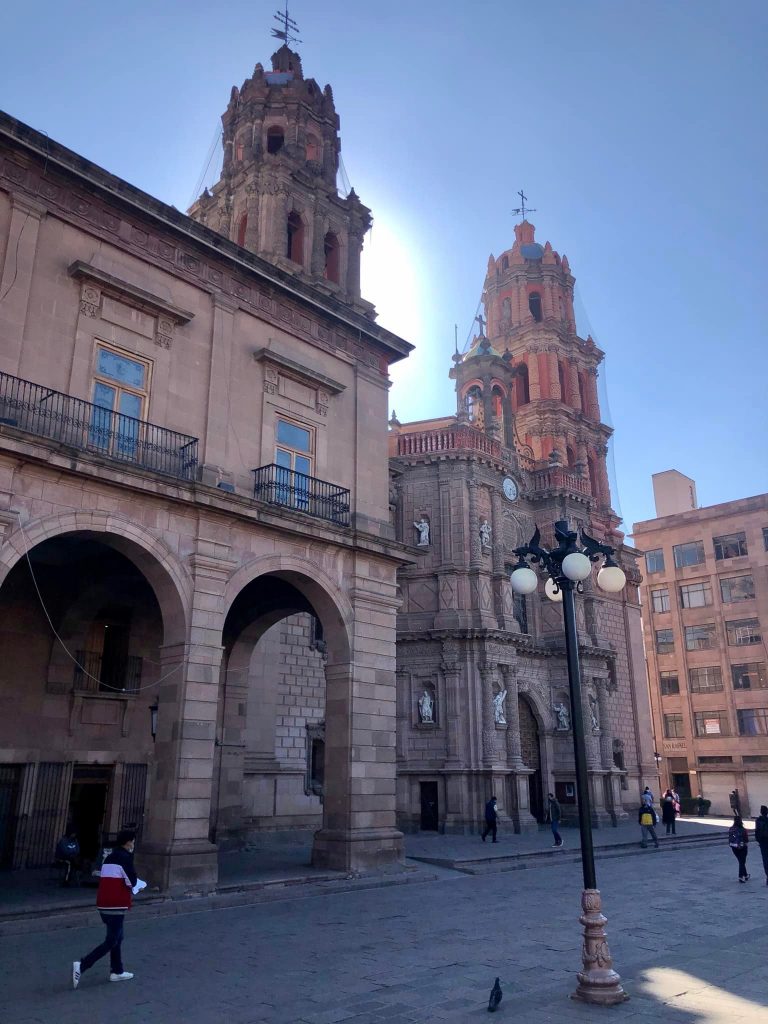
There are a lot of historical buildings, great temples, fountains and the streets are paved. It was an unforgettable experience to walk around the city centre!
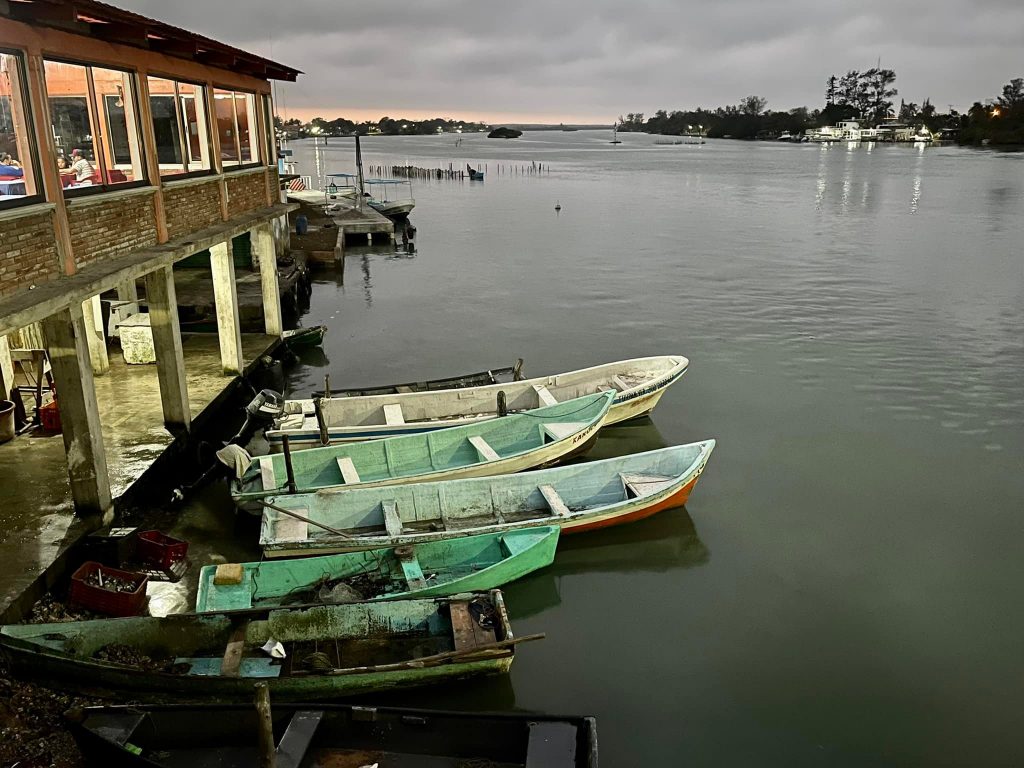
A small accident happened the following day. Oleg got into a pit on the asphalt at high speed and damaged the rear wheel of his motorbike. As a result, it was impossible to continue further movement with such a crack. But we were lucky to be near the city.
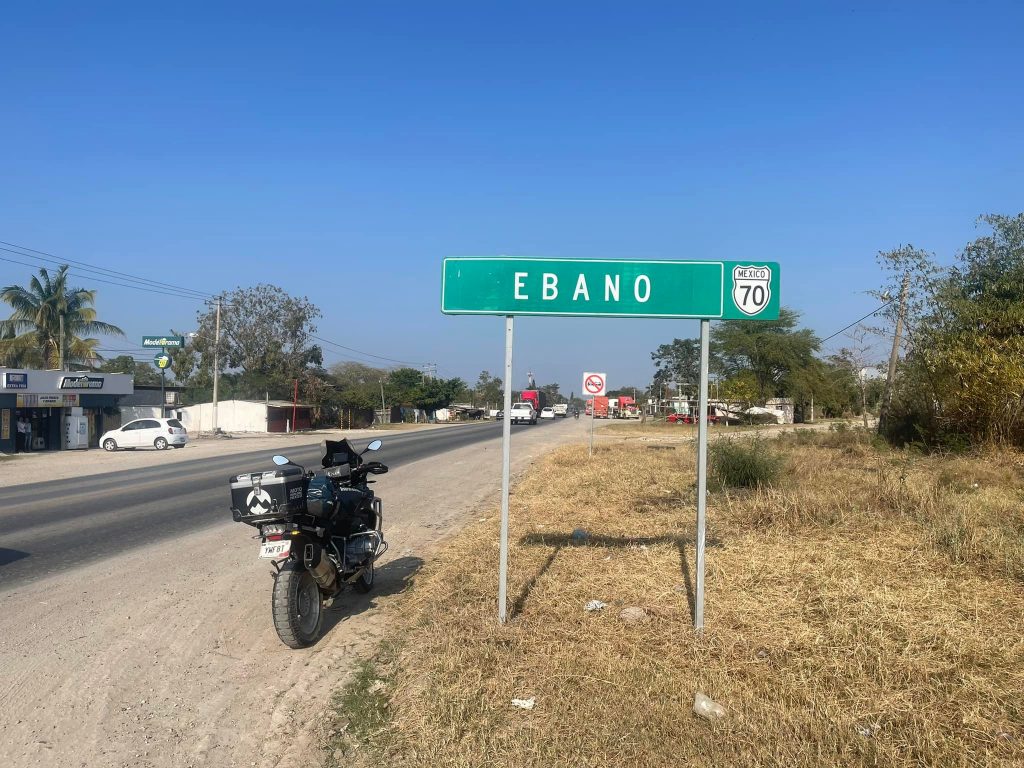
I thought it had been the name of some location, but it turned out to be a warning as in a few kilometres Oleg damaged the wheel disk.
First, we tried to straighten the disk with a sledgehammer and a log but made it even worse.
It took several hours to find a private master in some garage who managed to weld this damage with argon welding.
The next morning we were in a port town Tuxpan, enjoying the wave sounds of the Atlantic Ocean.
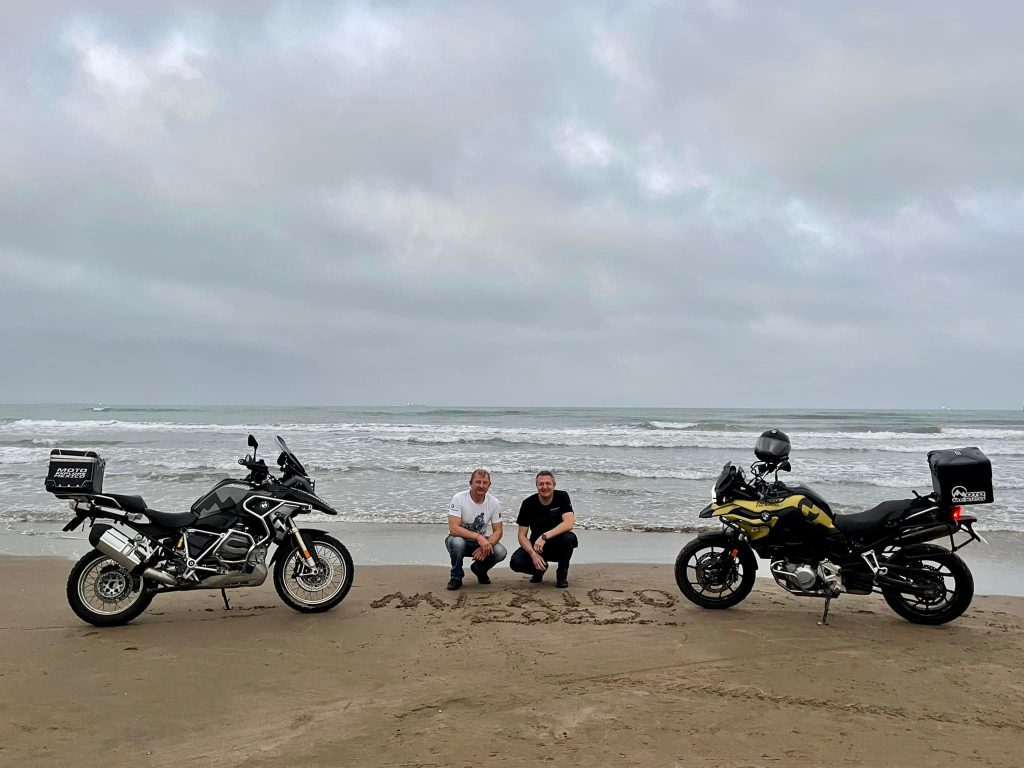
We were on the coast of the Pacific Ocean at the beginning of our journey, and now we are cutting through the waves of the Atlantic!
Taxco
Our Mexican adventure is coming to an end. 5620 km of a wide variety of roads, highways, off-roads, mountain serpentines, sandy beaches and city traffic jams are behind us.
Tomorrow we are returning the motorbikes and going back home in a new reality.
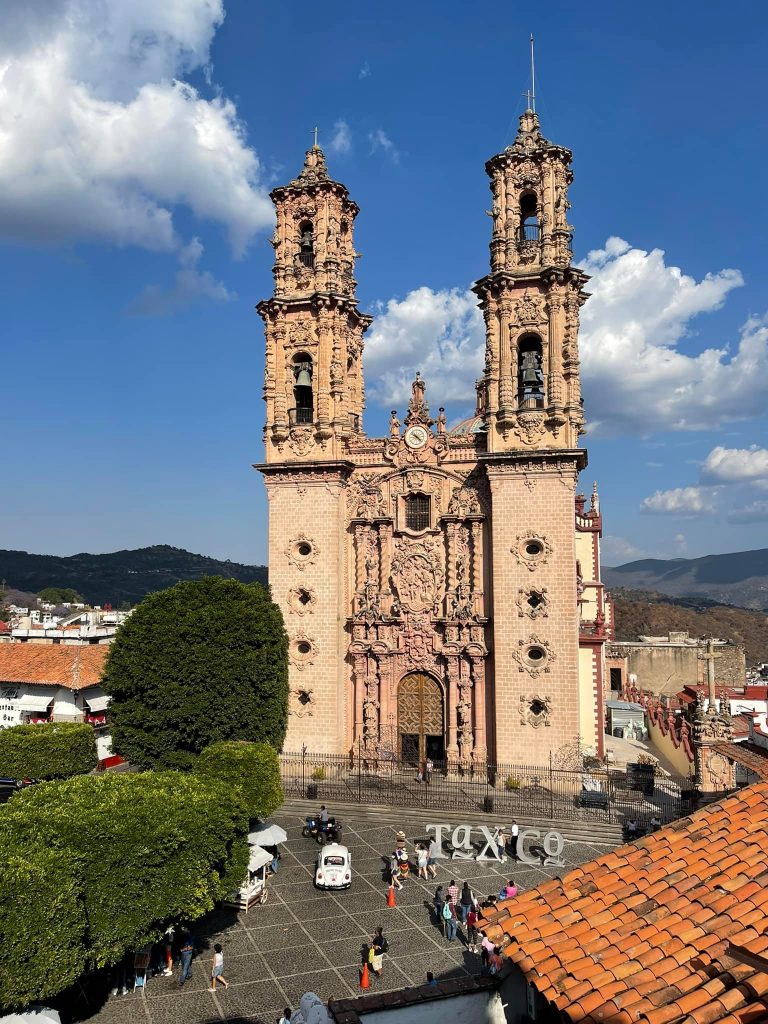
And today we decided to visit one of the most unusual small towns in Mexico, Taxco.
This fabulous town is located just in 180 km from the capital, on the slopes of a high mountain.
When you ride or walk along its narrow cobblestone streets, you get the strong feeling that you are in a miraculous city.
Toy taxi crawl up and down like small beetles. White walls of houses with openwork balconies and bright flowers, countless souvenir shops, musicians and singers, a majestic temple in the central square may remind you of beautiful southern Spain vibes.
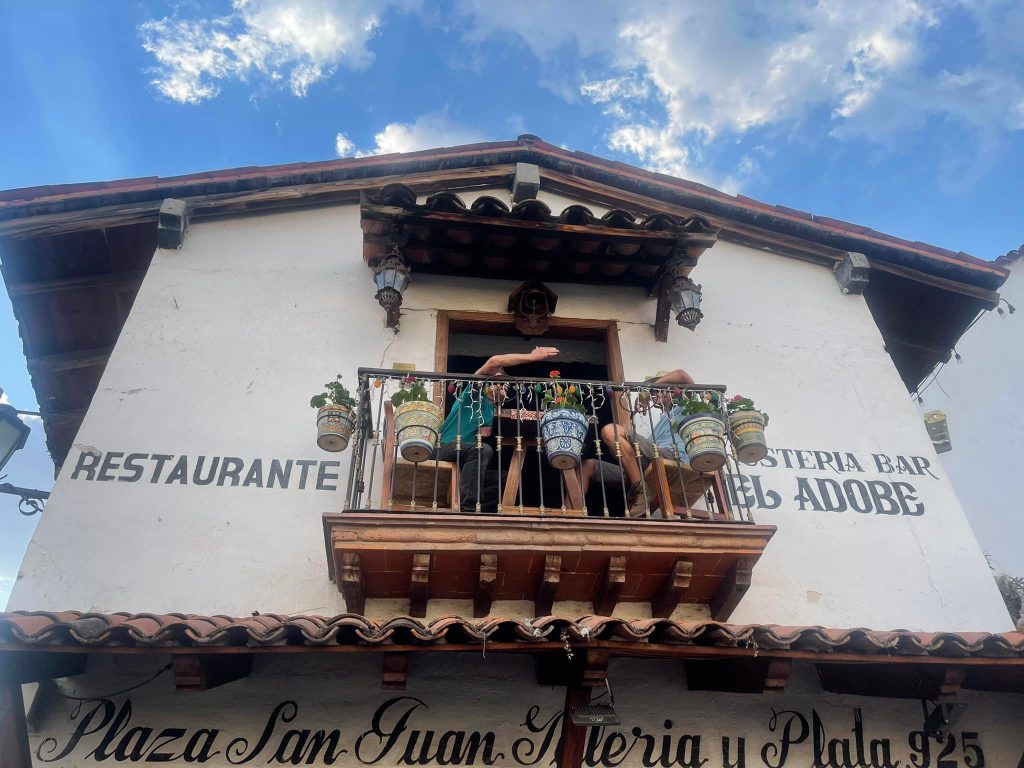
We climbed under the very roof of one of the houses opposite the temple and had some rest on a small balcony of a cozy restaurant overlooking the square, where artists in medieval costumes were dancing and singing.
A glass of white wine with tuna salad and a piece of delicious grilled salmon was all we needed at that moment.
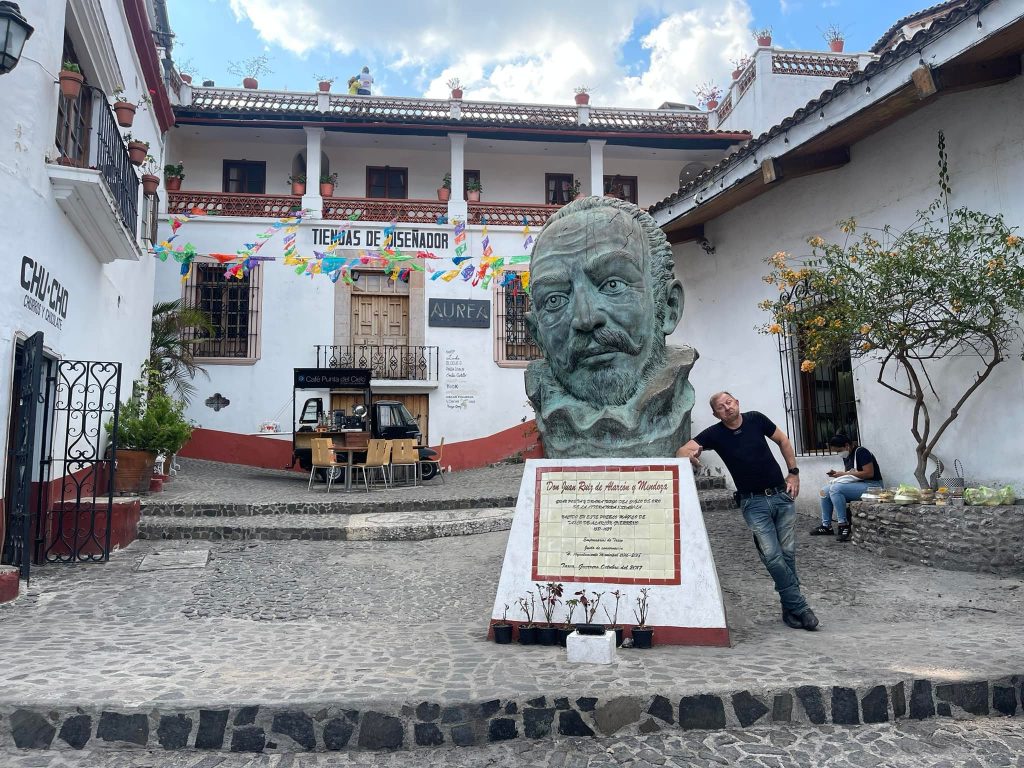
Goodbye, Mexico!
comments powered by HyperComments Cap-travel.ru
Cap-travel.ru